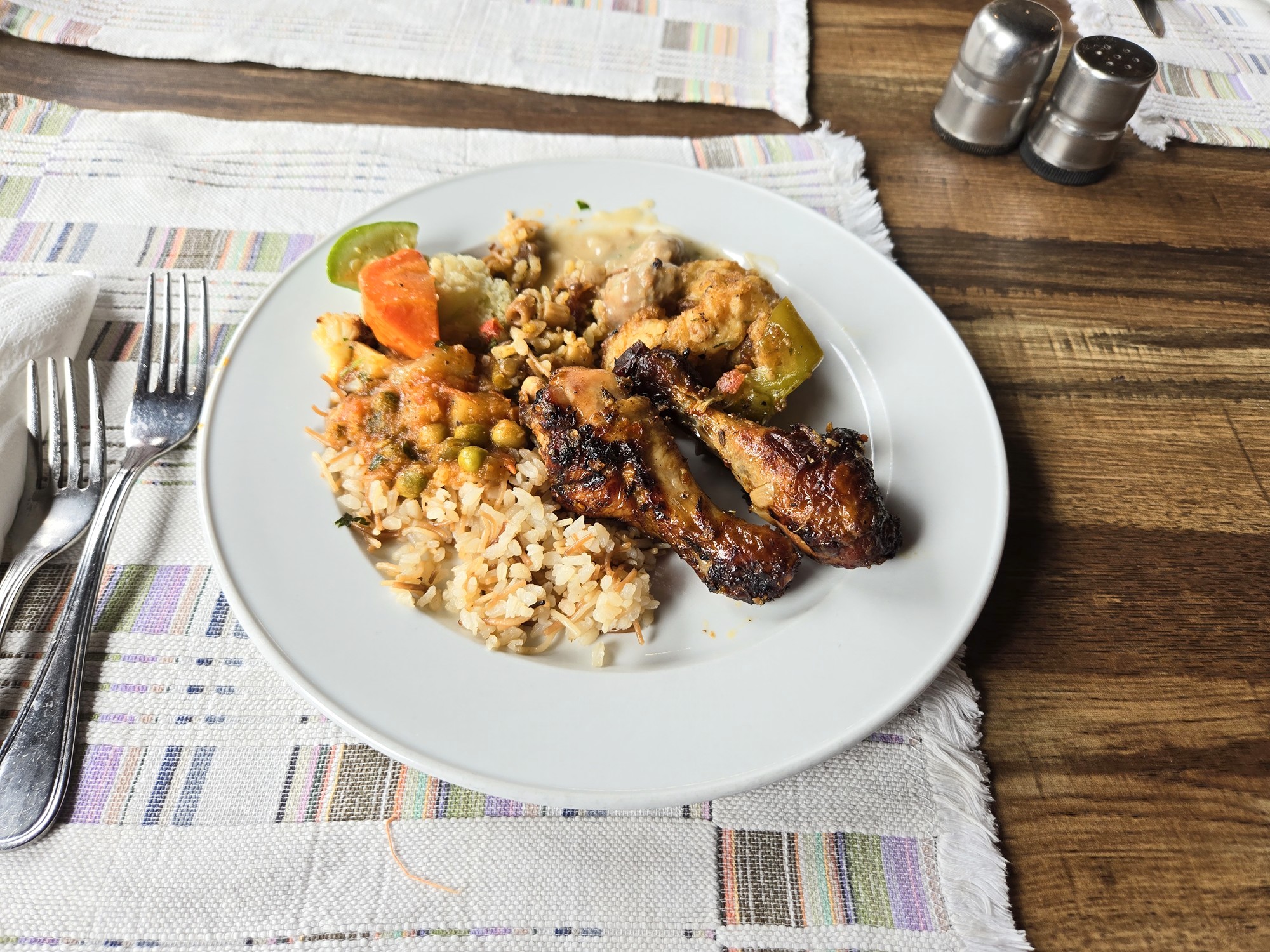Luxor West Bank, Valley of Kings, and Mortuary Temple of Hatshepsut, Egypt
Luxor’s West Bank refers to the western side of the Nile River in Luxor, Egypt. It is a significant archaeological and historical area.
Valley of Kings: Luxor, Luxor Governorate 1340420, Egypt
Mortuary Temple of Hatshepsut: Al Qarna, Luxor Governorate 1340420, Egypt
Date Picture Taken: February, 2024
I came across a group tour that covers both the Westbank and the Eastbank of Luxor. It’s uncommon to find group tours in Cairo, Aswan, and Luxor, as most tours are private. However, for a solo traveler like me, a group tour is a more affordable option, as I can split the cost with other group members.
I ate the buffet breakfast in the hotel.
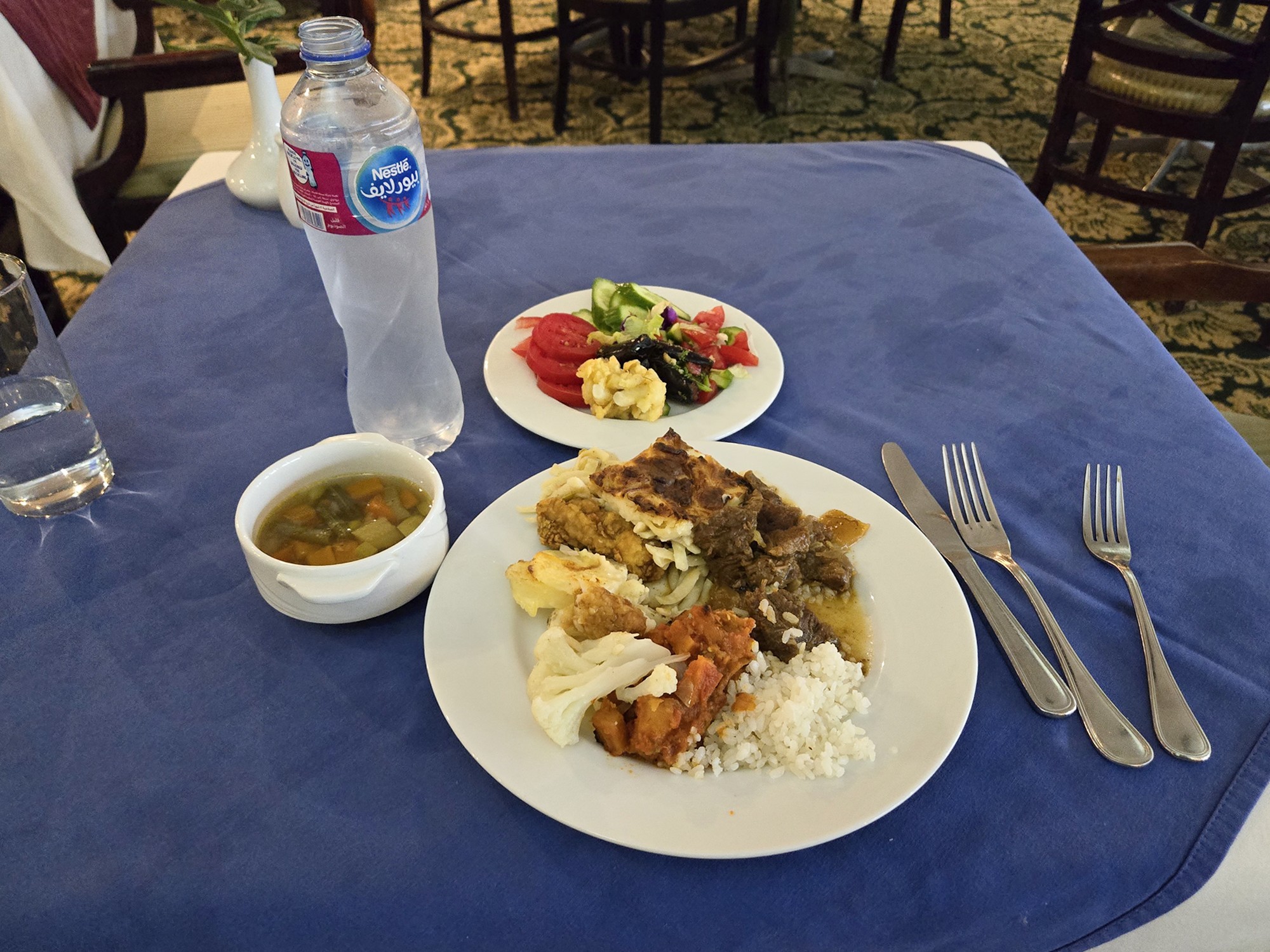
We arrived at the Valley of the Kings and passed through the typical bazaar area found at many tour entrances and exits.
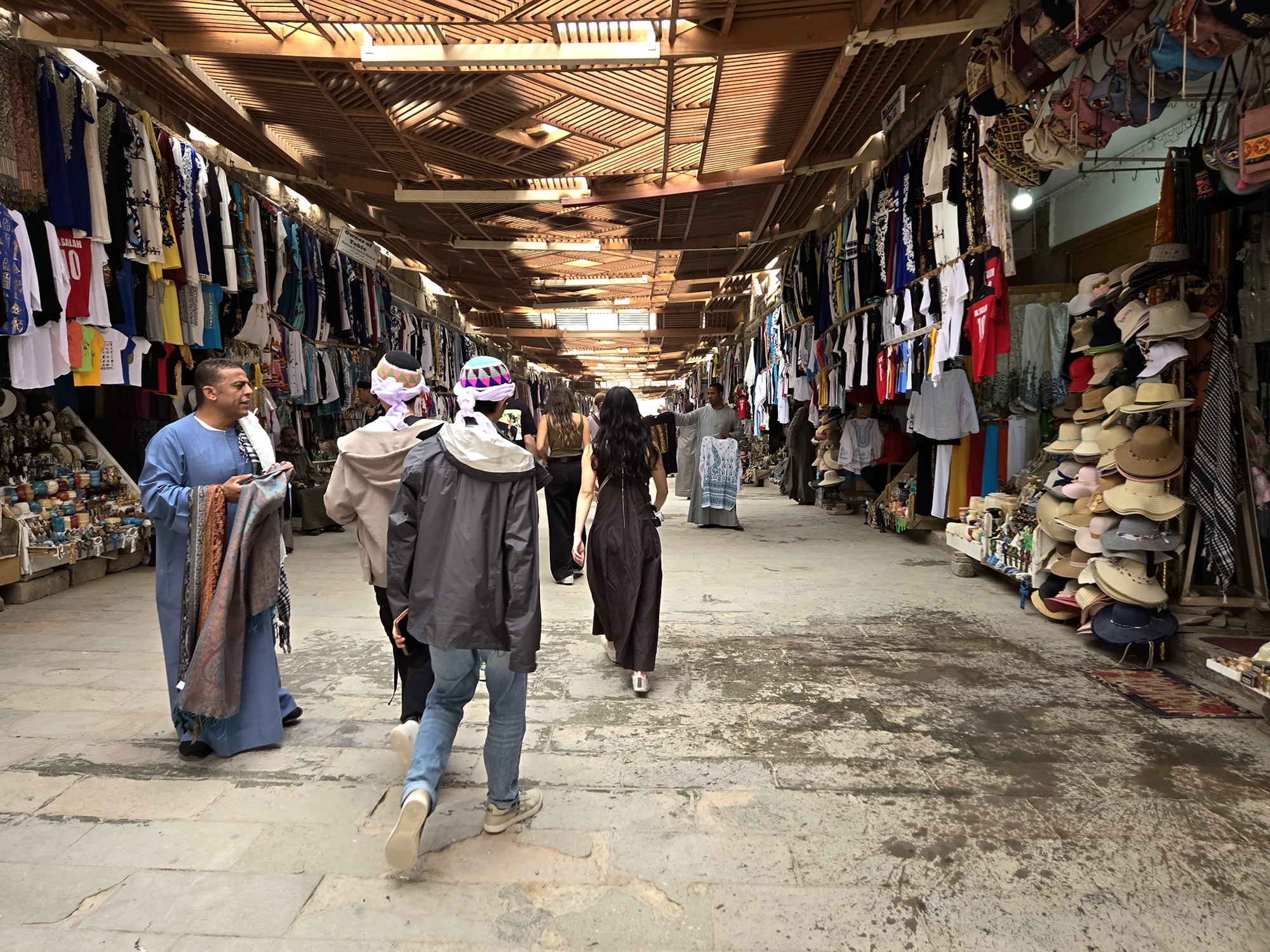
Went through the ticket terminal
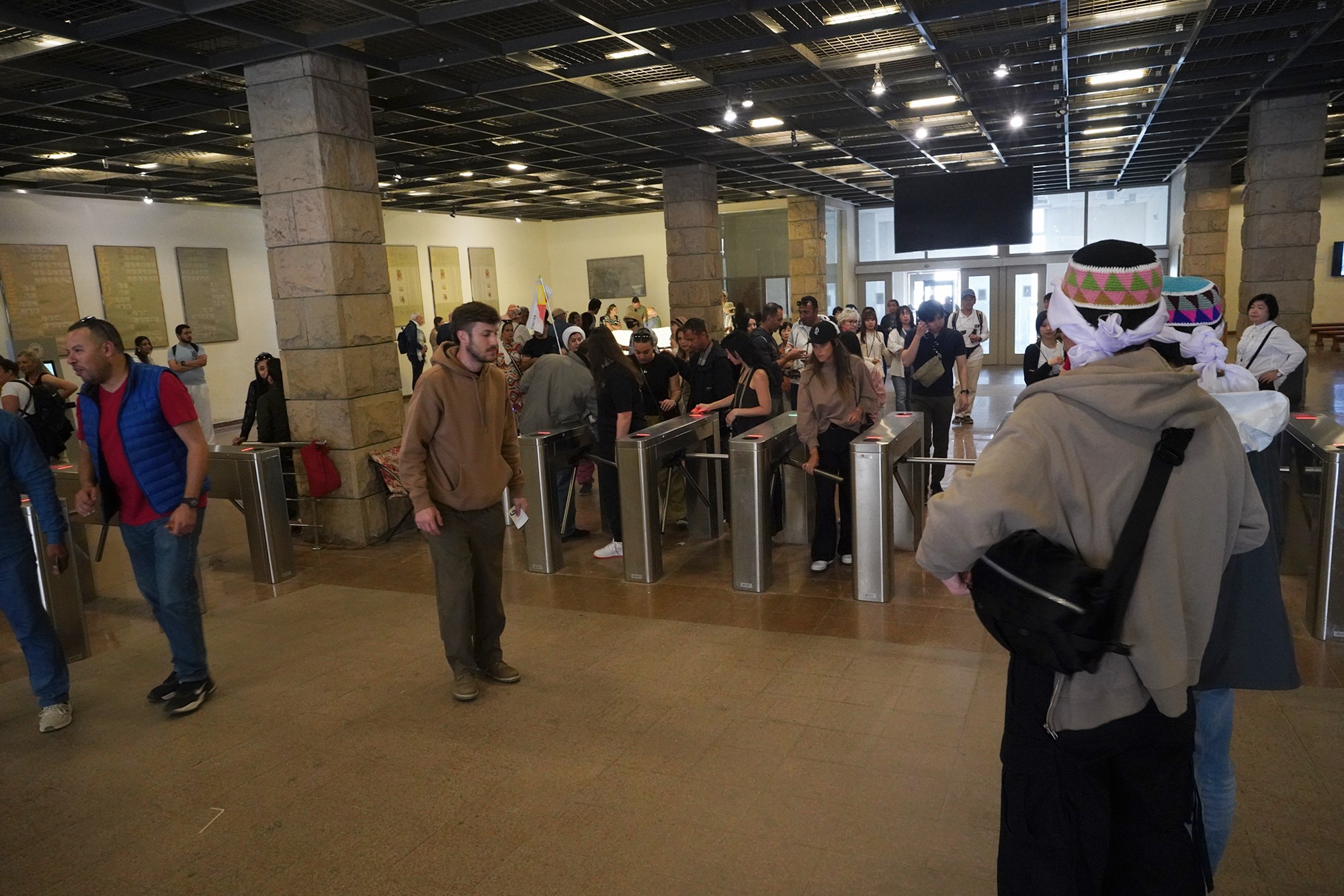
The trams were waiting for us to take to the start of the Valley of Kings.


After a short one-minute ride, we arrived at the Valley of the Kings.
The Valley of the Kings is one of the most famous archaeological sites in Egypt, located on the west bank of the Nile River near Luxor. It served as the burial ground for numerous pharaohs and high-ranking officials of the New Kingdom (approximately 1539–1075 BCE). The site was chosen for its strategic location, as it provided a natural pyramid-shaped mountain that helped protect the tombs from tomb robbers.

There have been 63 tombs discovered so far, but the general ticket only allows you to visit three. If you want to see more tombs, buy a new general ticket. The tour gave us an hour to look around the area, barely enough time to look at three tombs.
The first tomb I visited was the KV6—Tomb of Ramses IX. It was short and straight. No camera permit was needed to take pictures.
Ramses IX, also known as Nebmaatre-Meryamun, was the eighth pharaoh of the Twentieth Dynasty of Ancient Egypt. He ruled from around 1126 to 1108 BCE during the New Kingdom. His reign marked the final years of the New Kingdom’s prosperity before its decline.

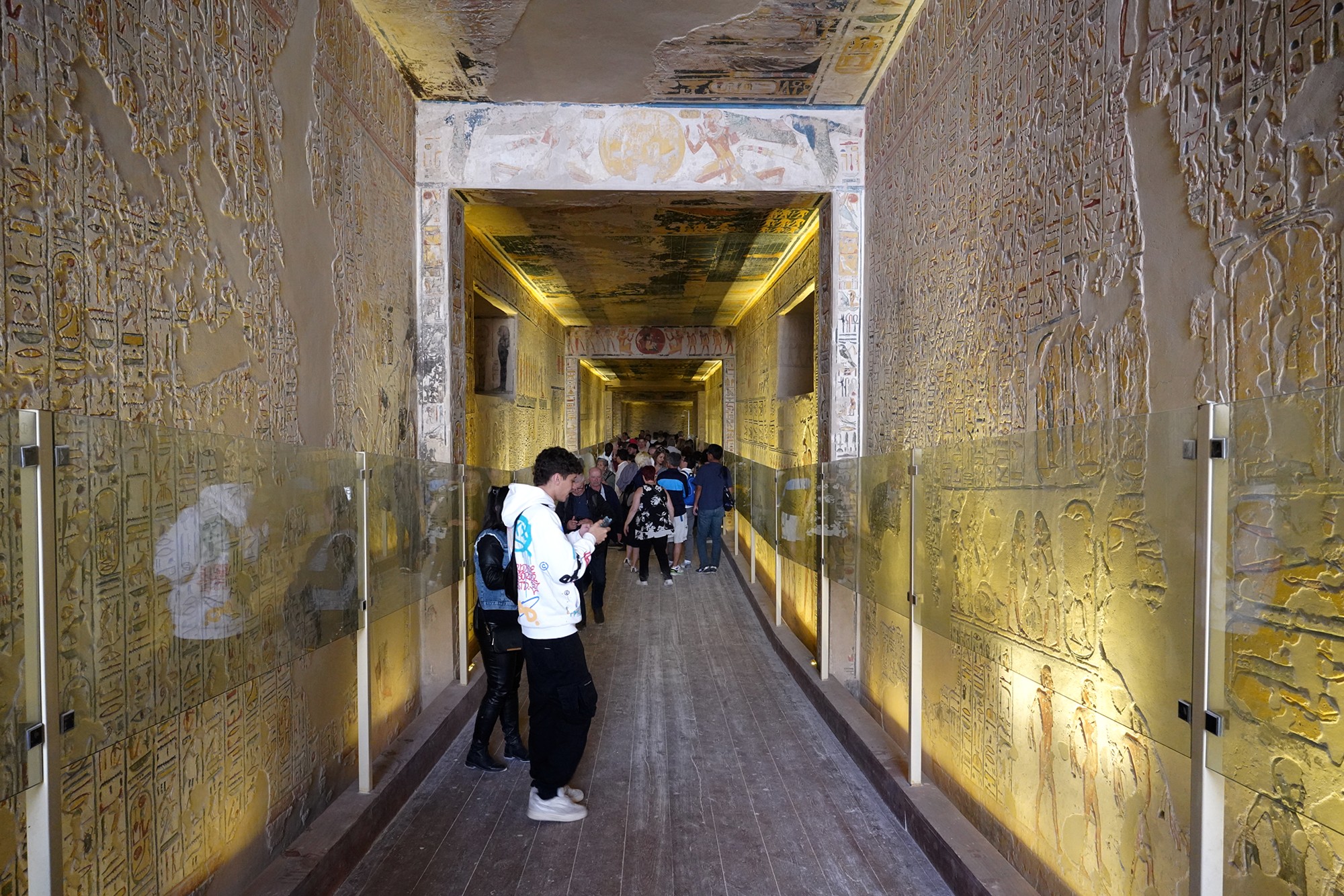
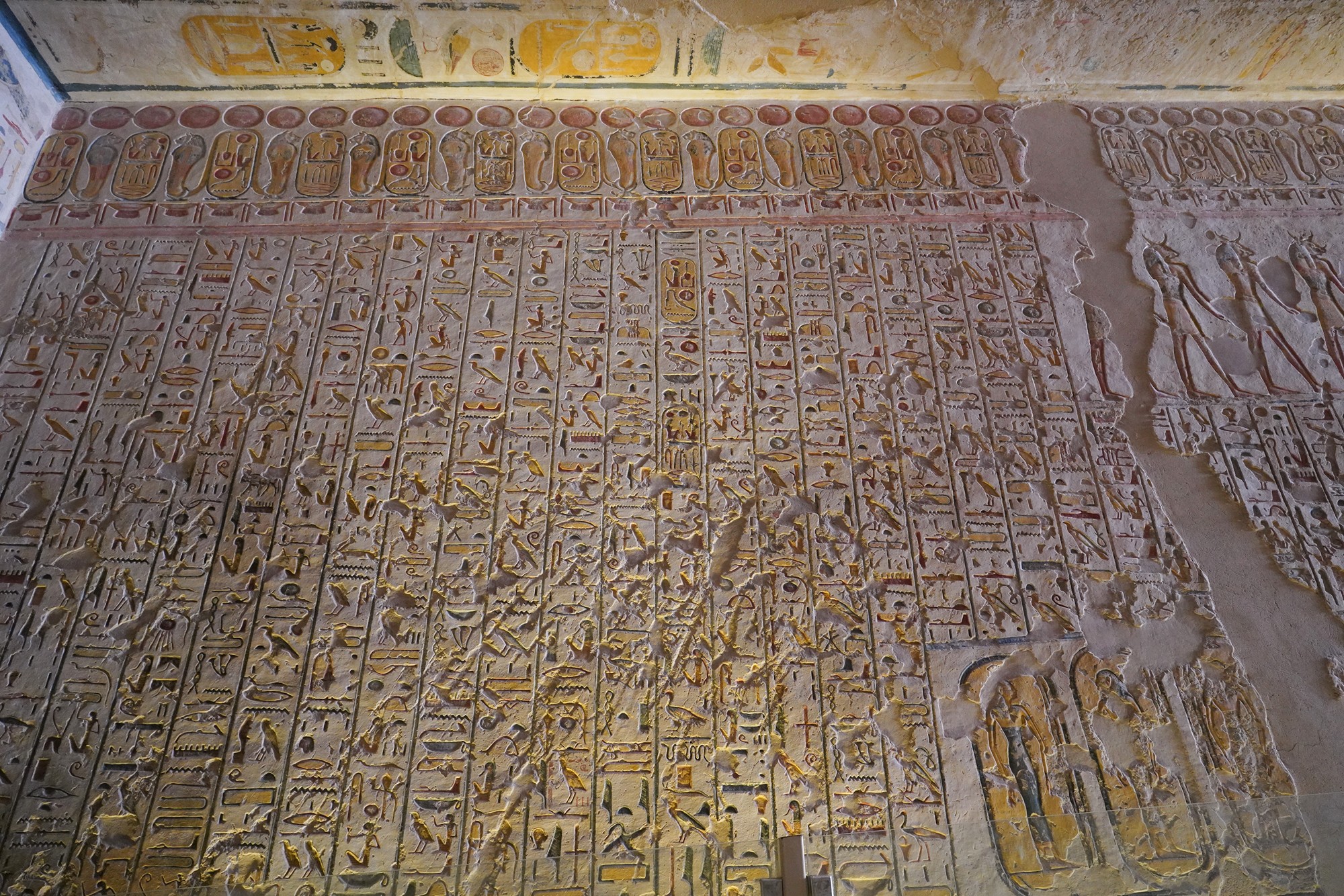

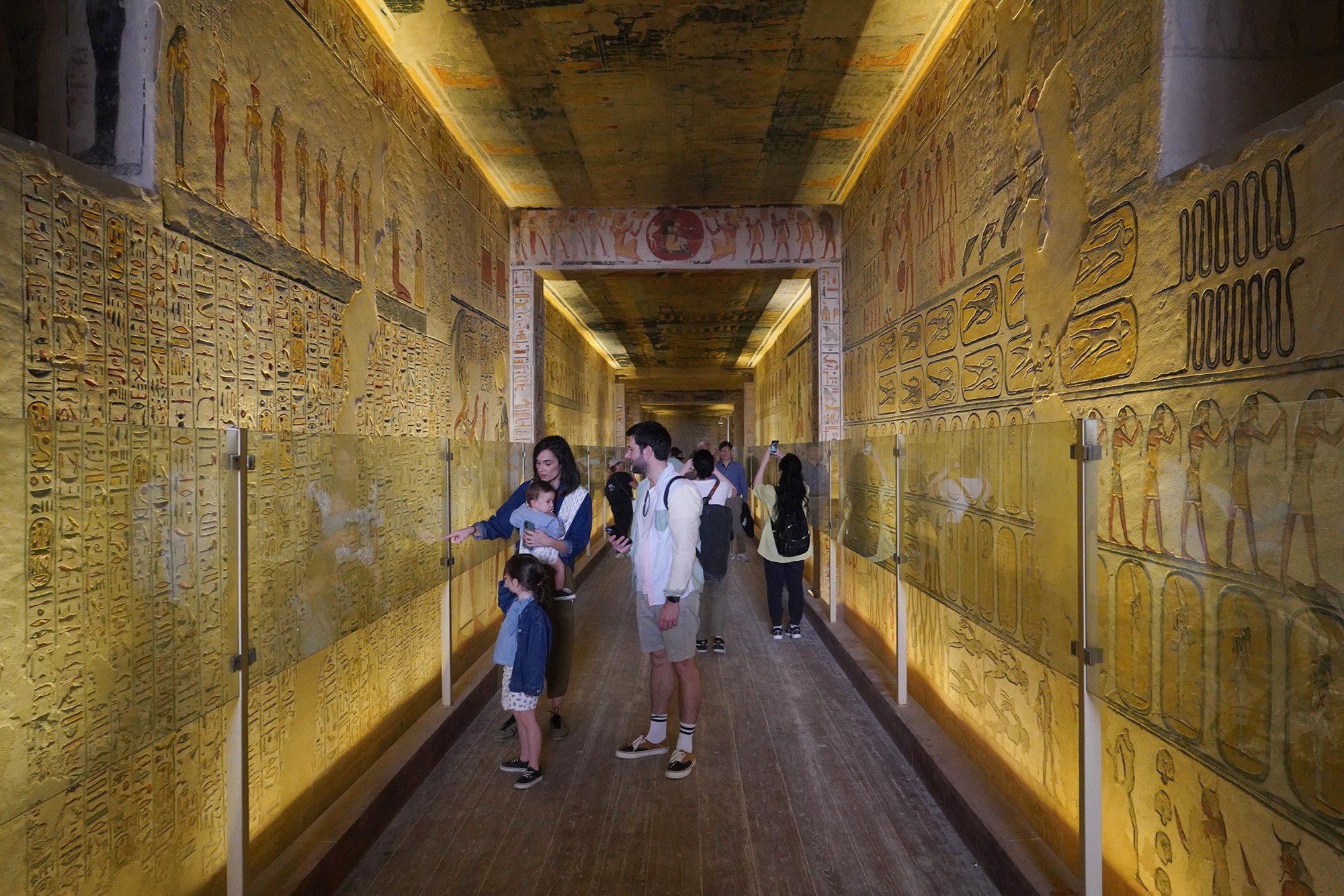
The ceiling
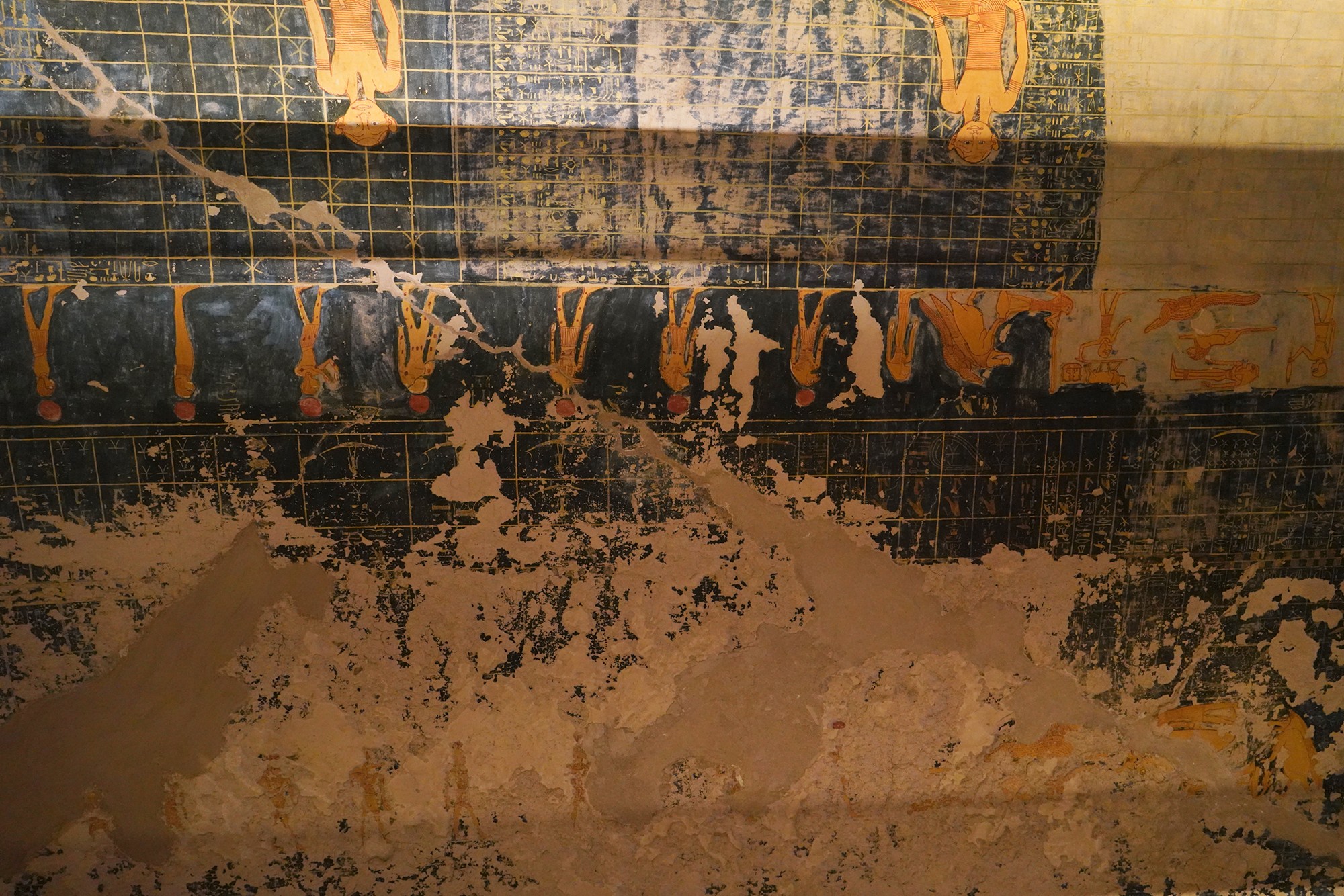
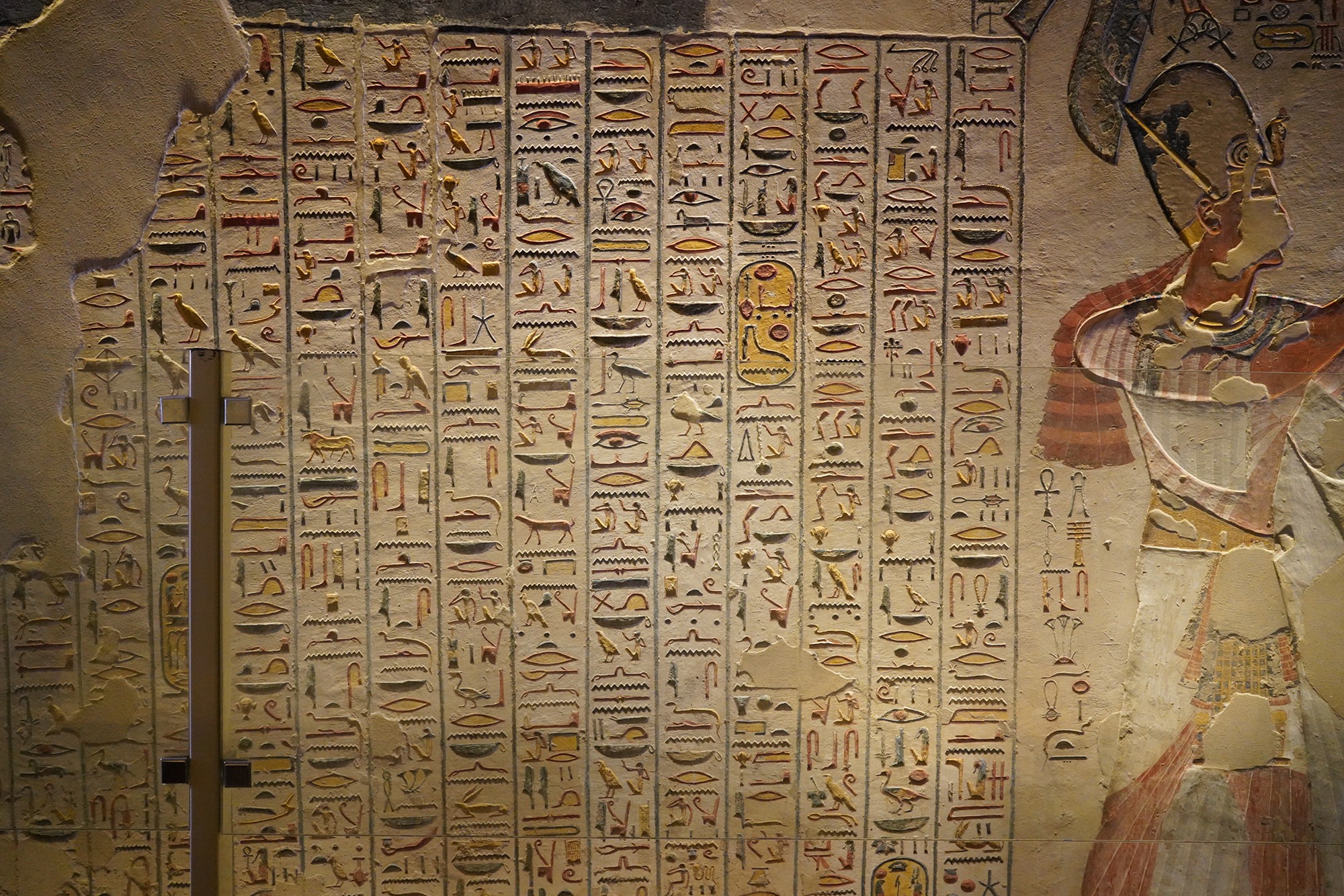
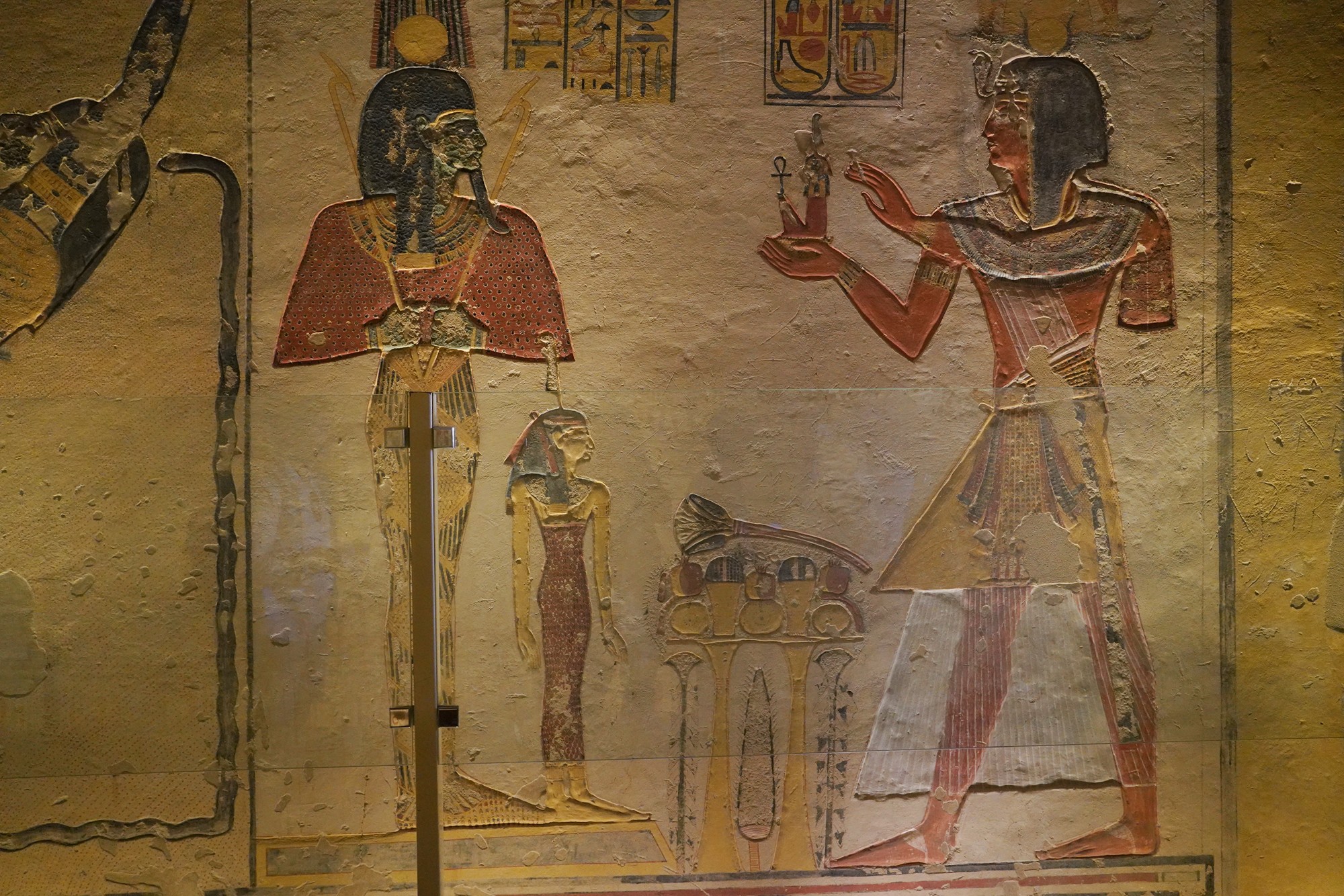

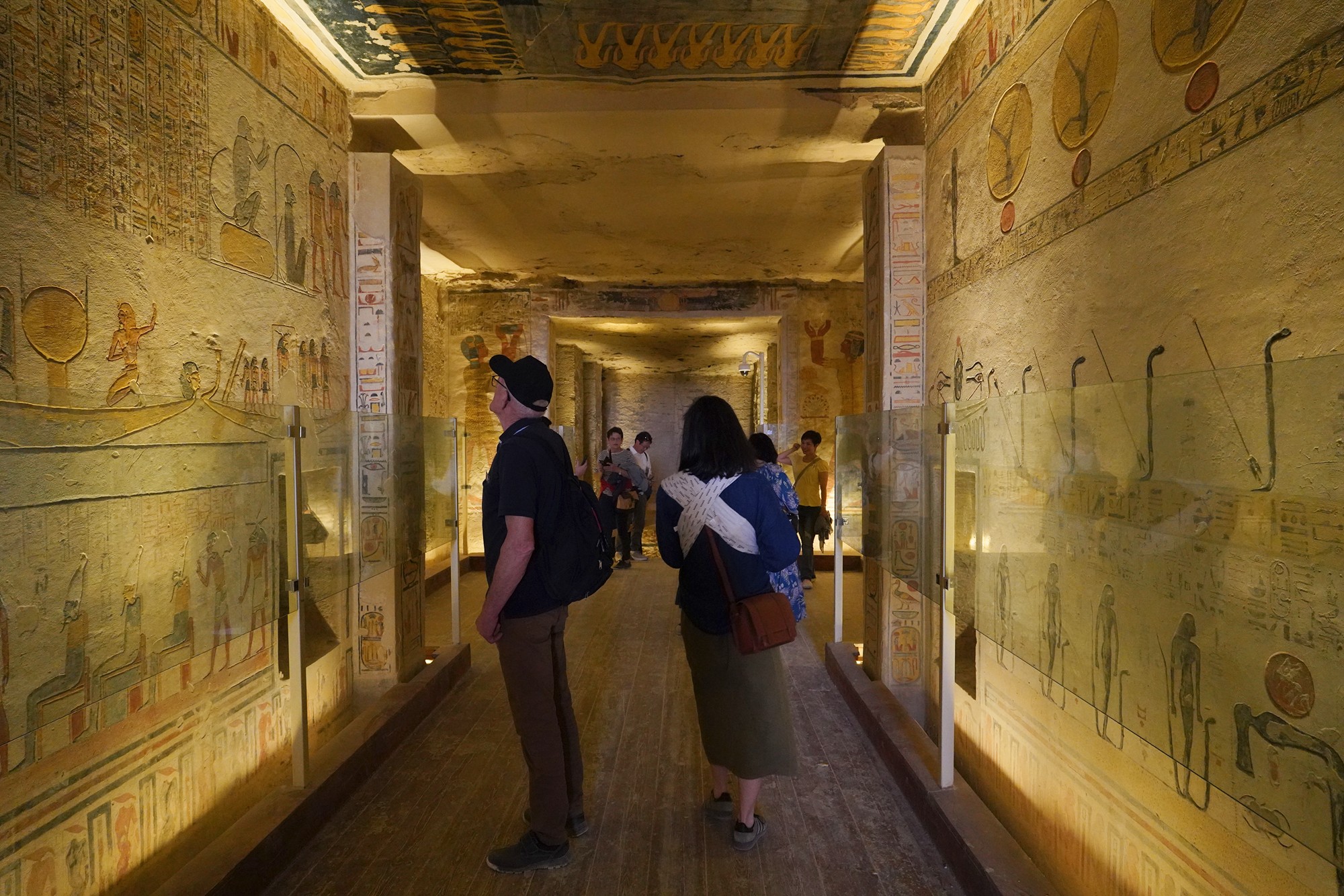
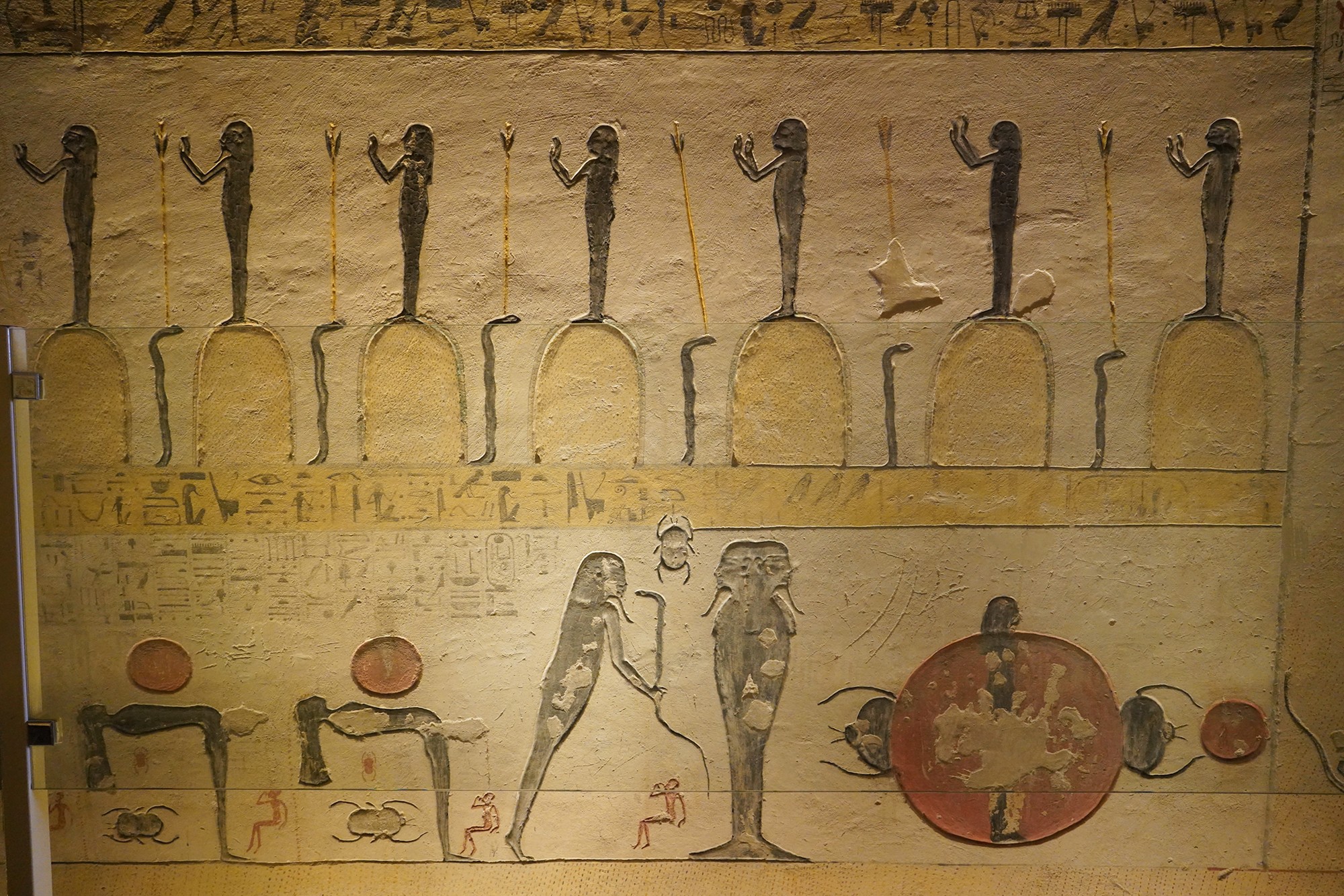
This is the end of the tomb, the rest is blocked.
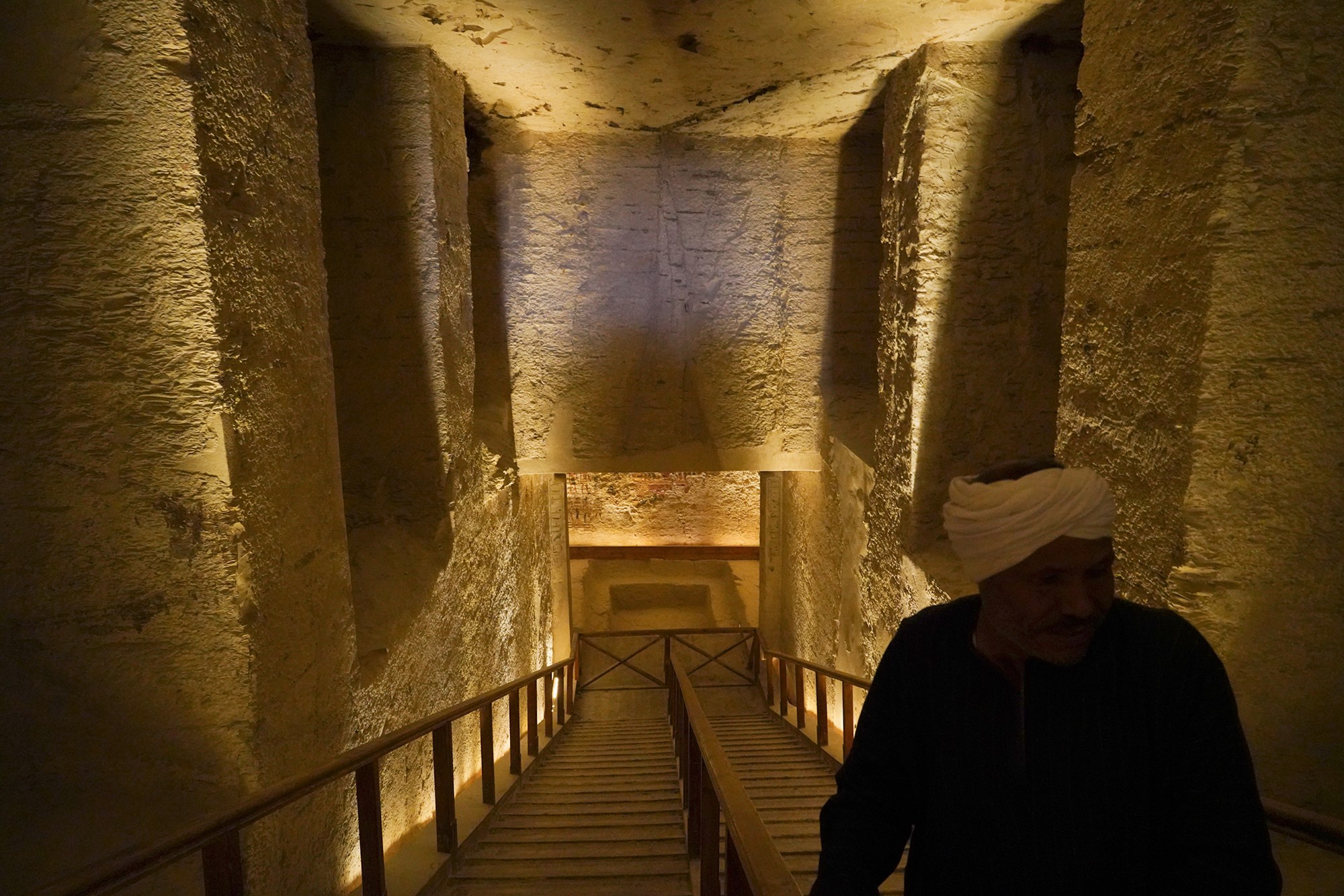
Walked back
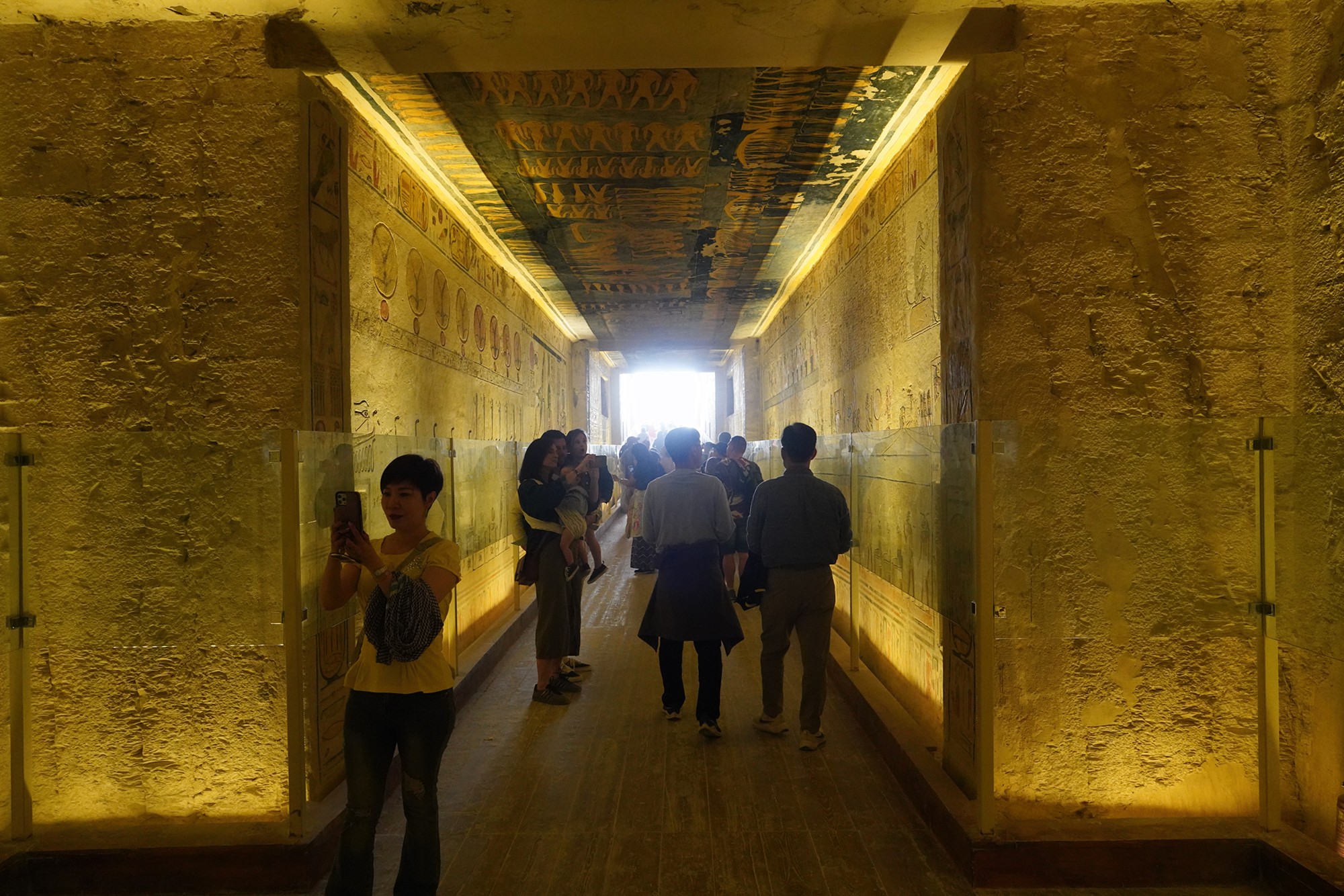
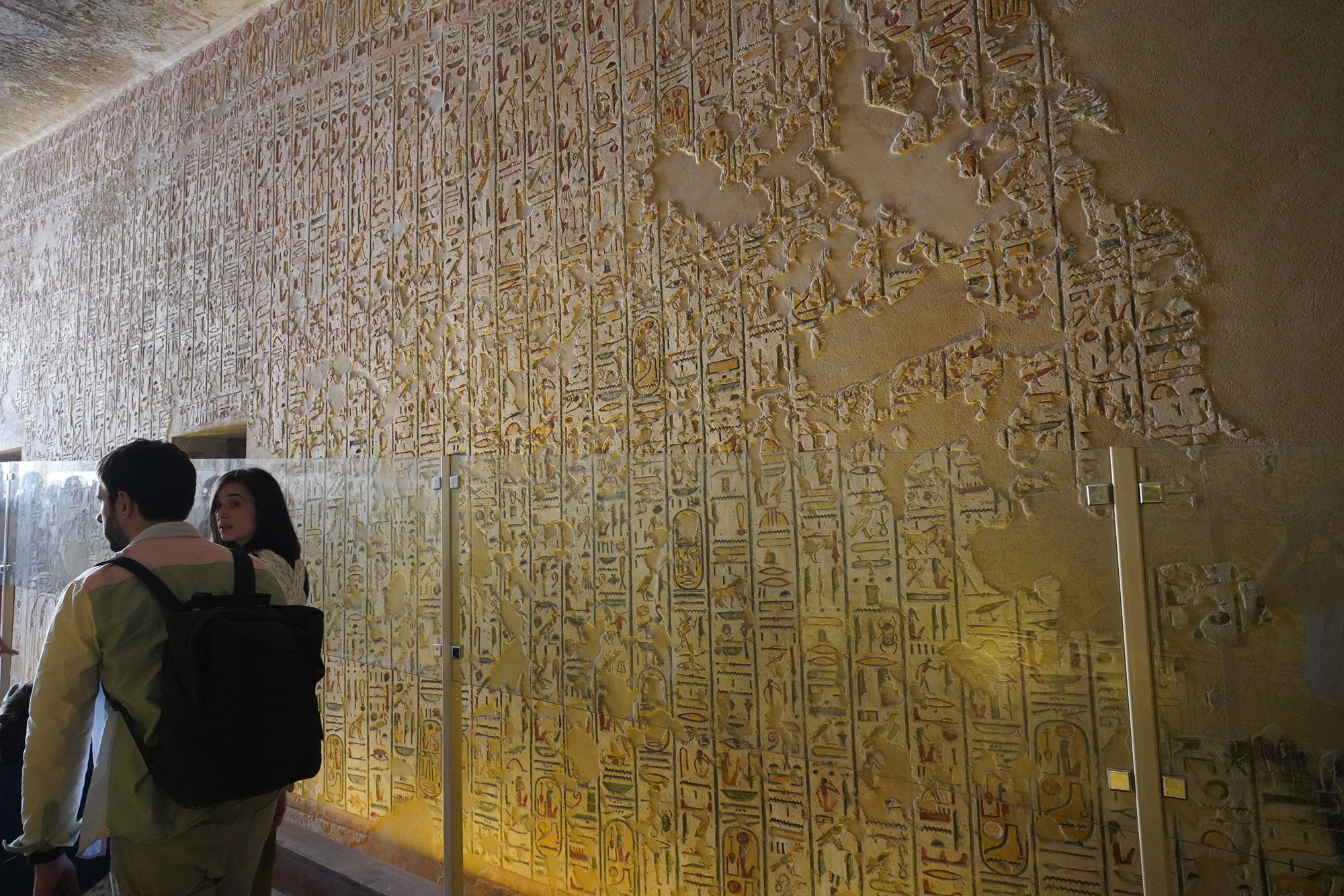

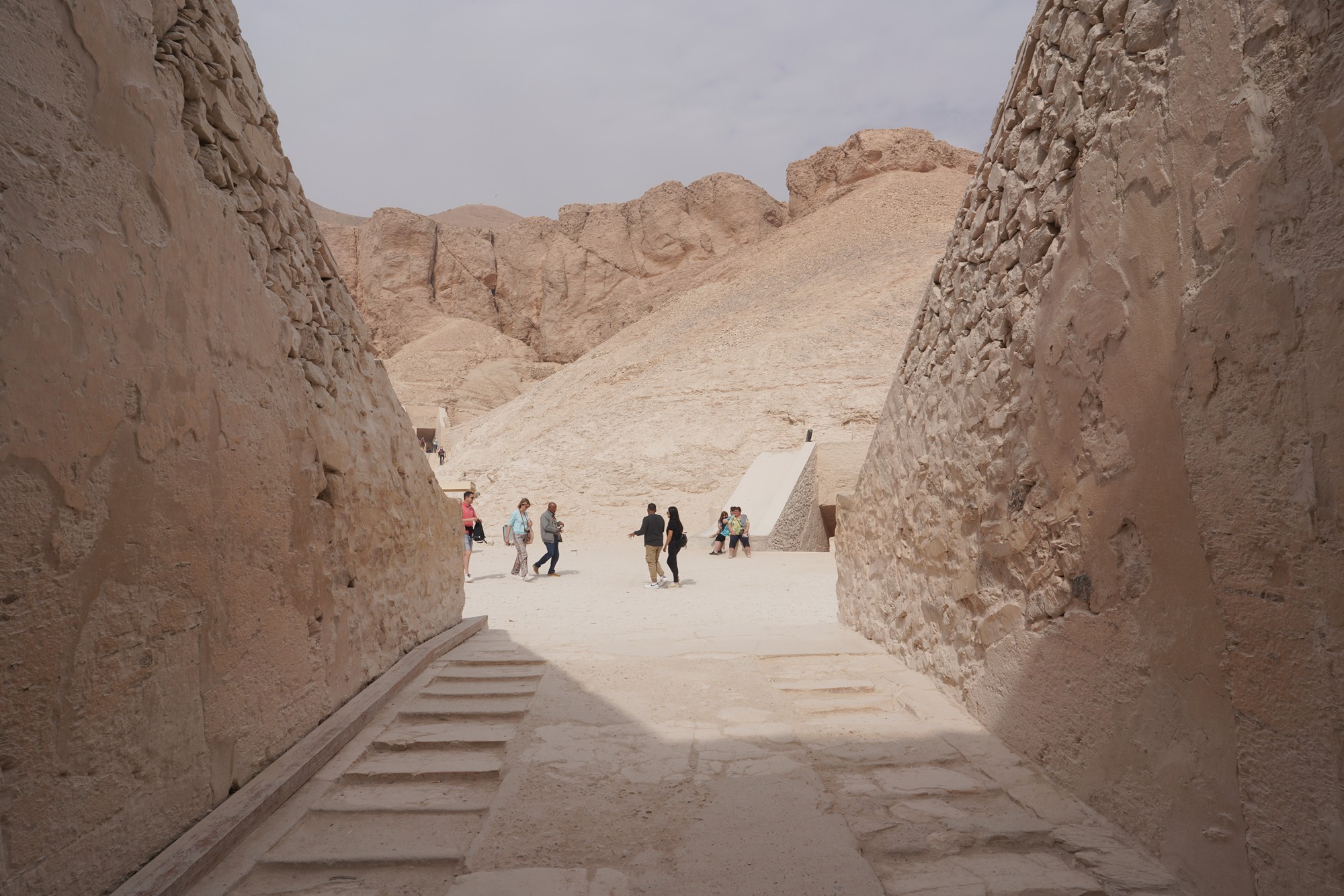

Panoramic view
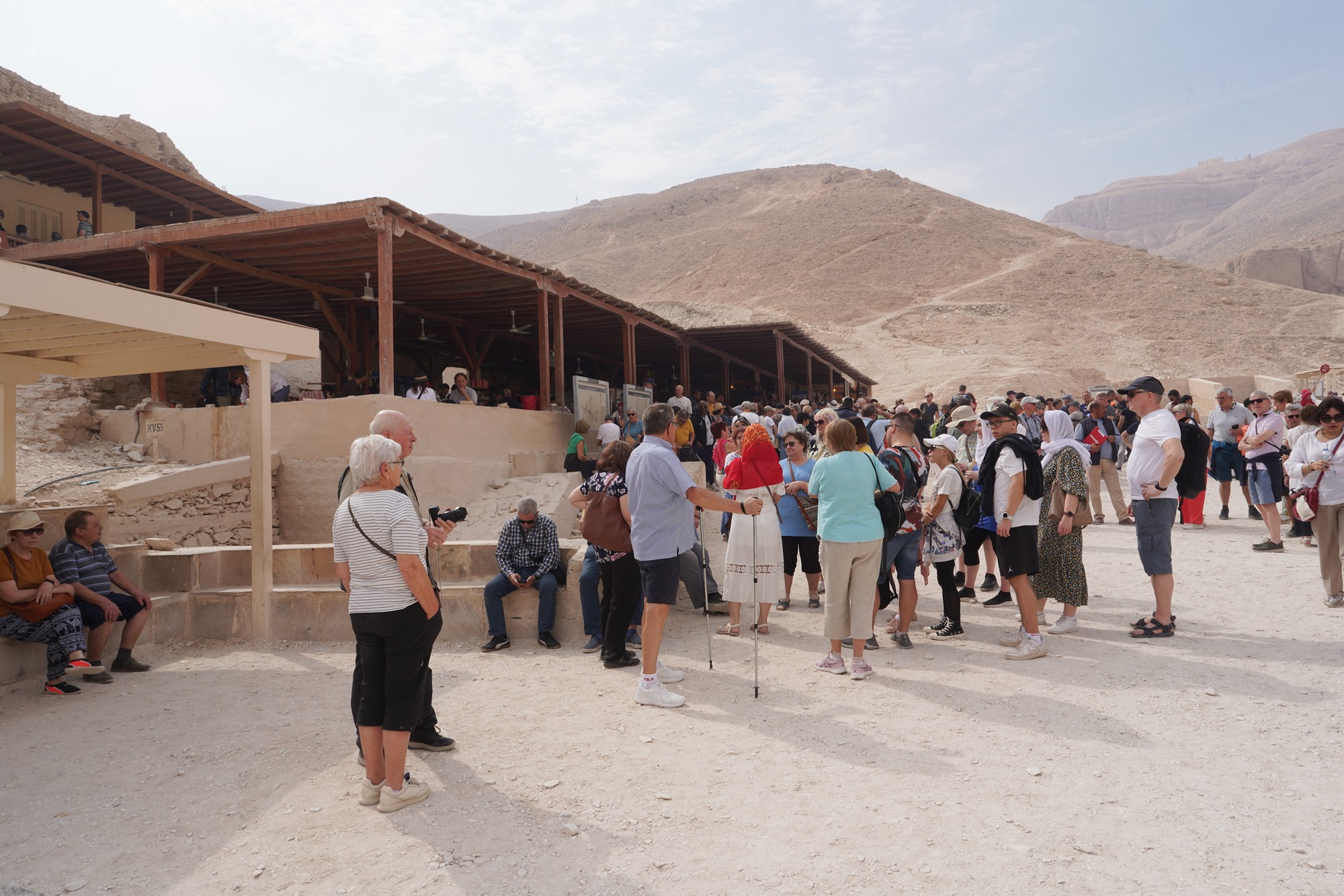

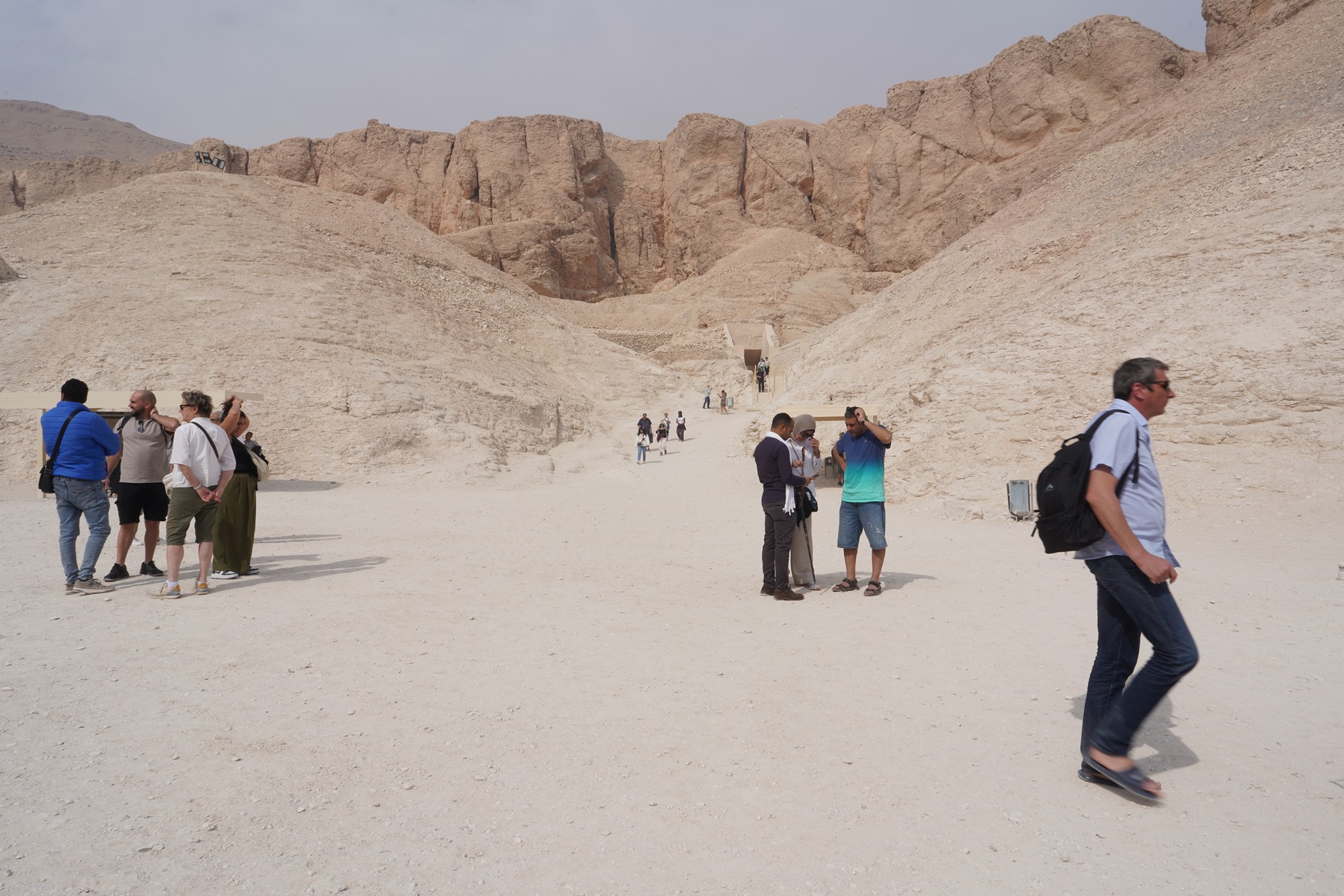


The next tomb I visited was KV2 -Tombs of Ramses IV.
Ramses IV, also known as Usermaatre Setepenre, was the third pharaoh of the Twentieth Dynasty of Ancient Egypt. He ruled from approximately 1155 to 1149 BCE during the New Kingdom period. Ramses IV succeeded his father, Ramses III, and continued the dynasty’s military and building activities.


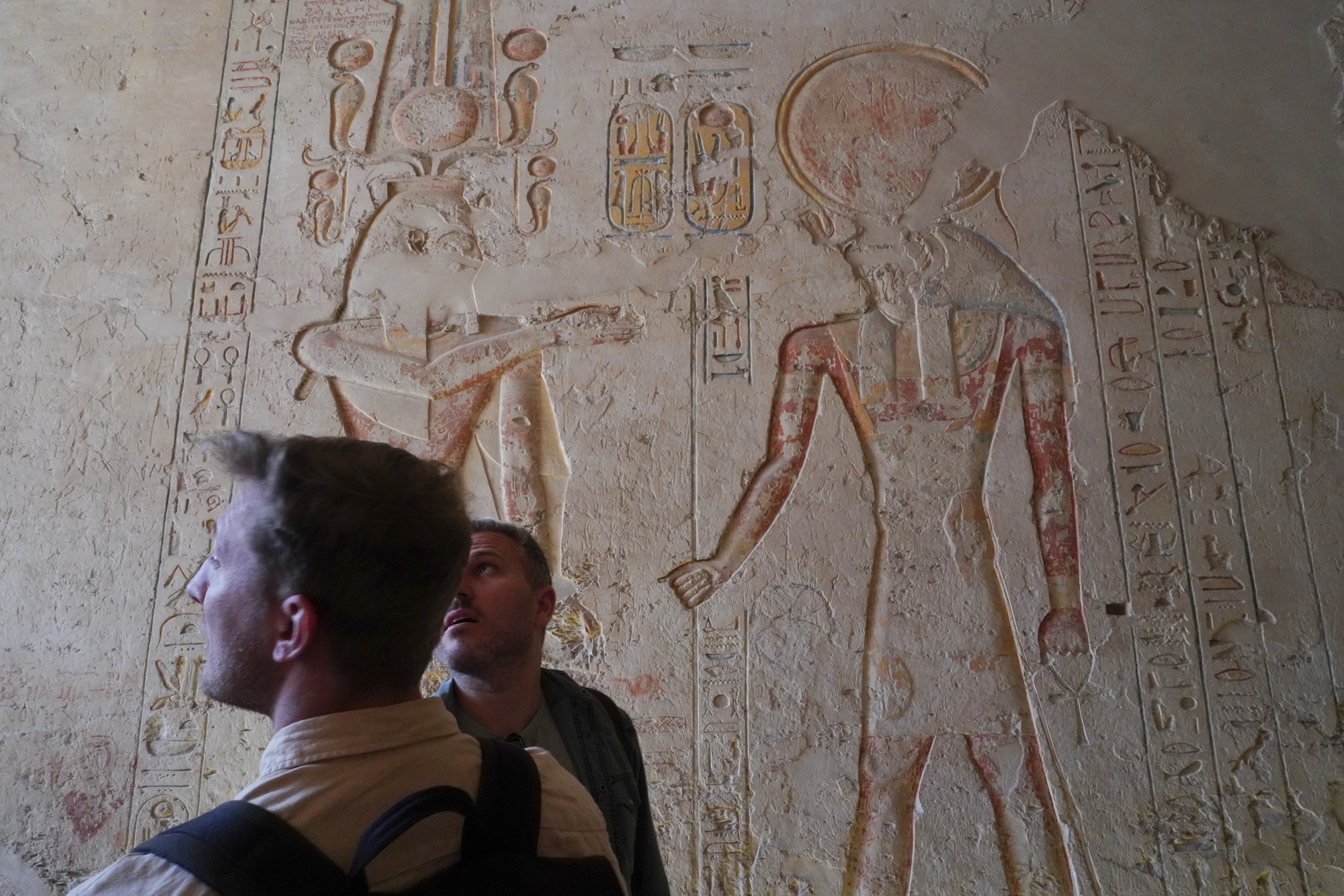
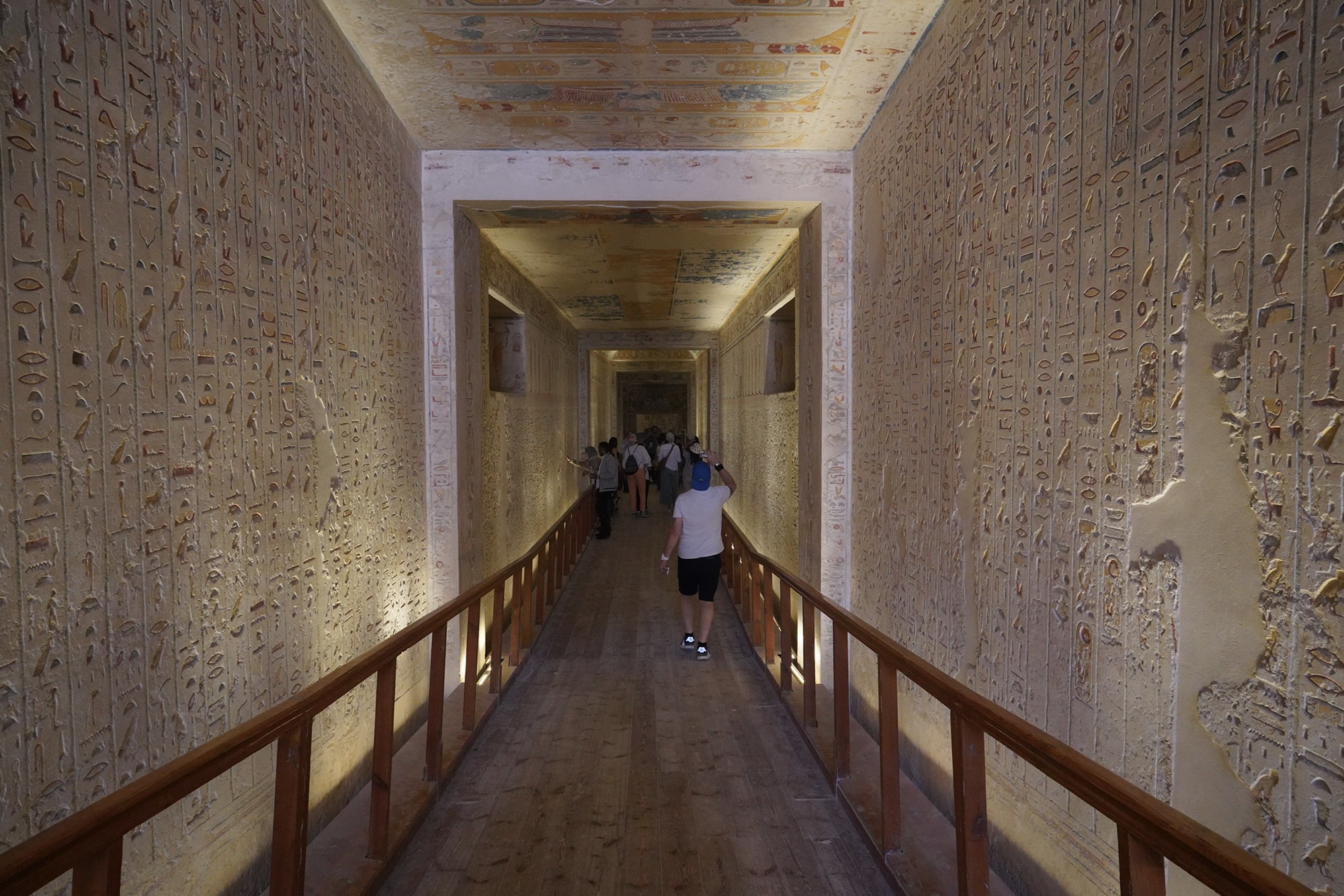



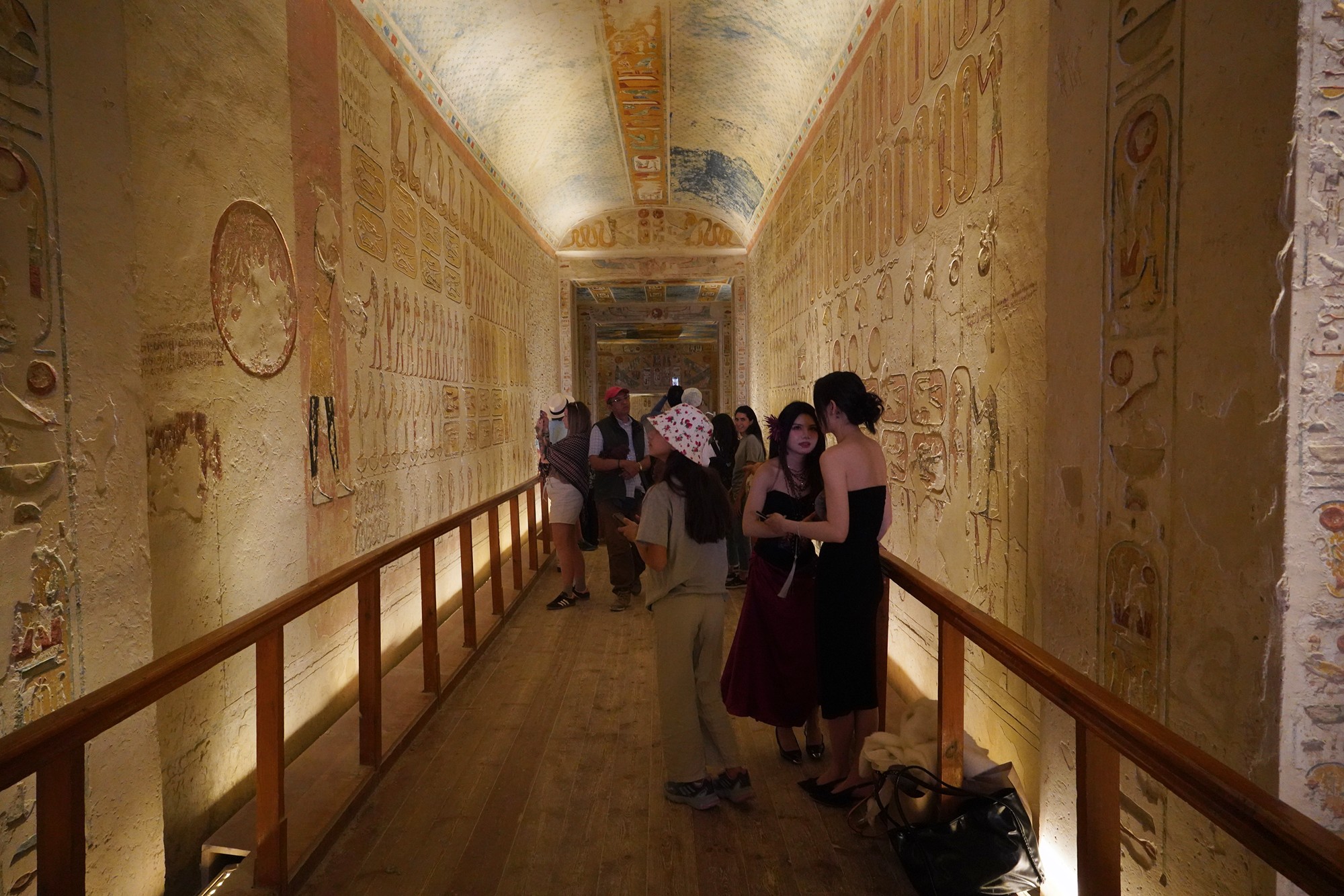
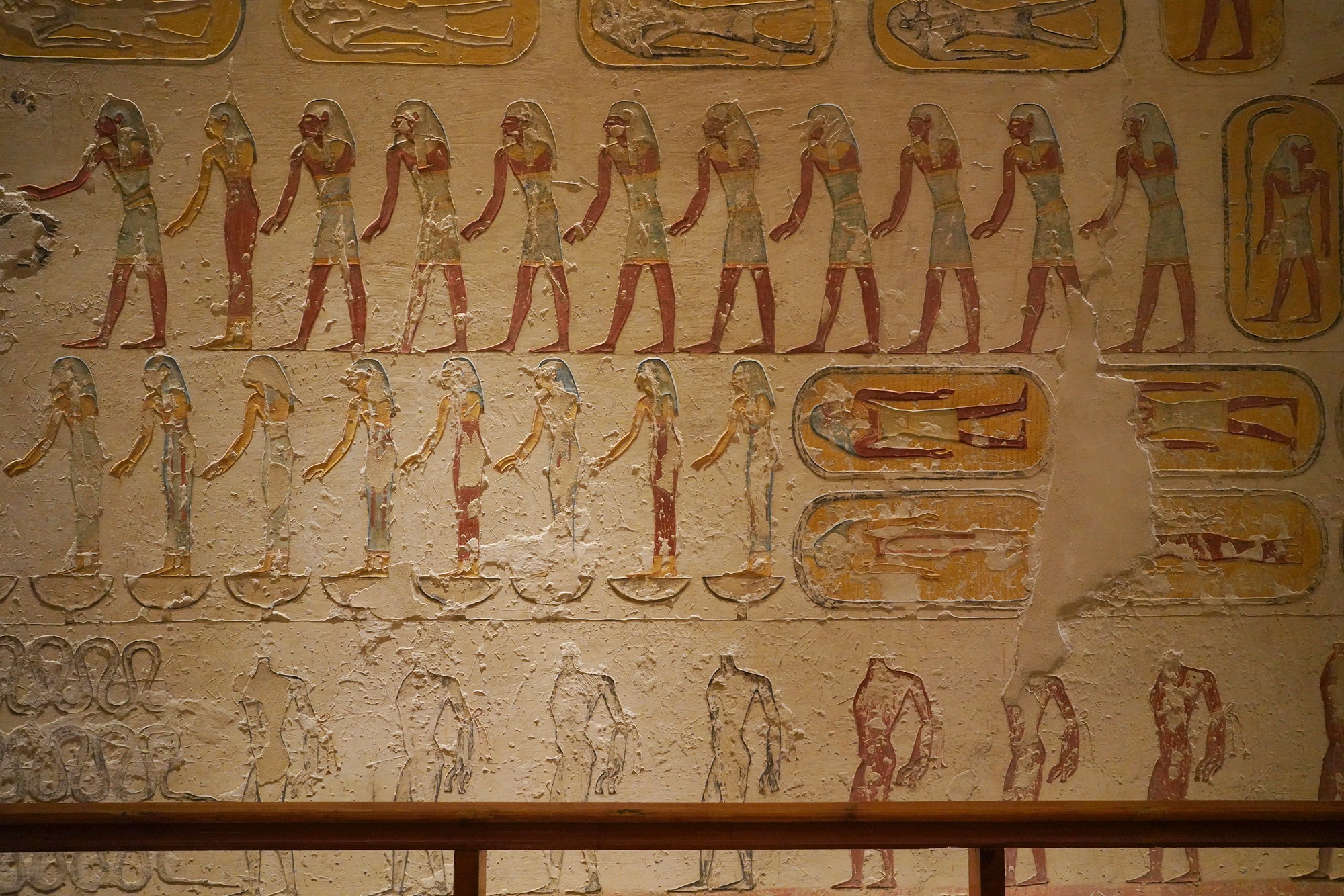

In the middle of the passage was this sarcophagus.
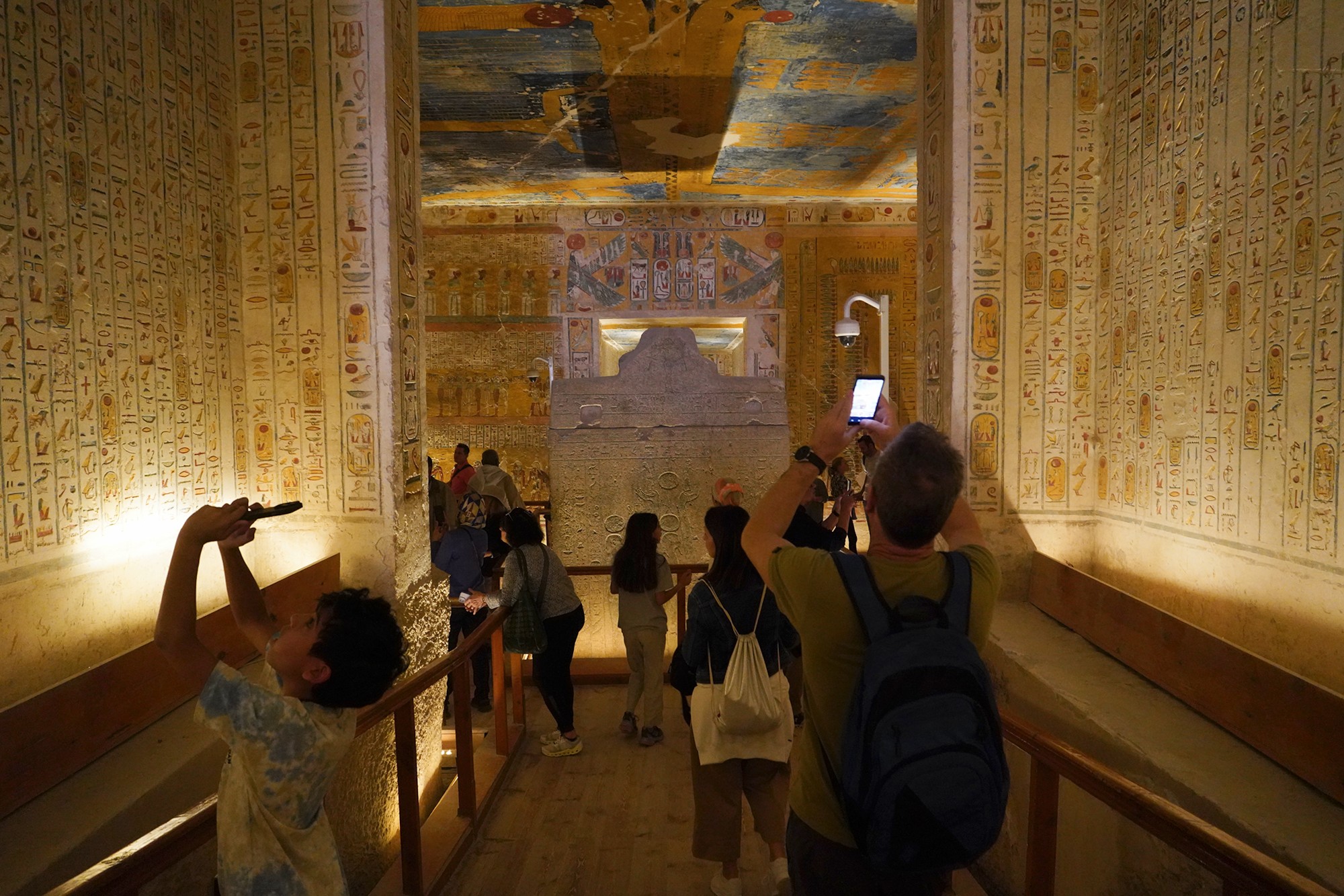
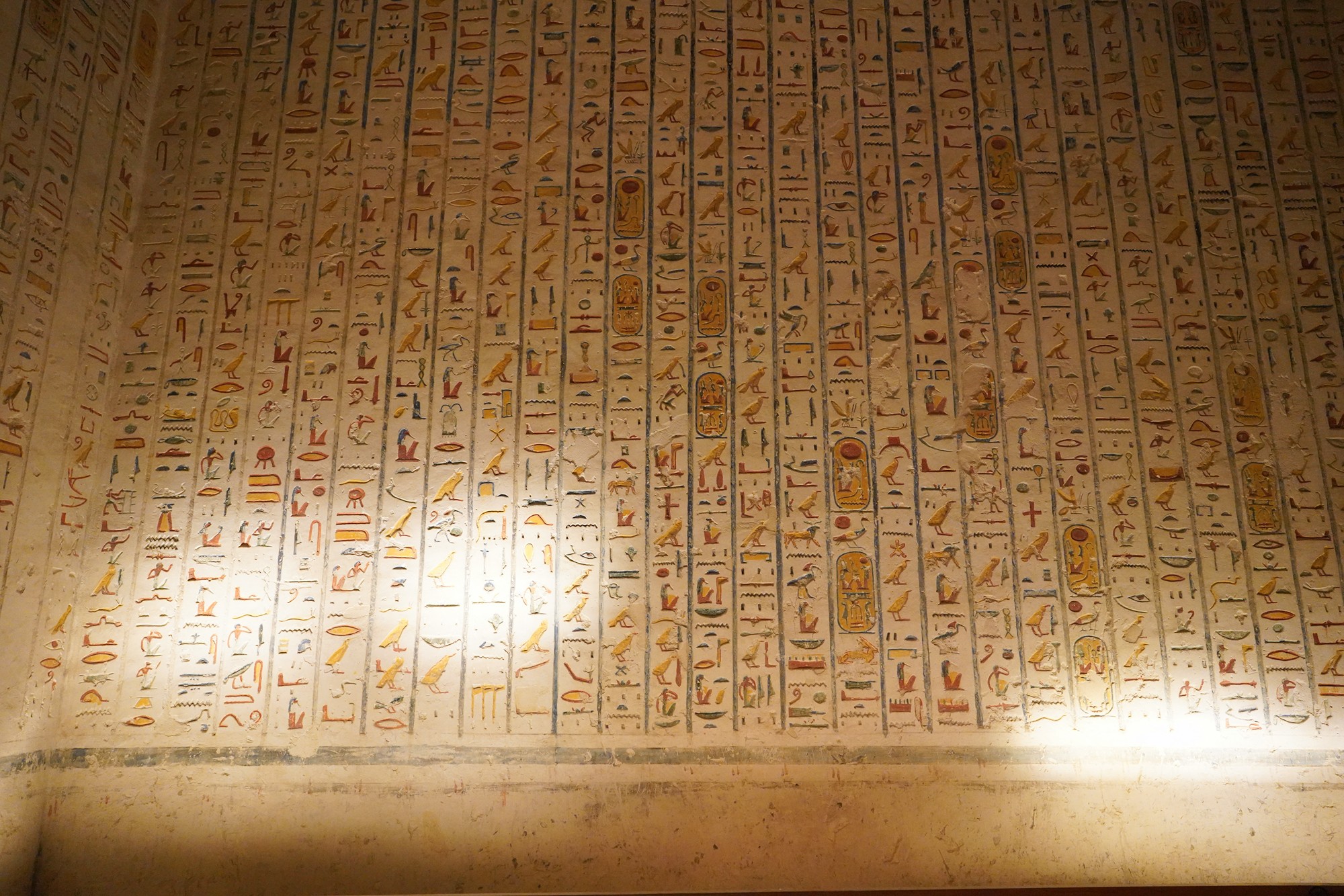

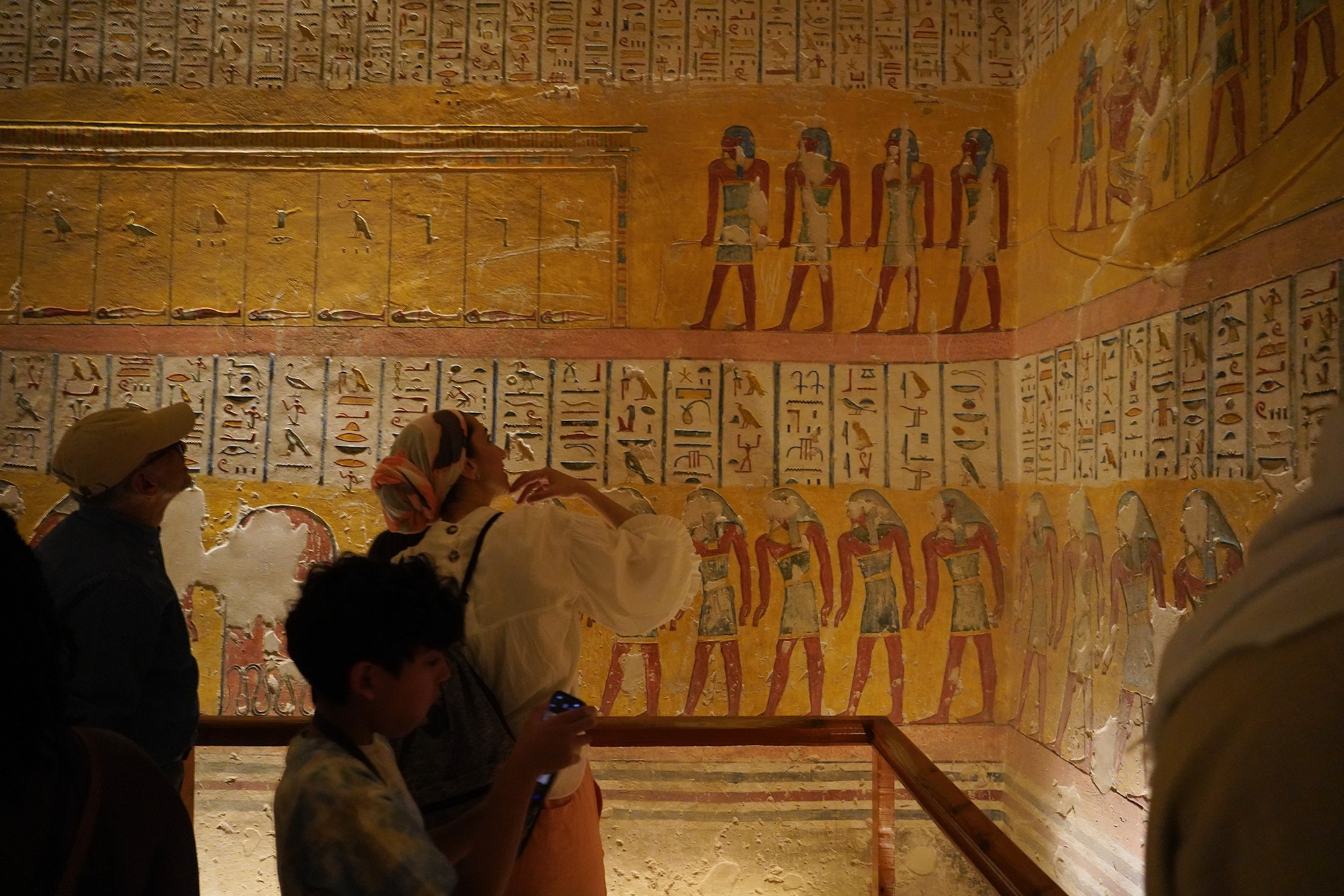
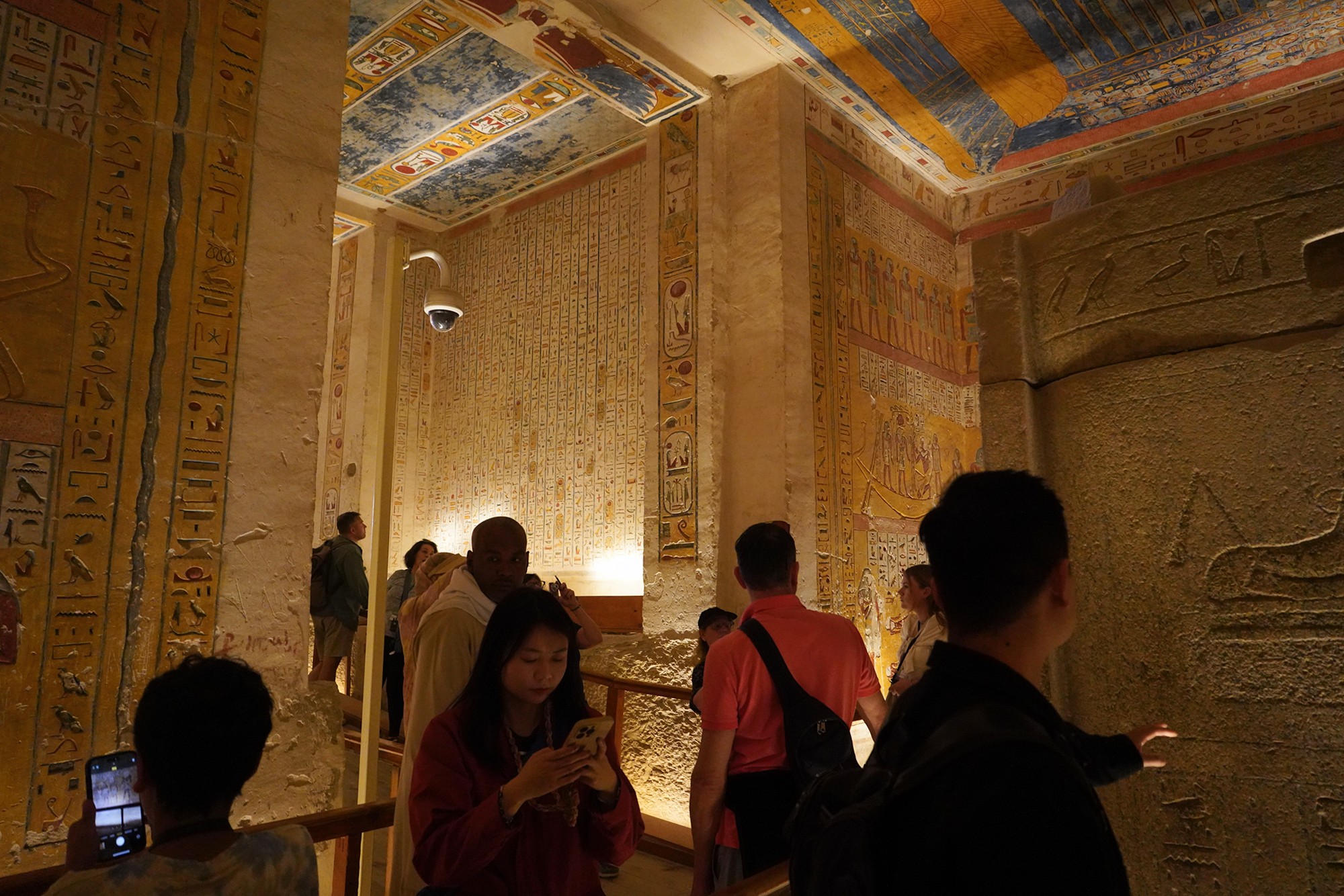
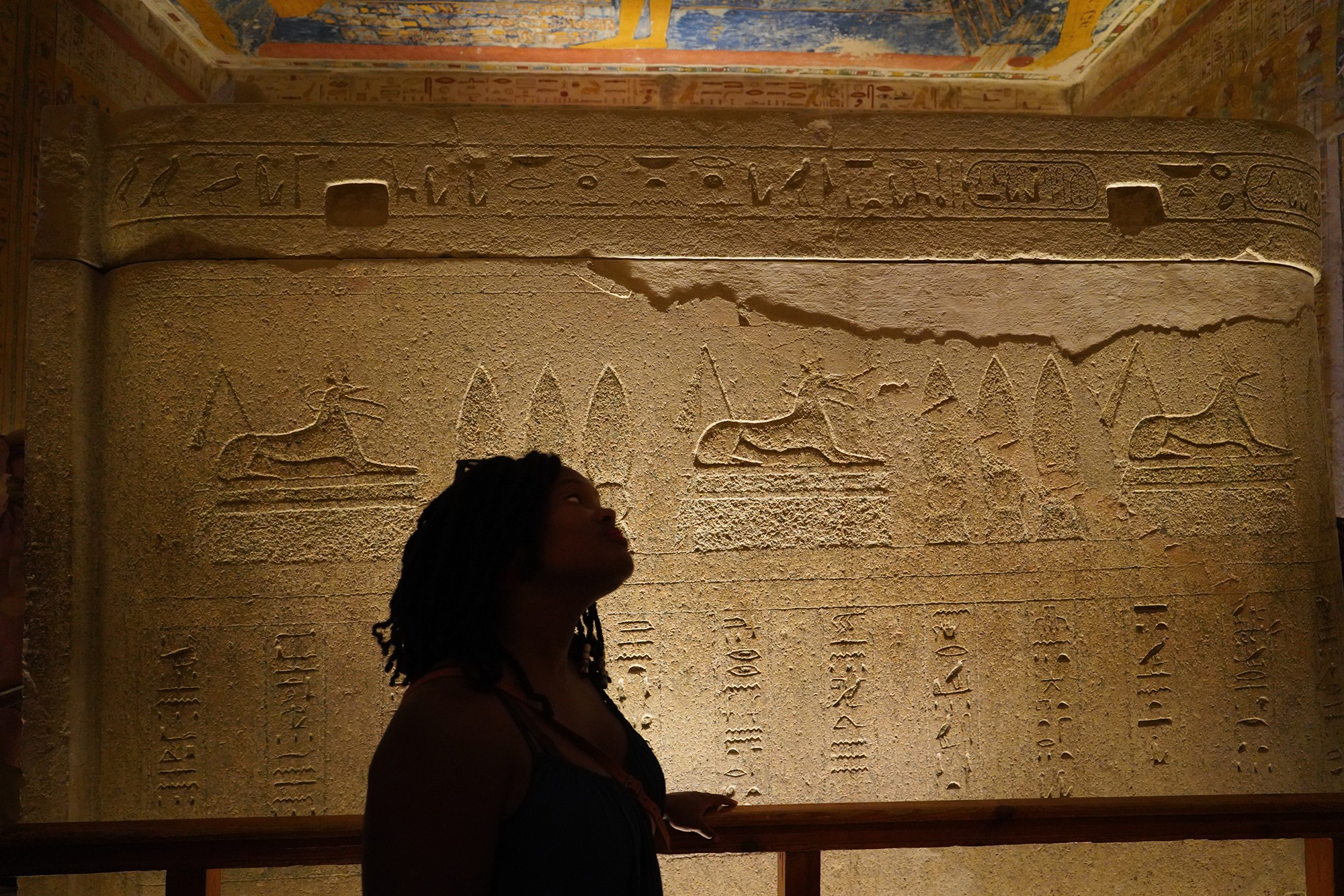
Walked around the sarcophagus
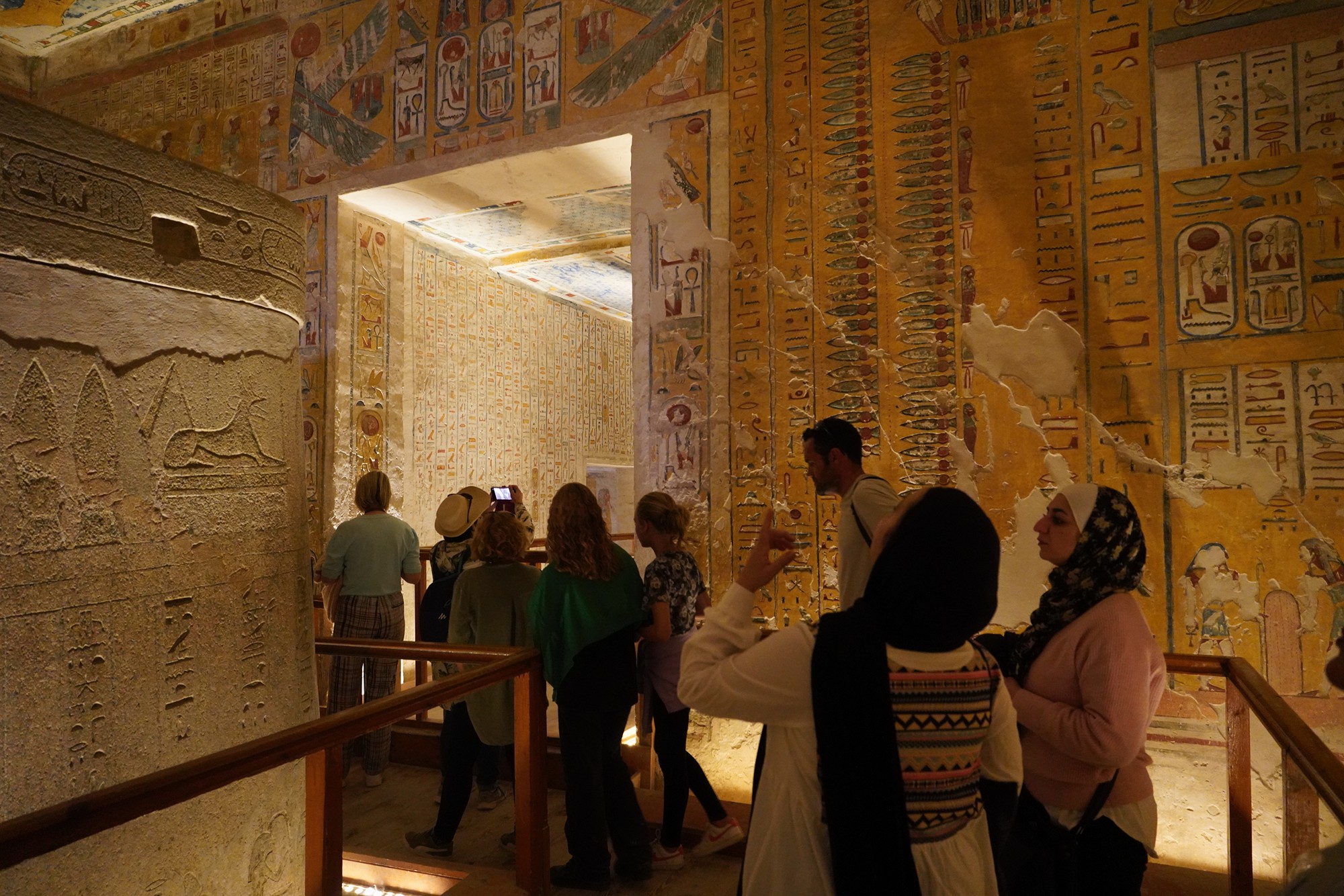

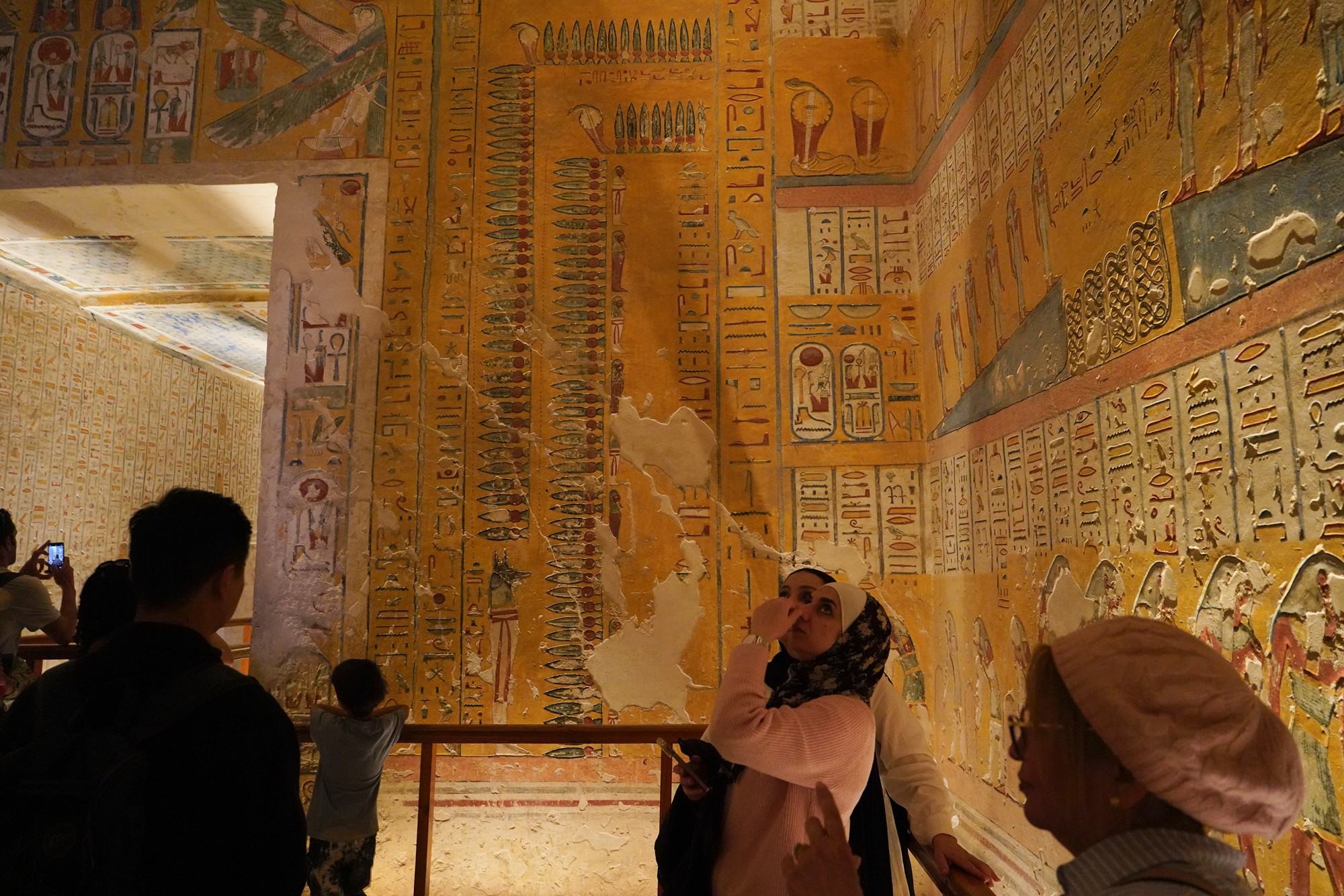
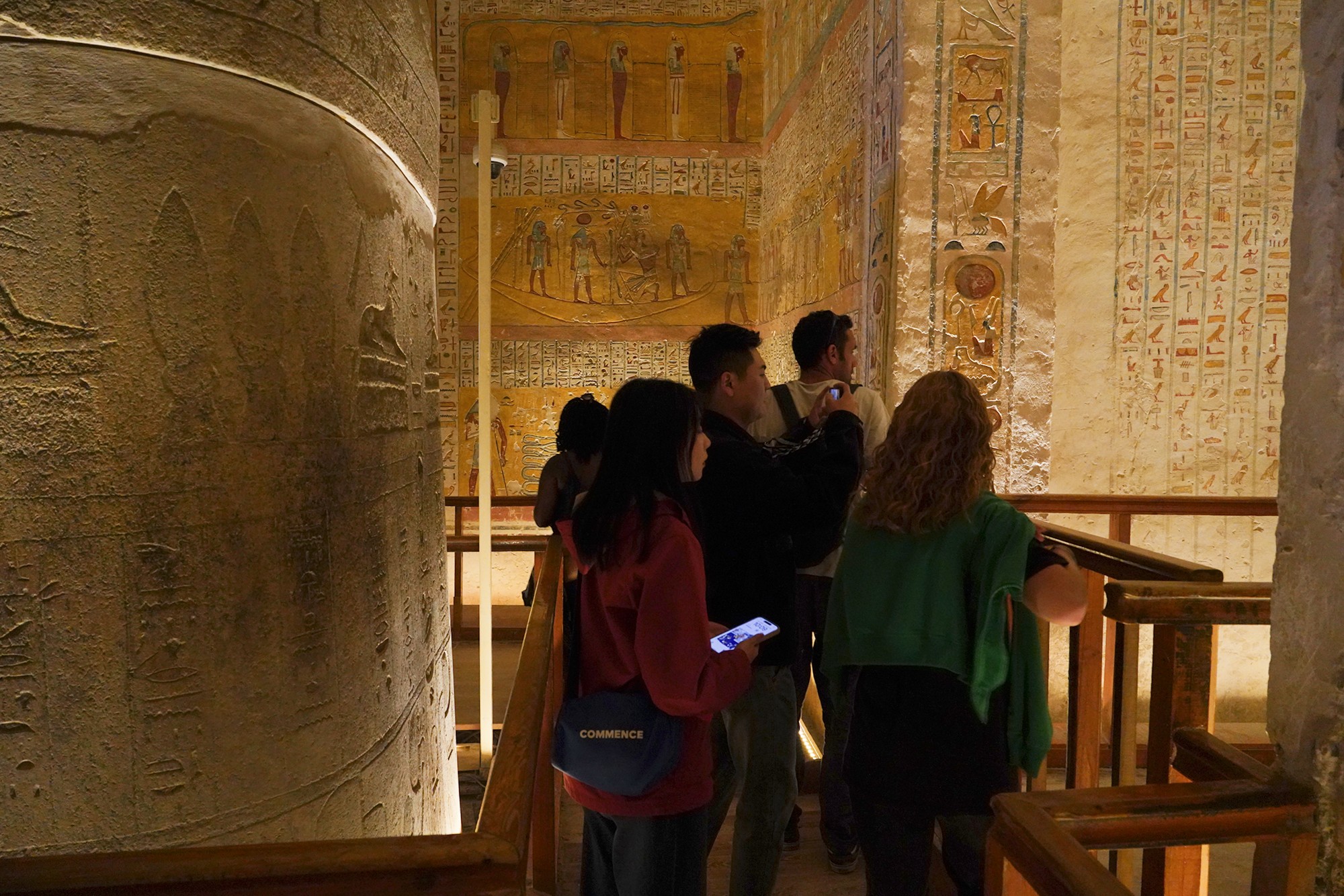
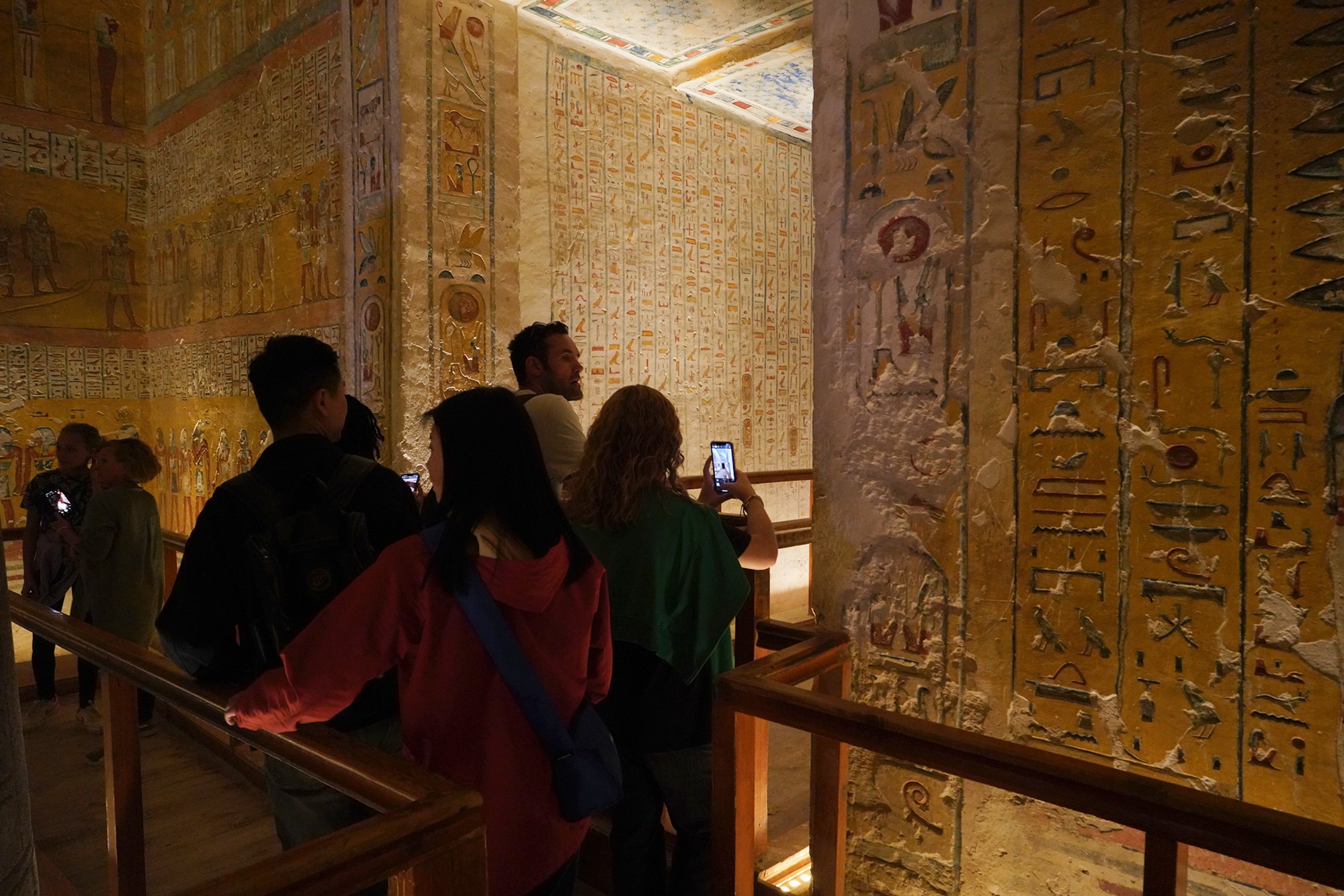
This is the end of the tomb.

Walked back out of the tomb

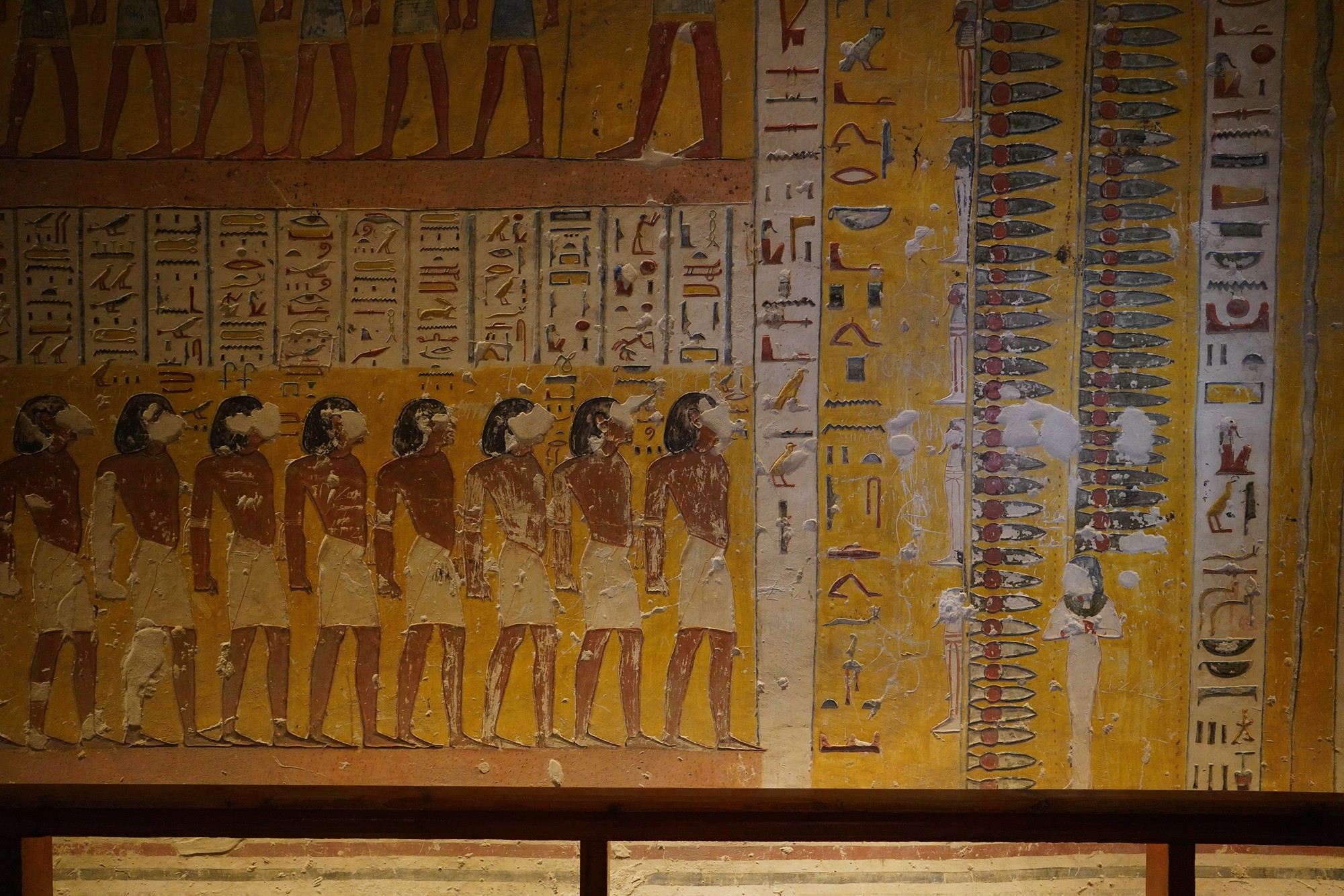
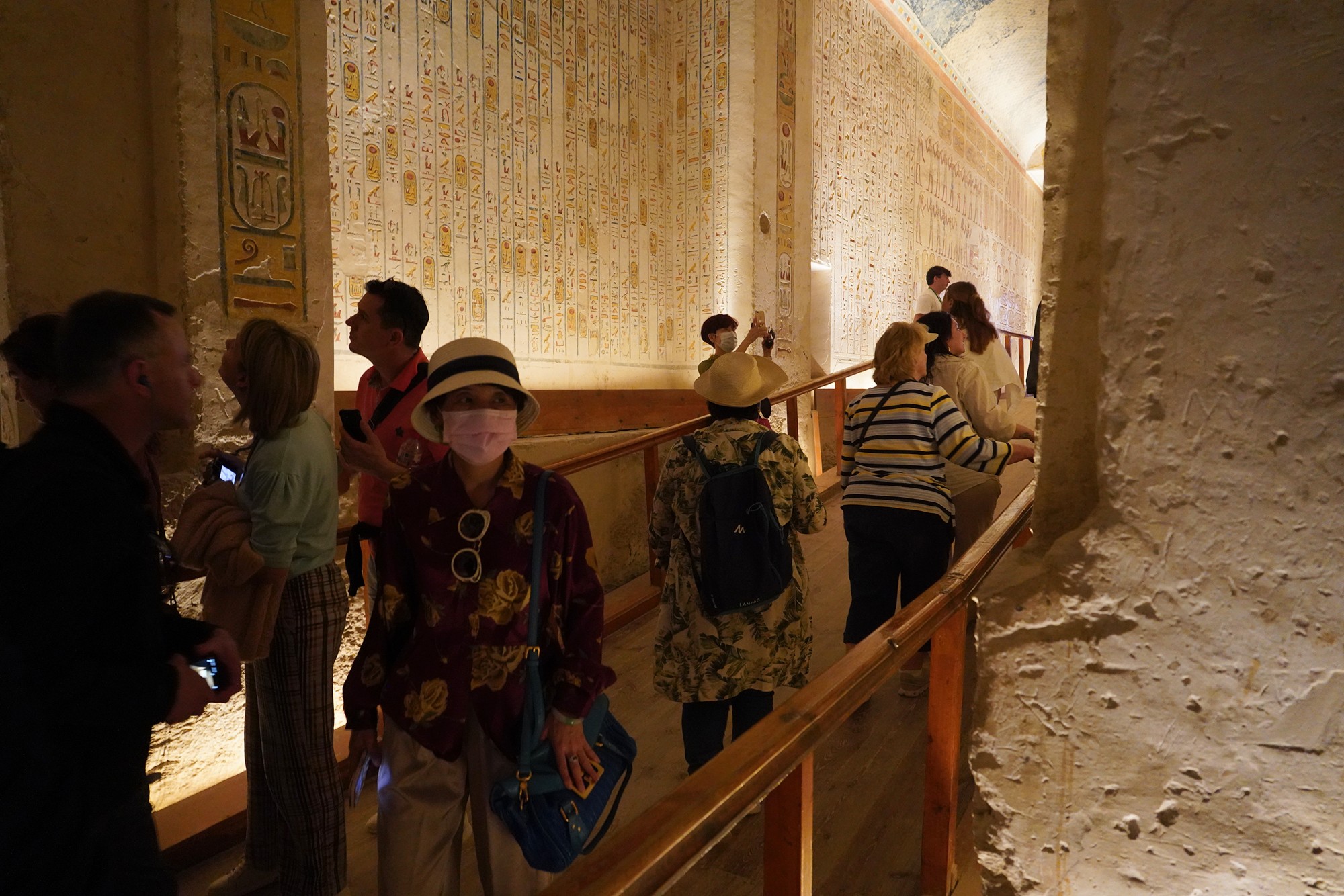

Turned around and looked back
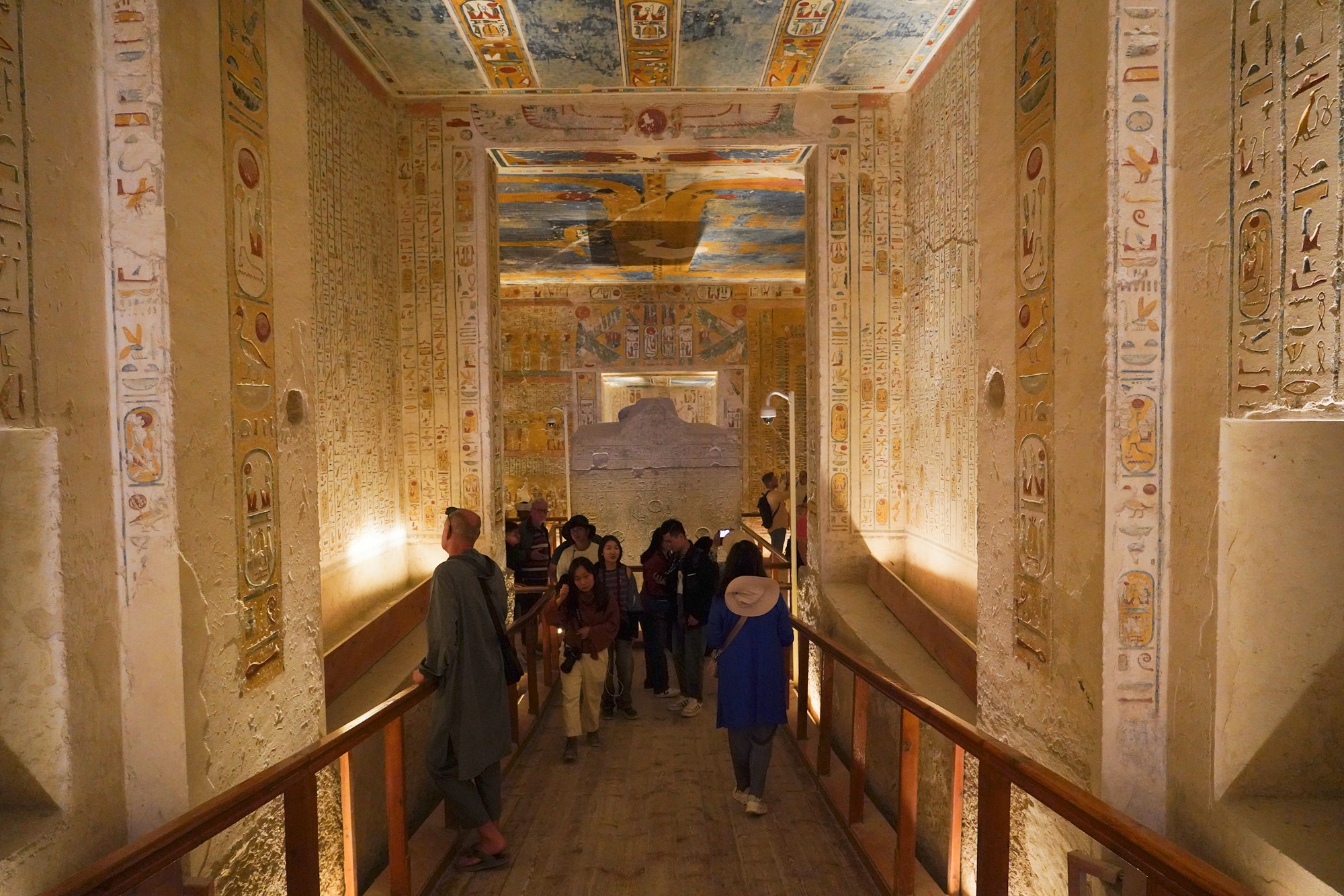
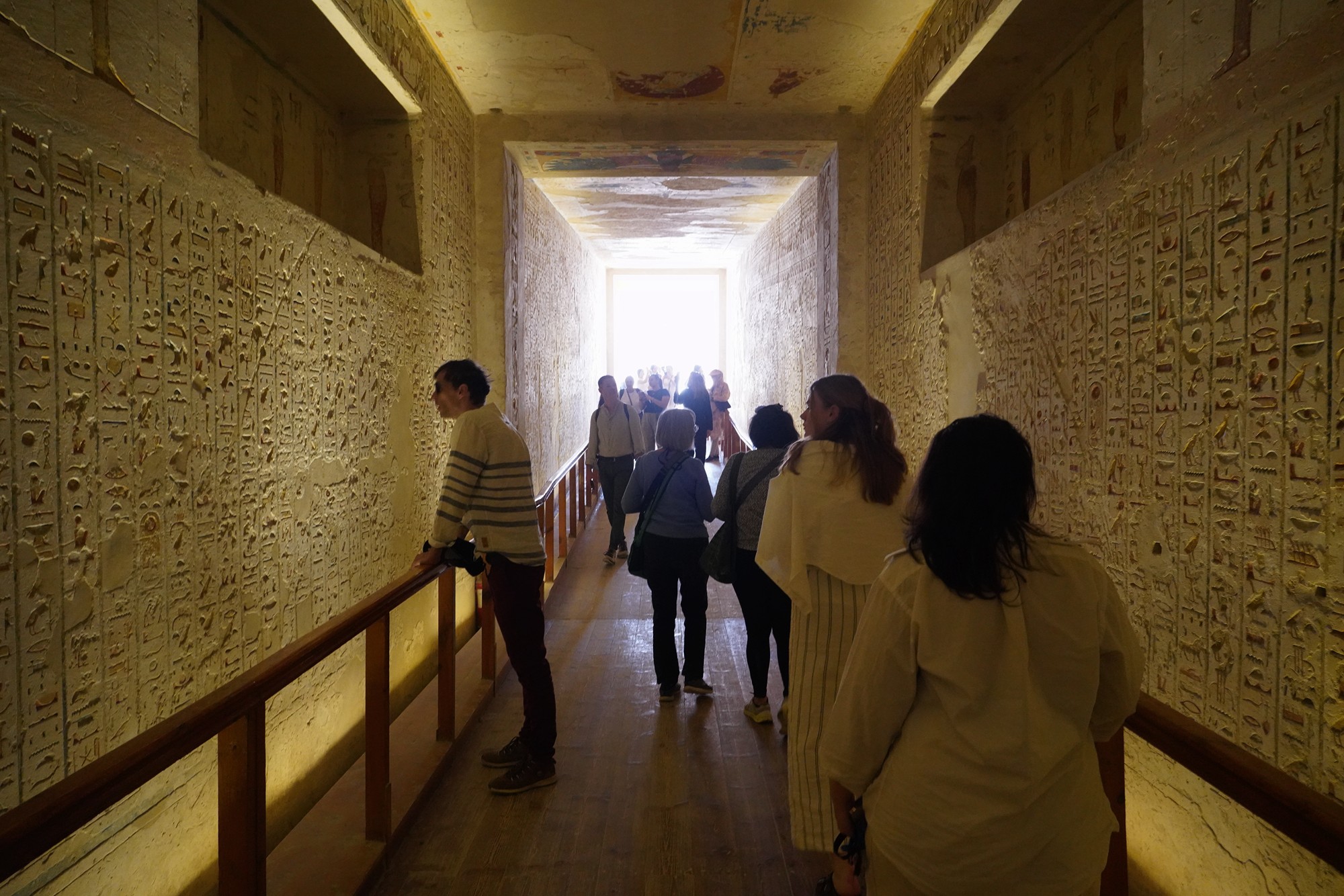

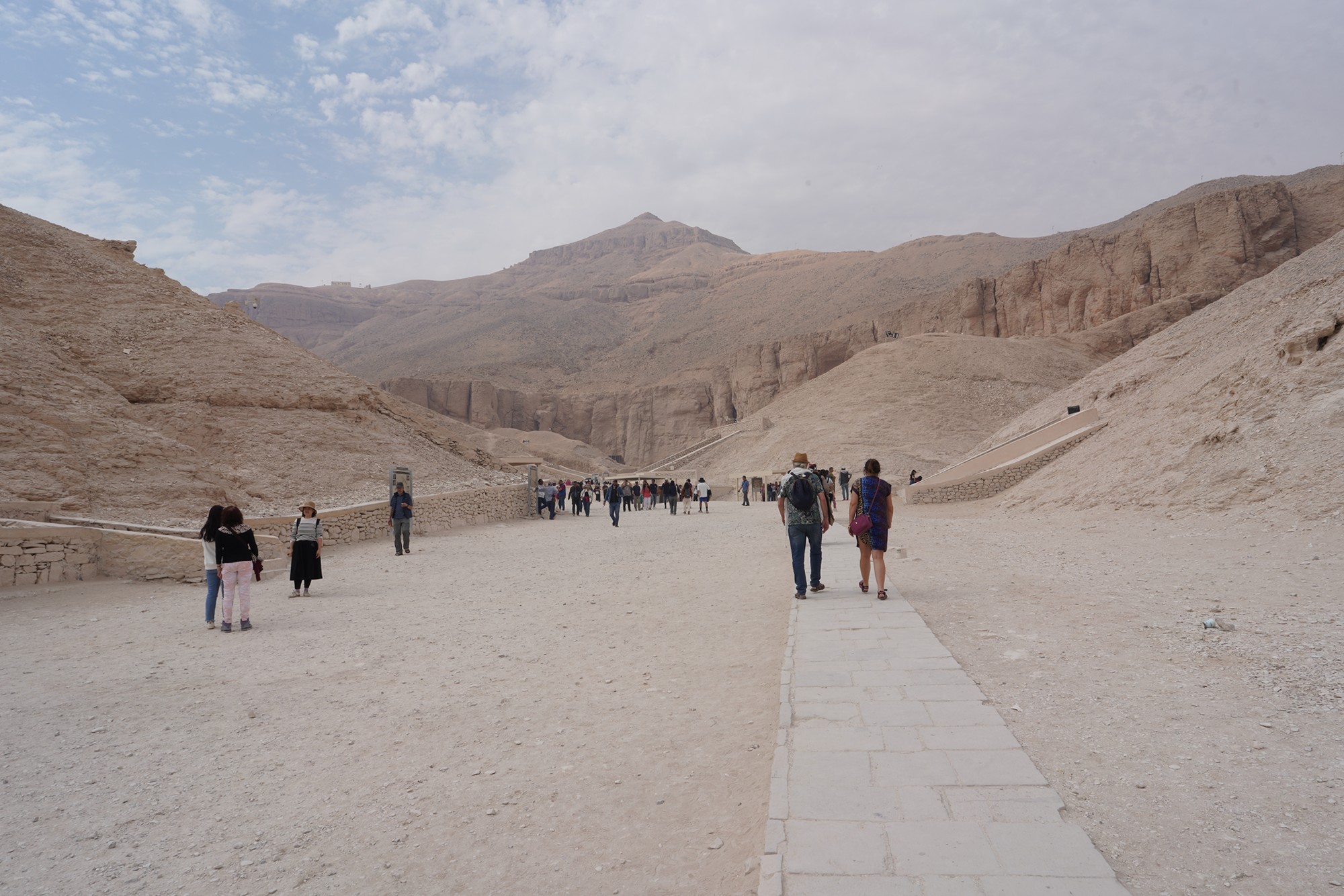
The third and final tomb was KV11 Rameses III.
Ramses III, also known as Usermaatre Meryamun Ramses III, was the second pharaoh of the Twentieth Dynasty of Ancient Egypt. He reigned from approximately 1186 to 1155 BCE during the New Kingdom period. Ramses III is renowned for his military victories and his efforts to maintain stability within the Egyptian kingdom.
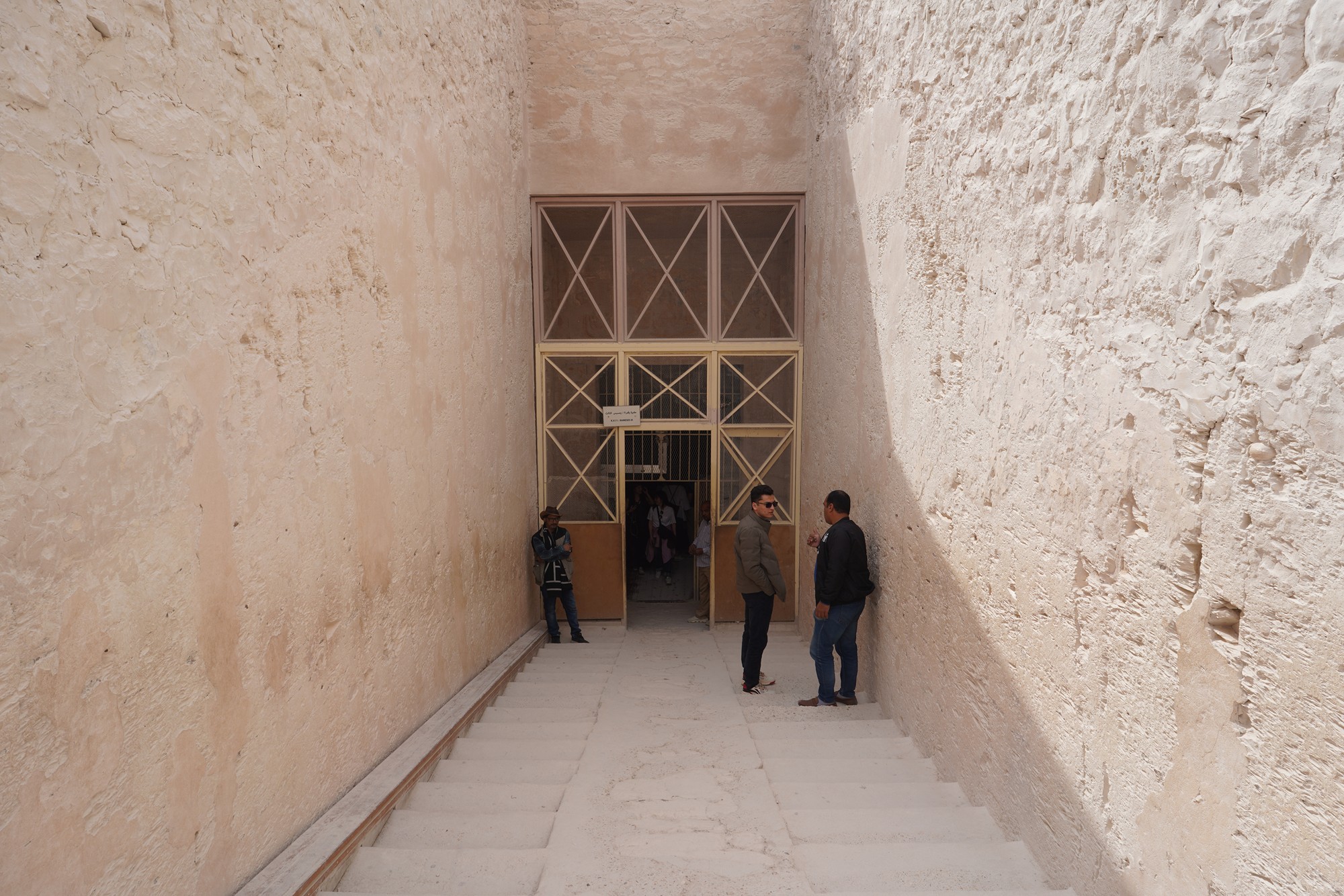
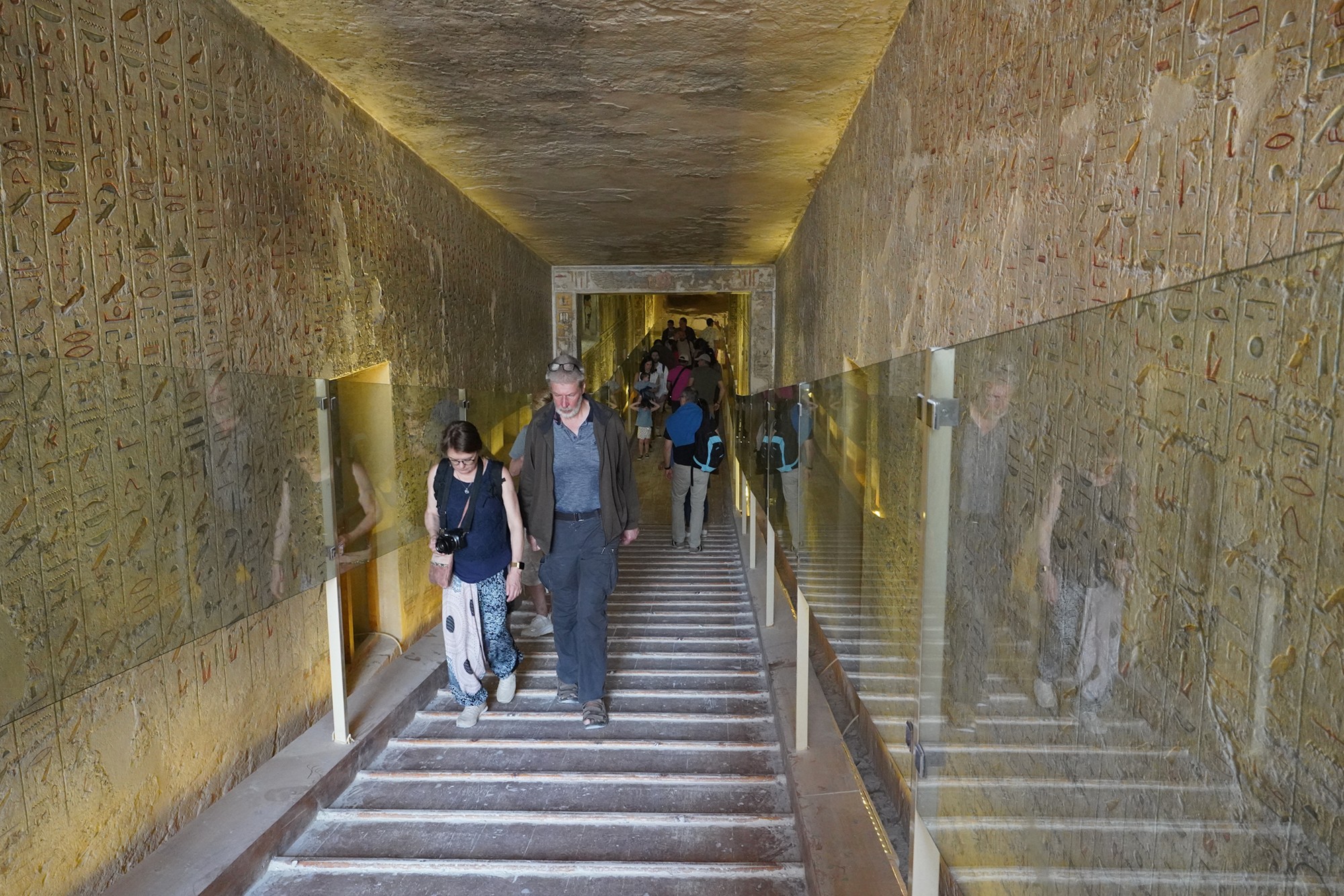
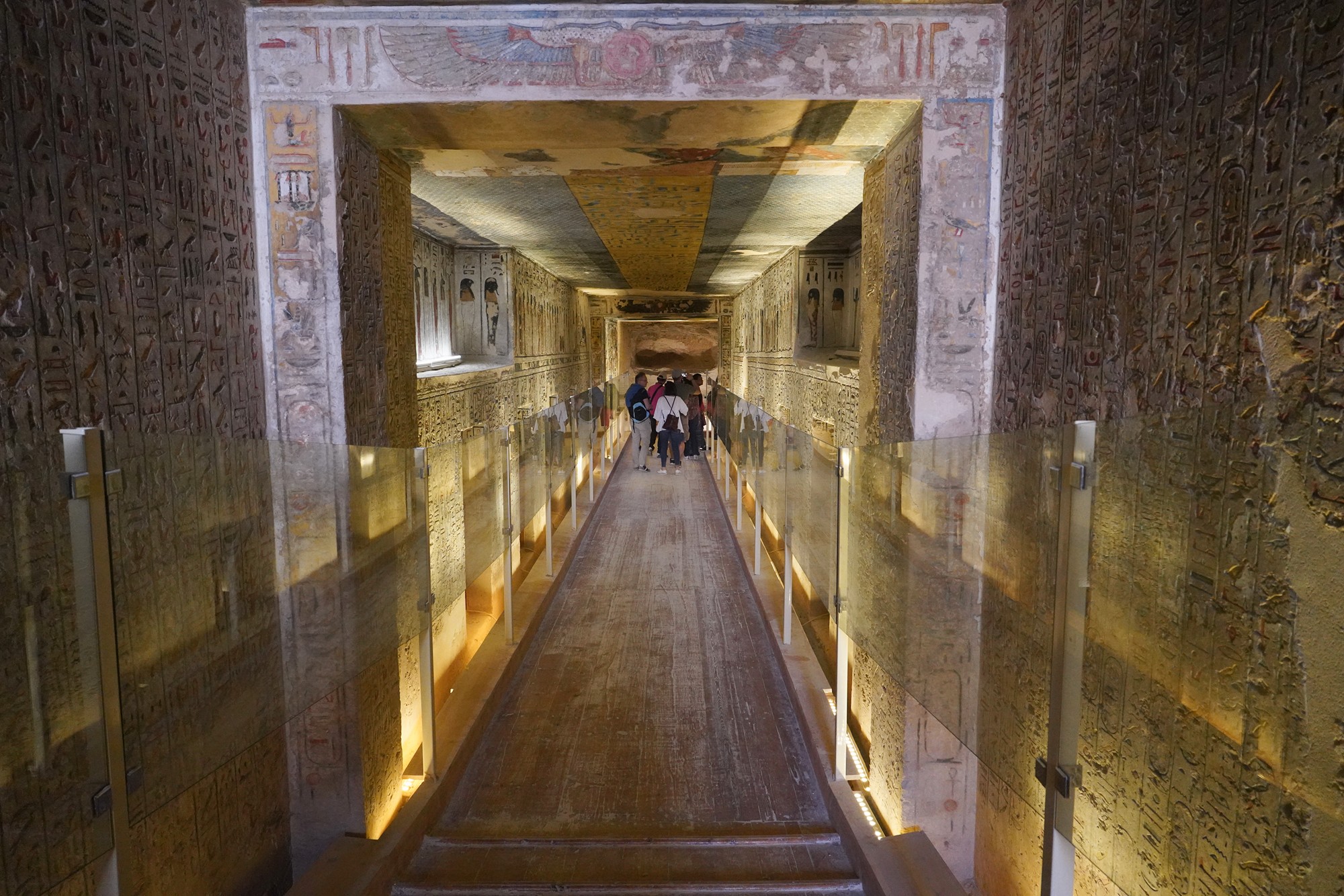
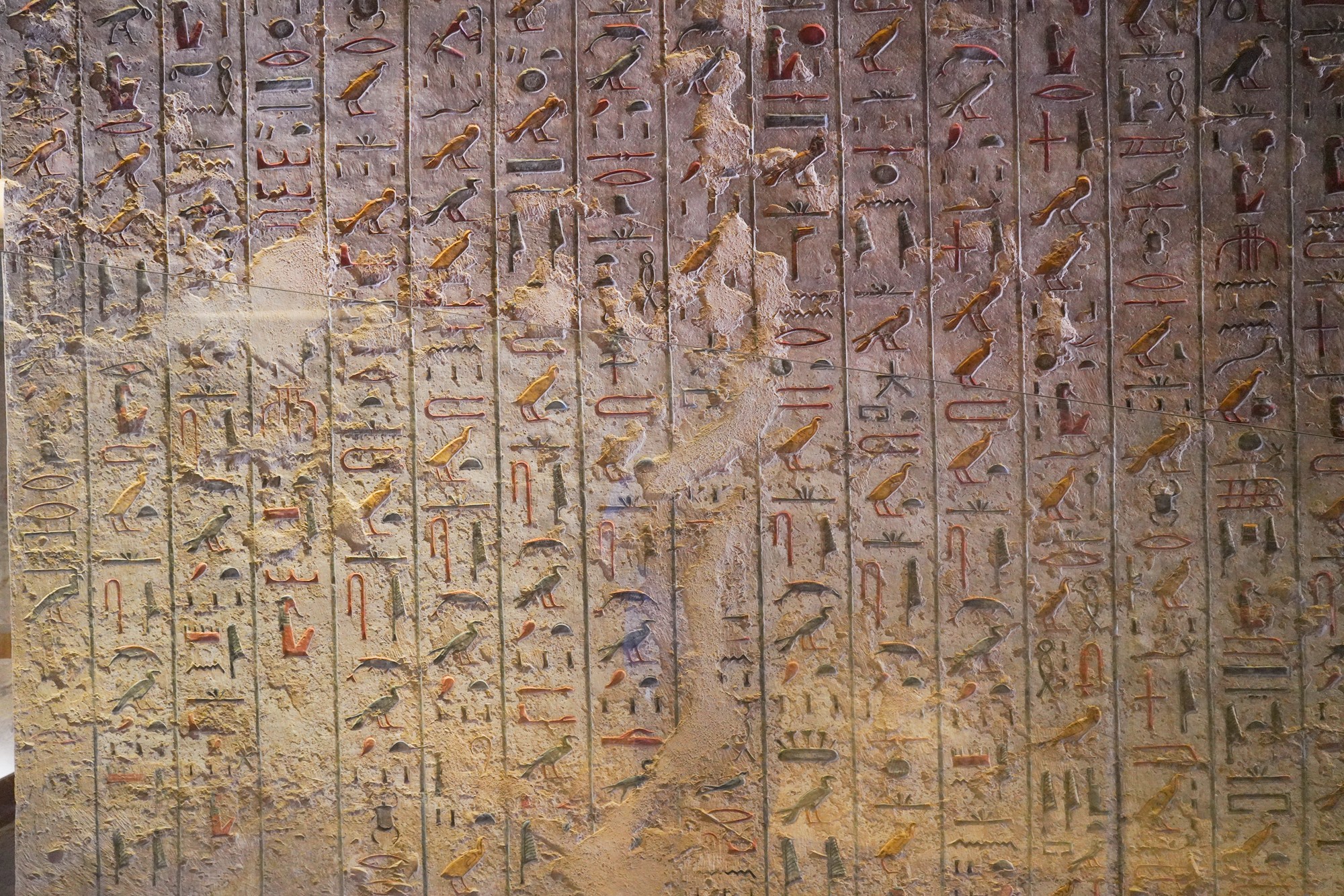
This tomb walkway has a 90-degree turn to the right.
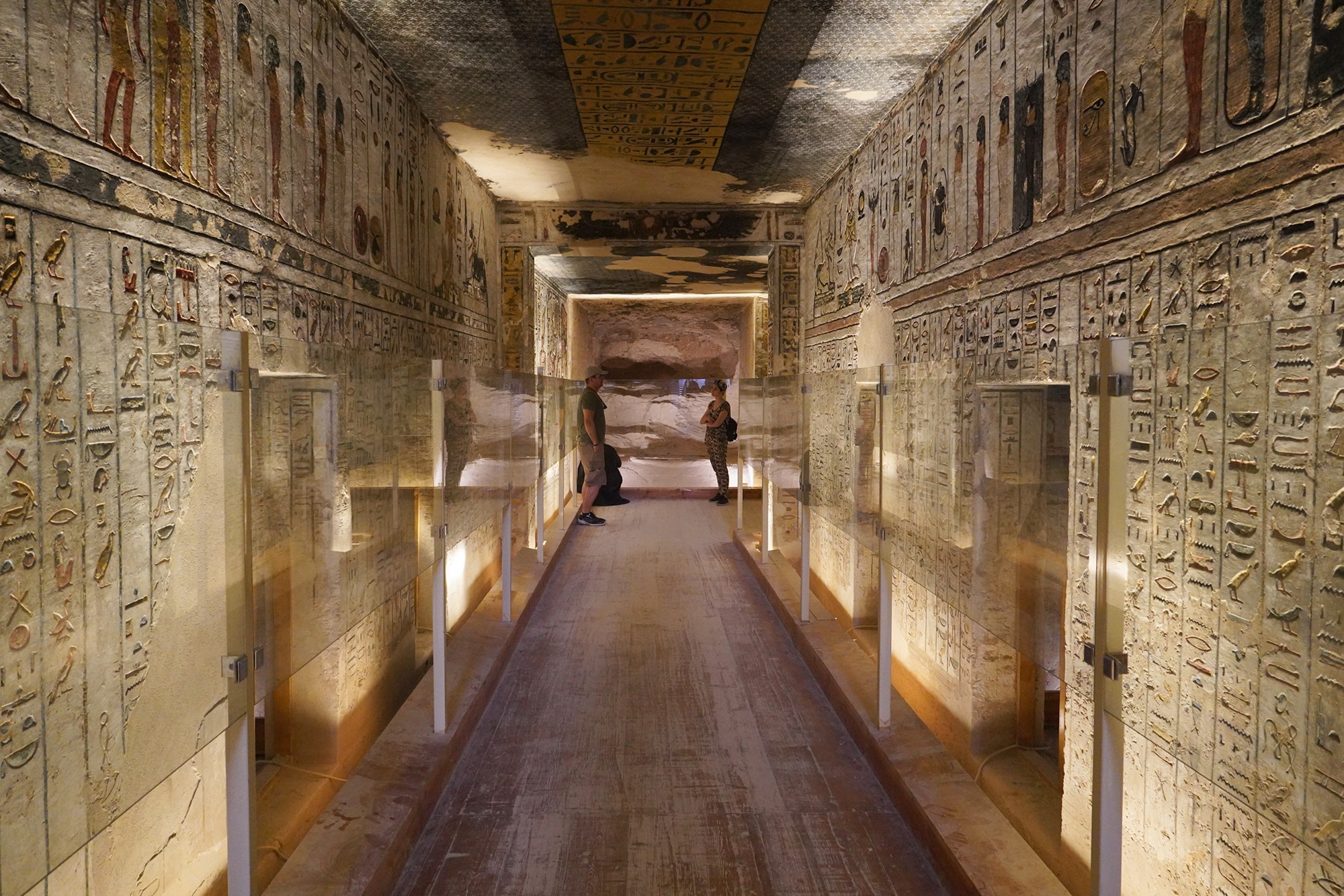
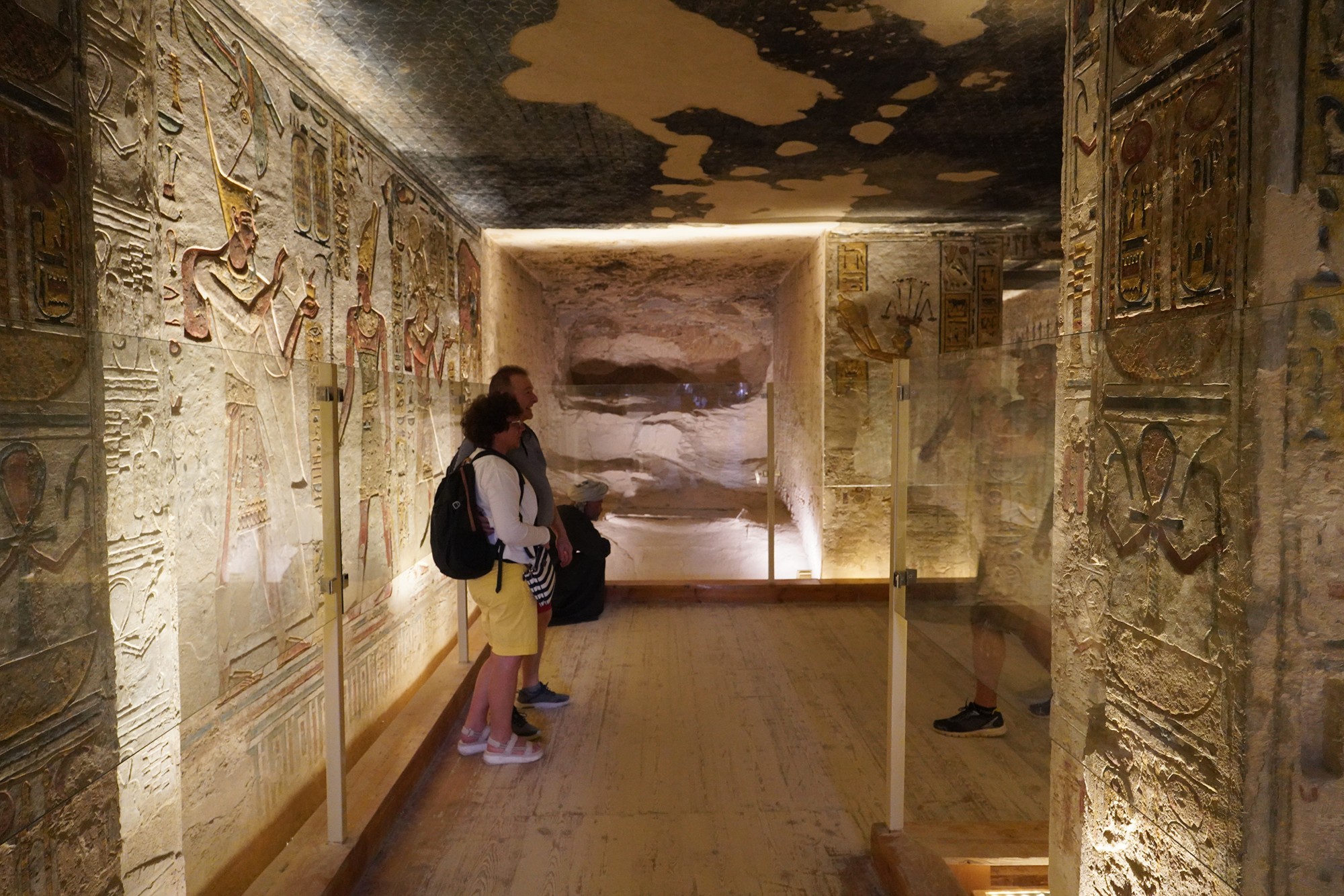
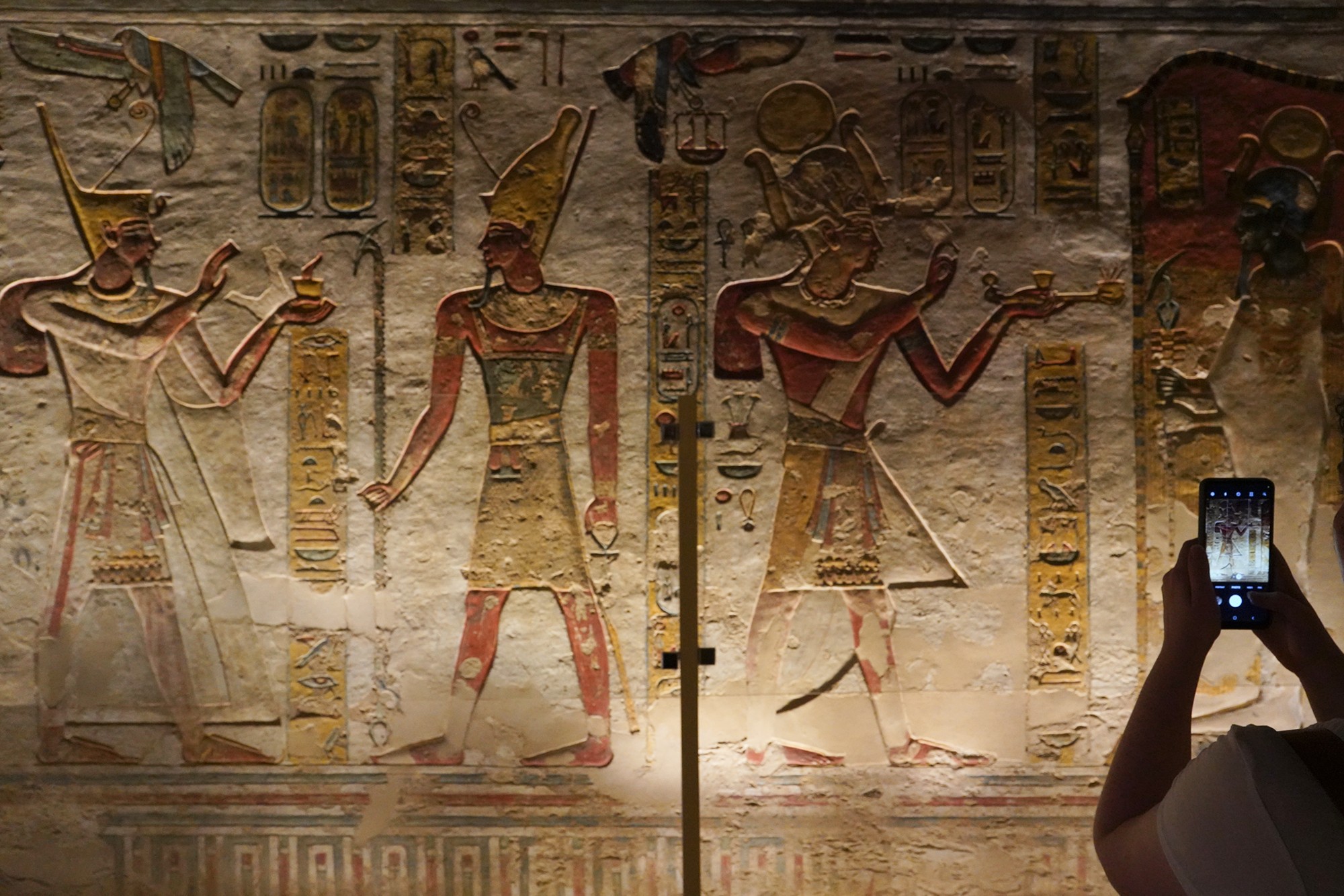
I turned right and went straight again
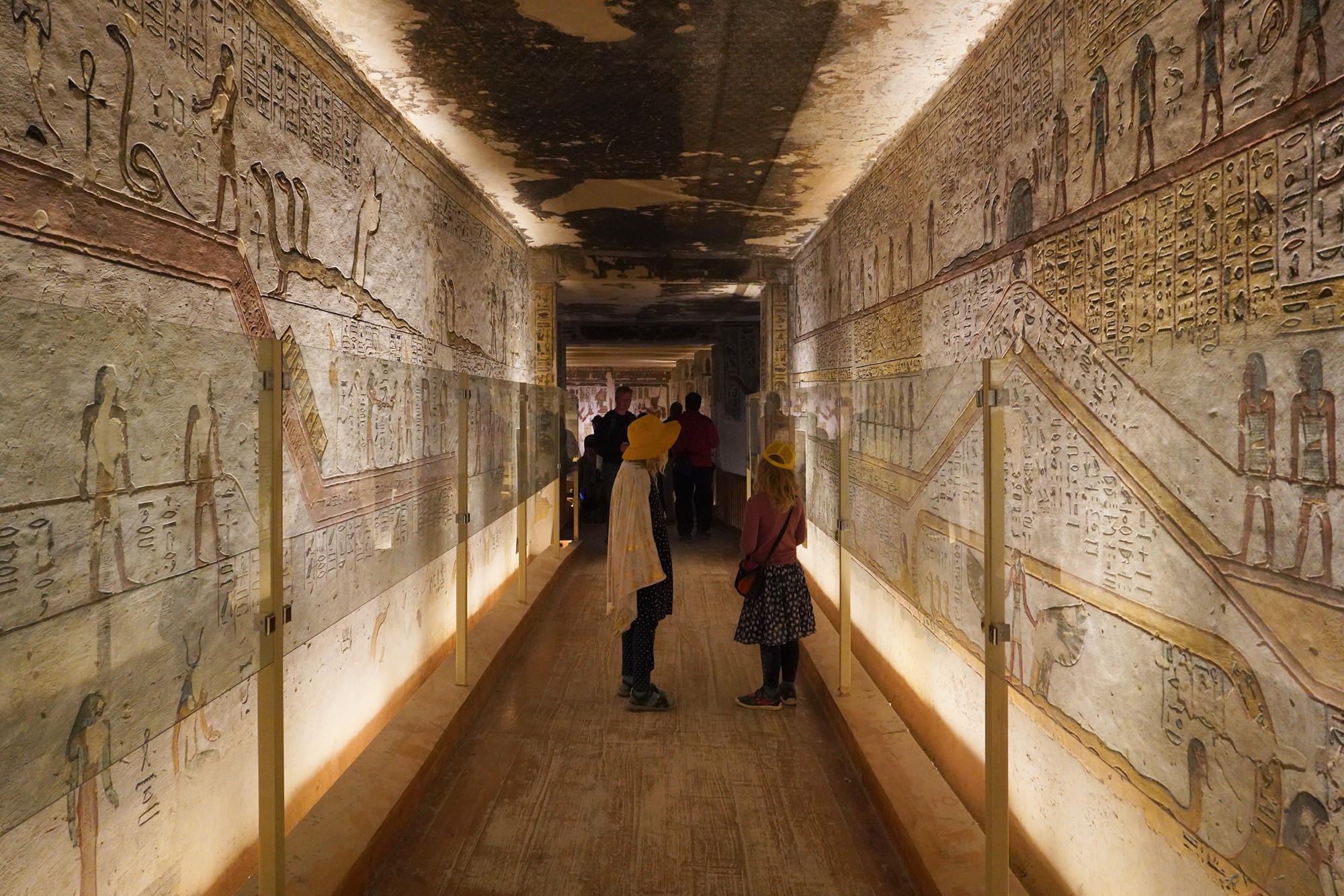
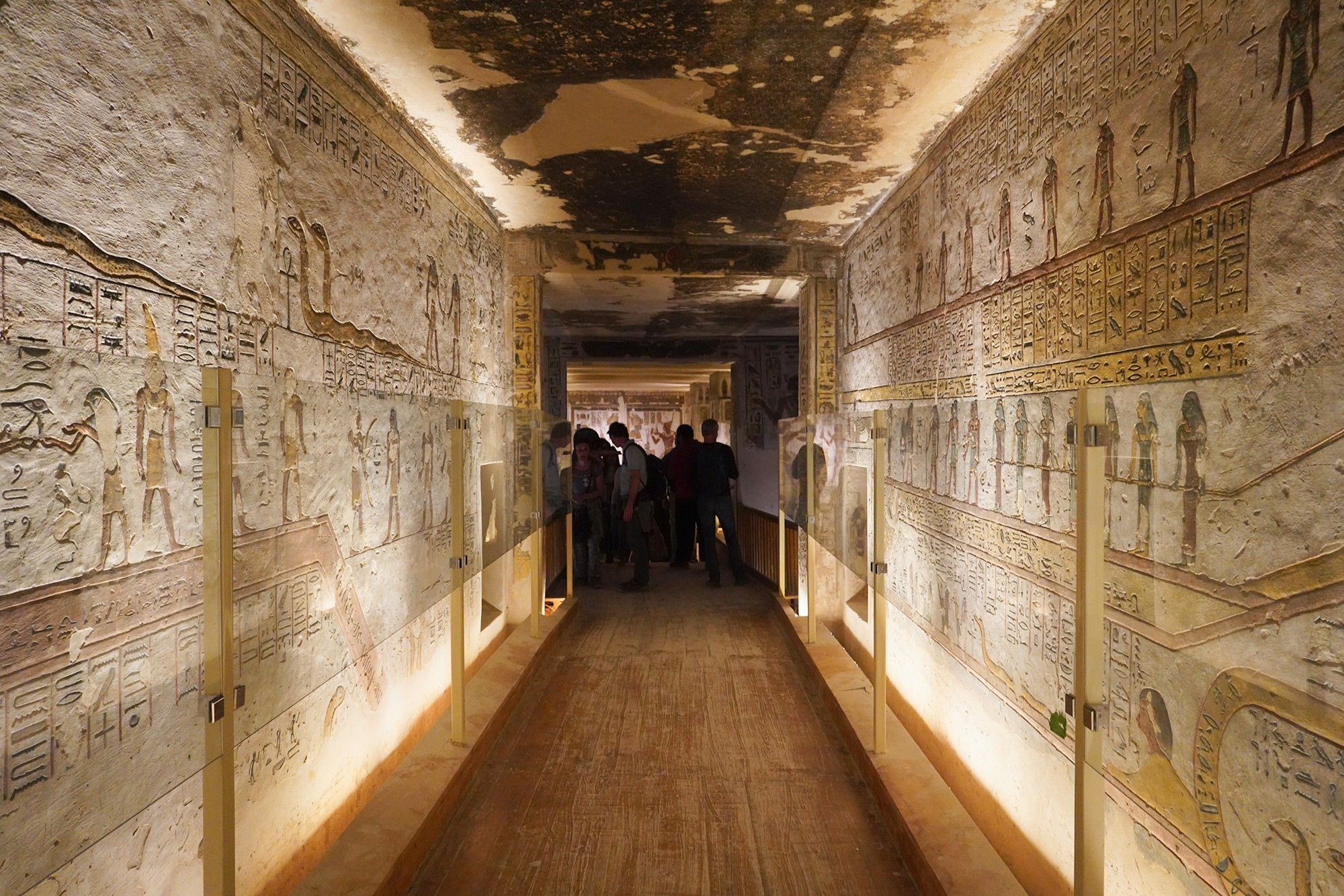
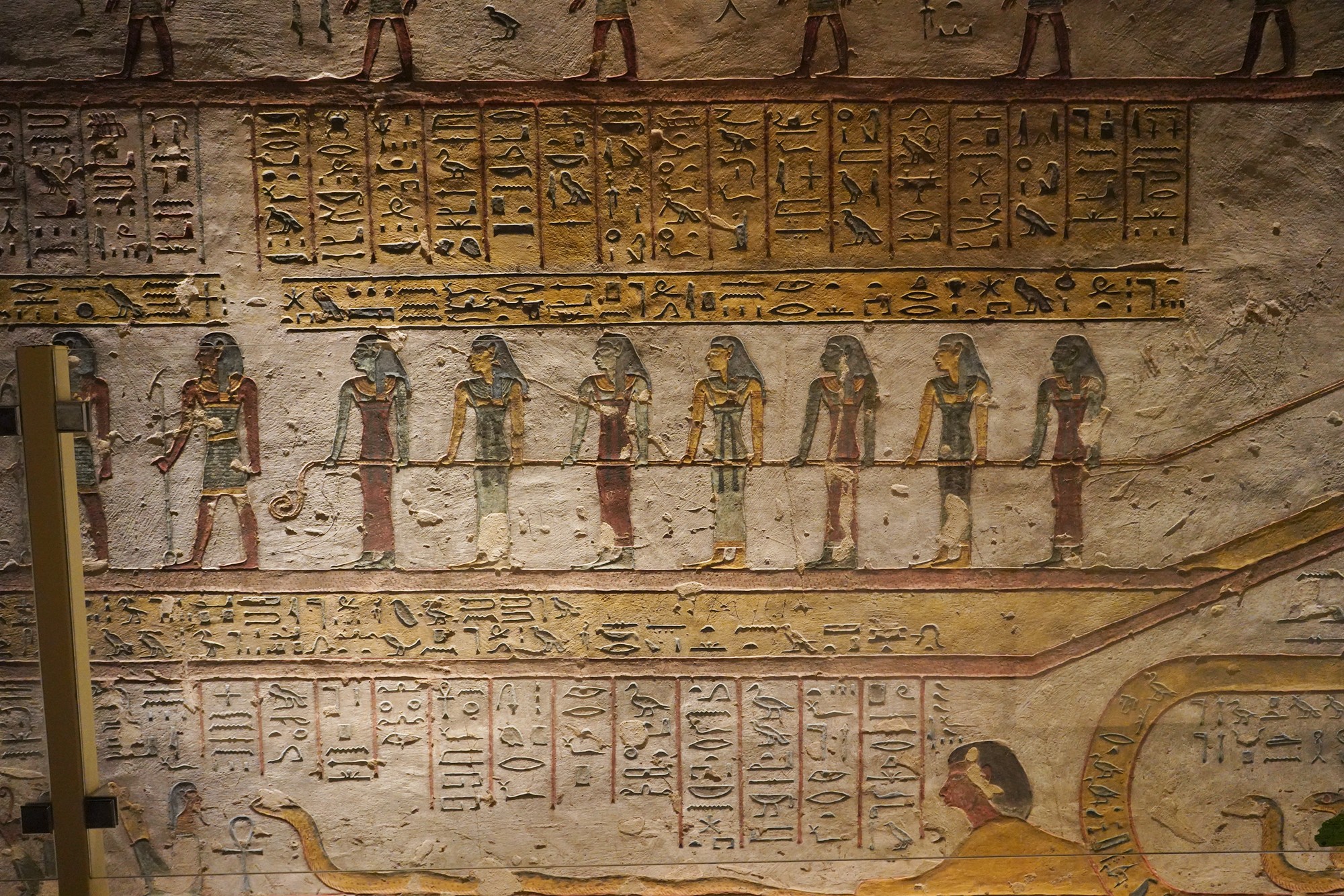
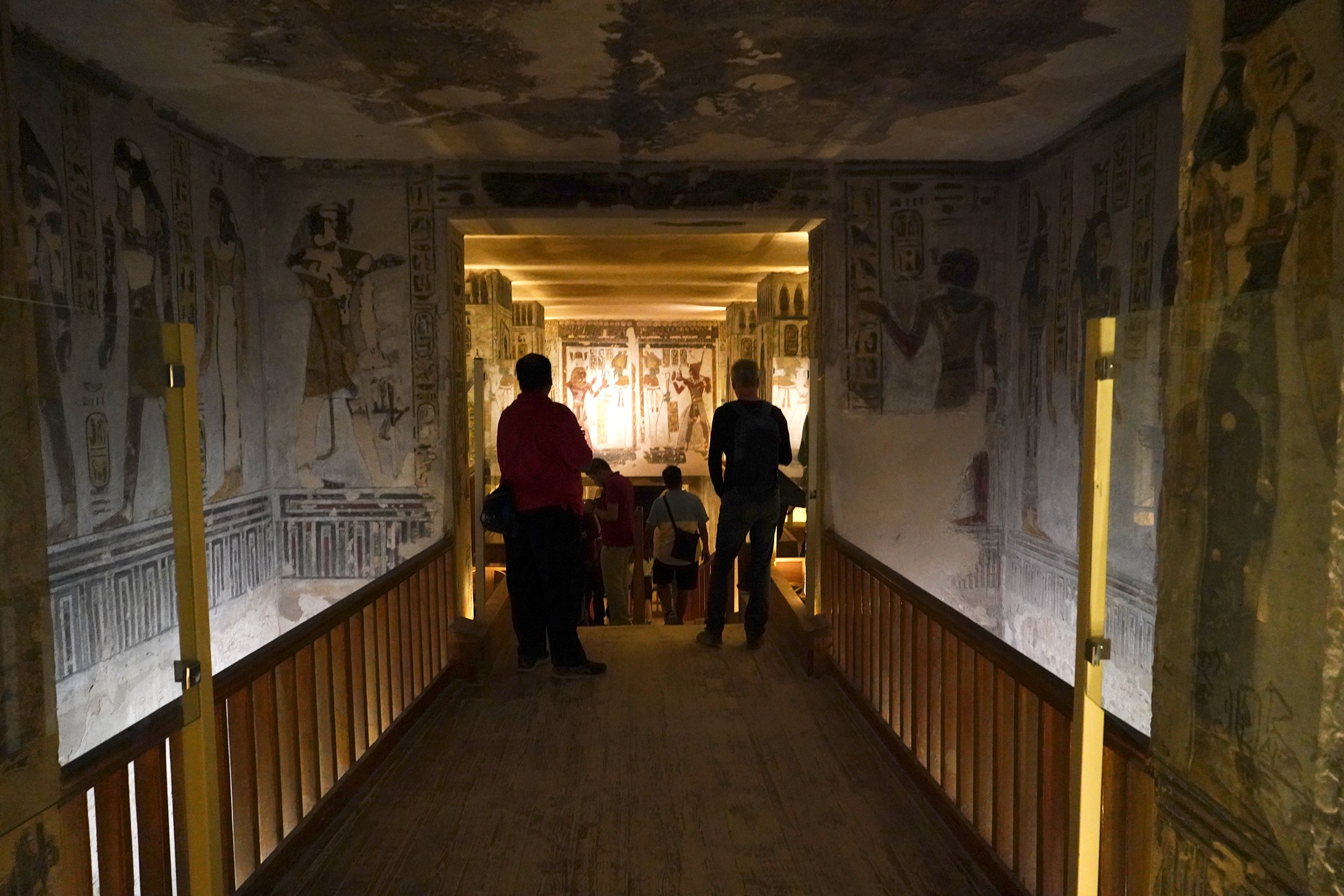
There are two side rooms besides the stairs.

Explored the side room
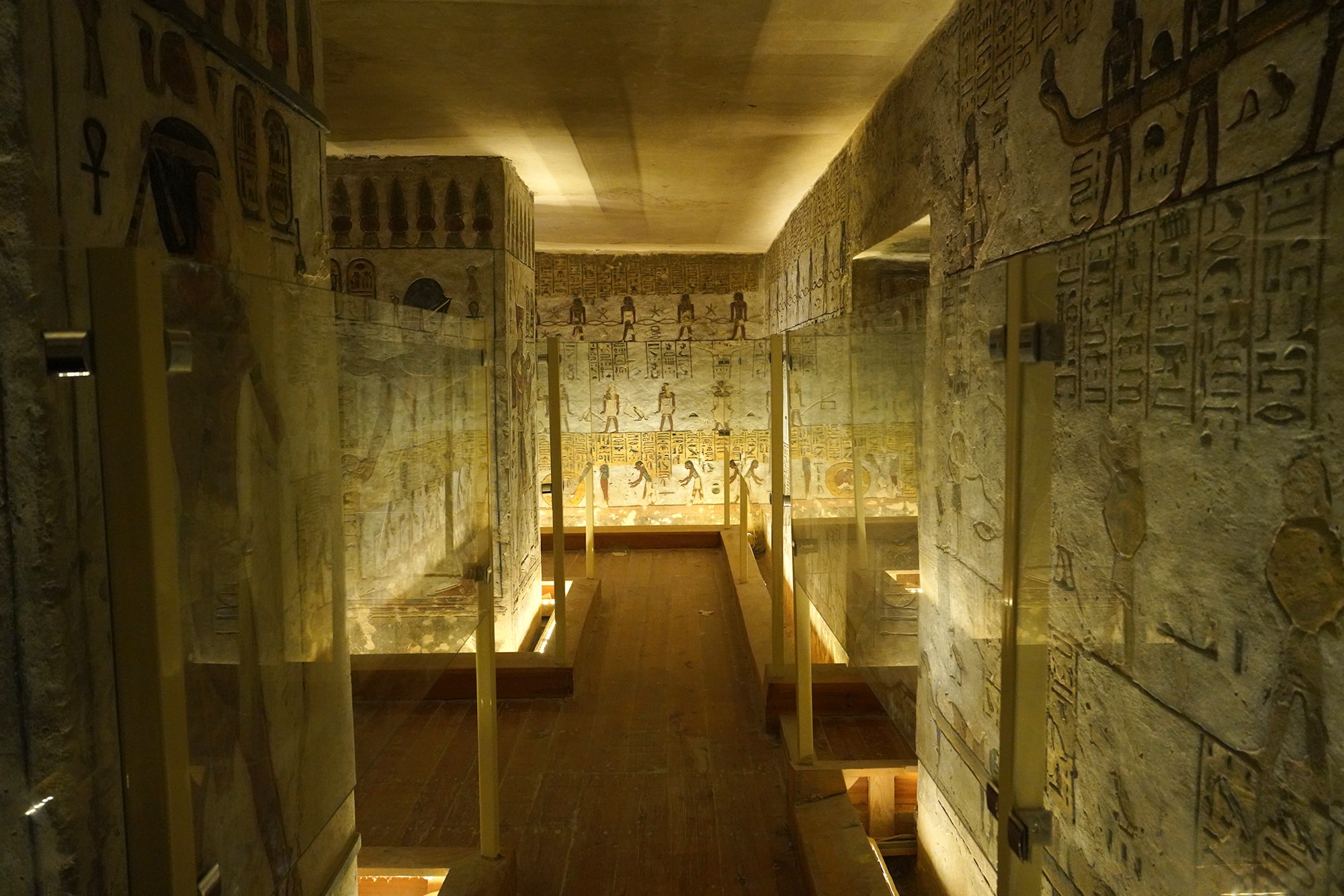
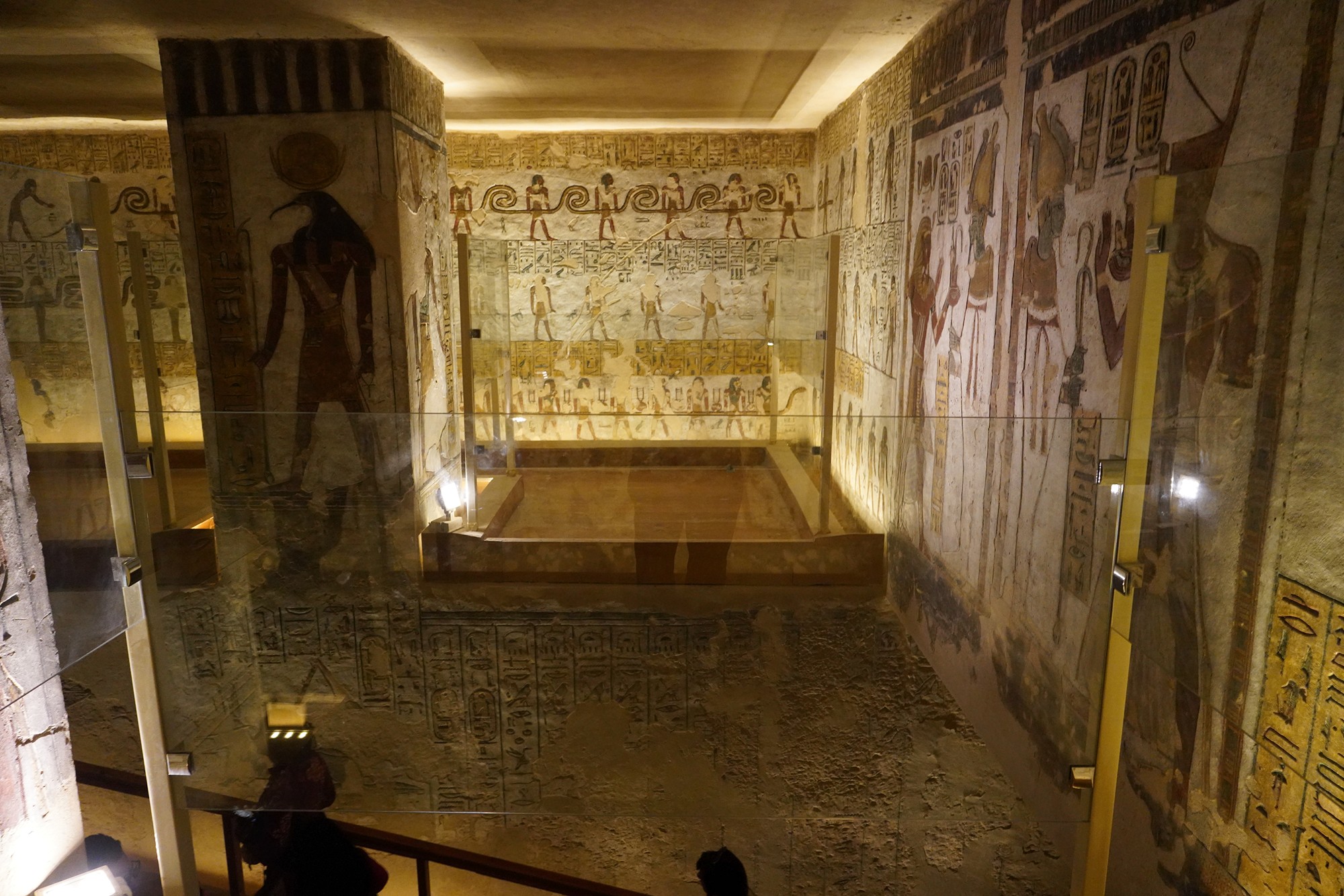

Came back to the stairs
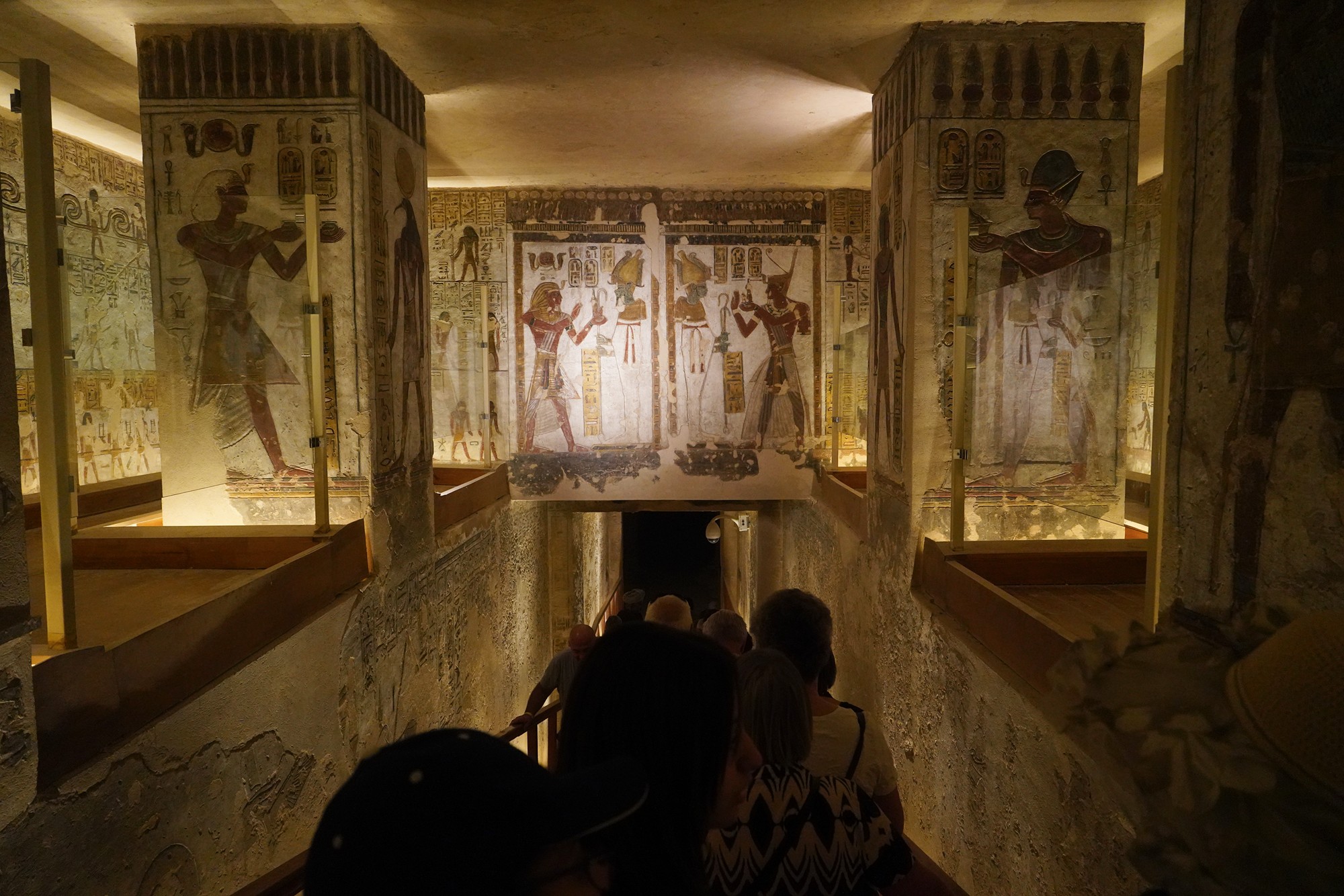
The end of the tombs
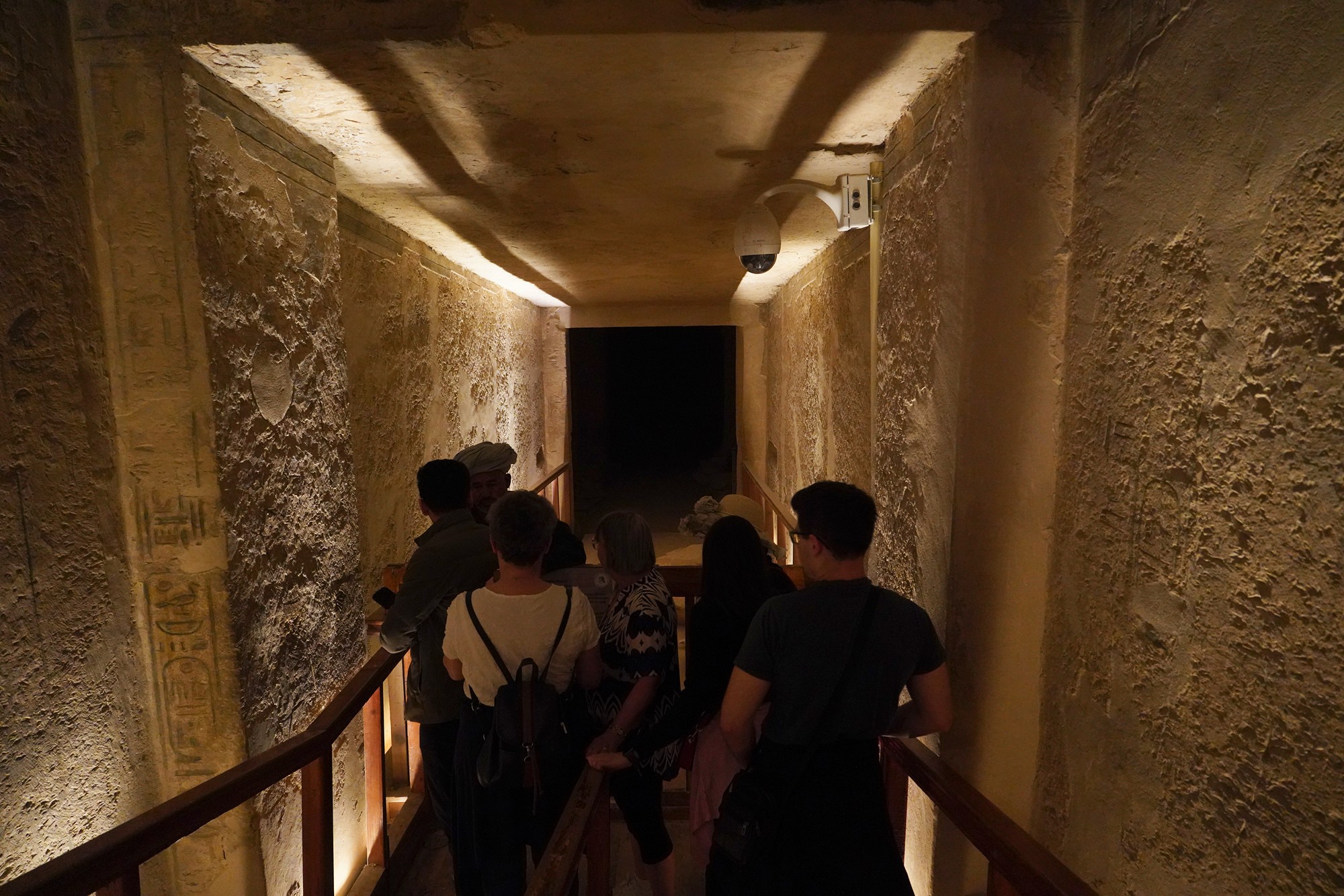
Walked back to the entrance
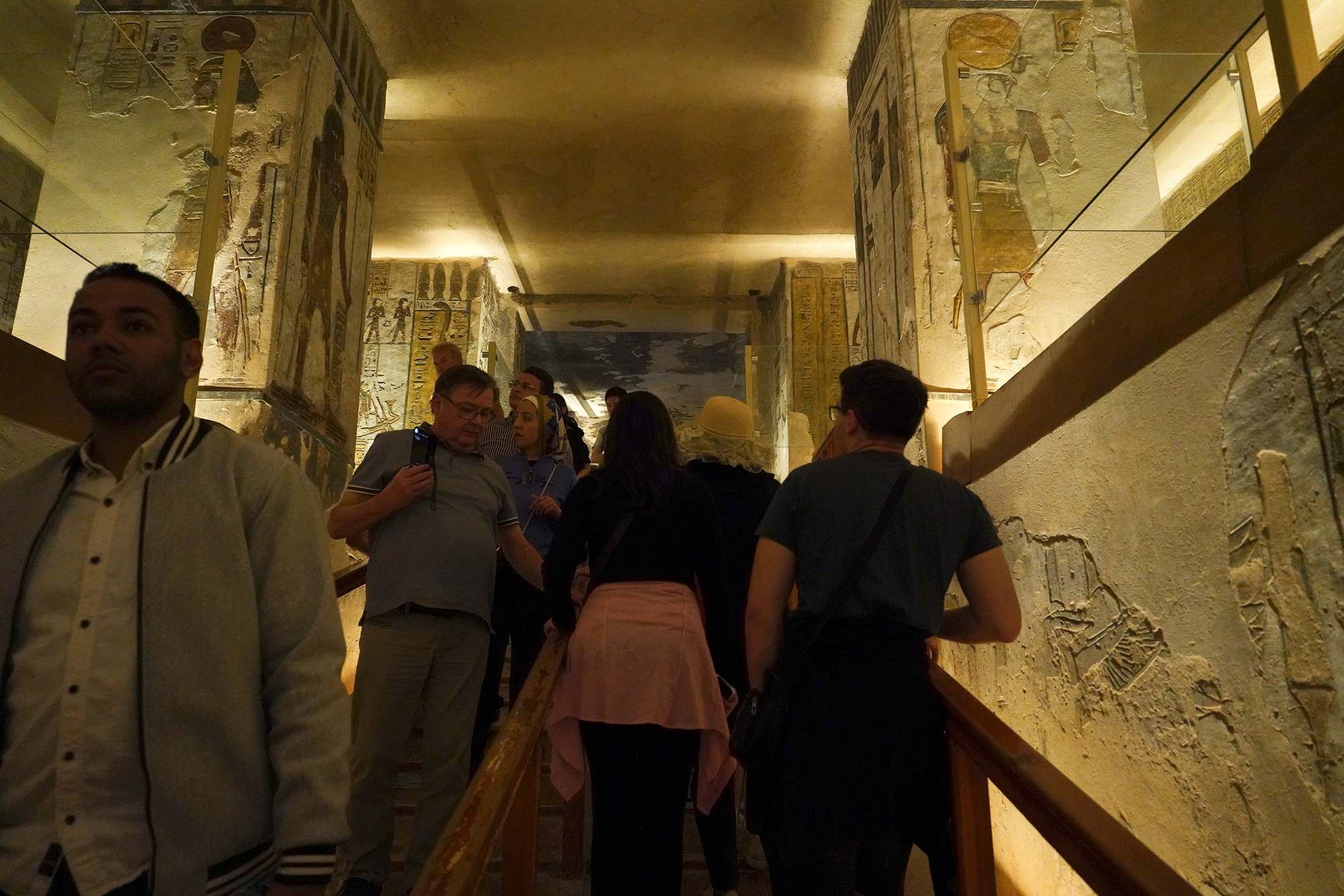
Came back to the turned area



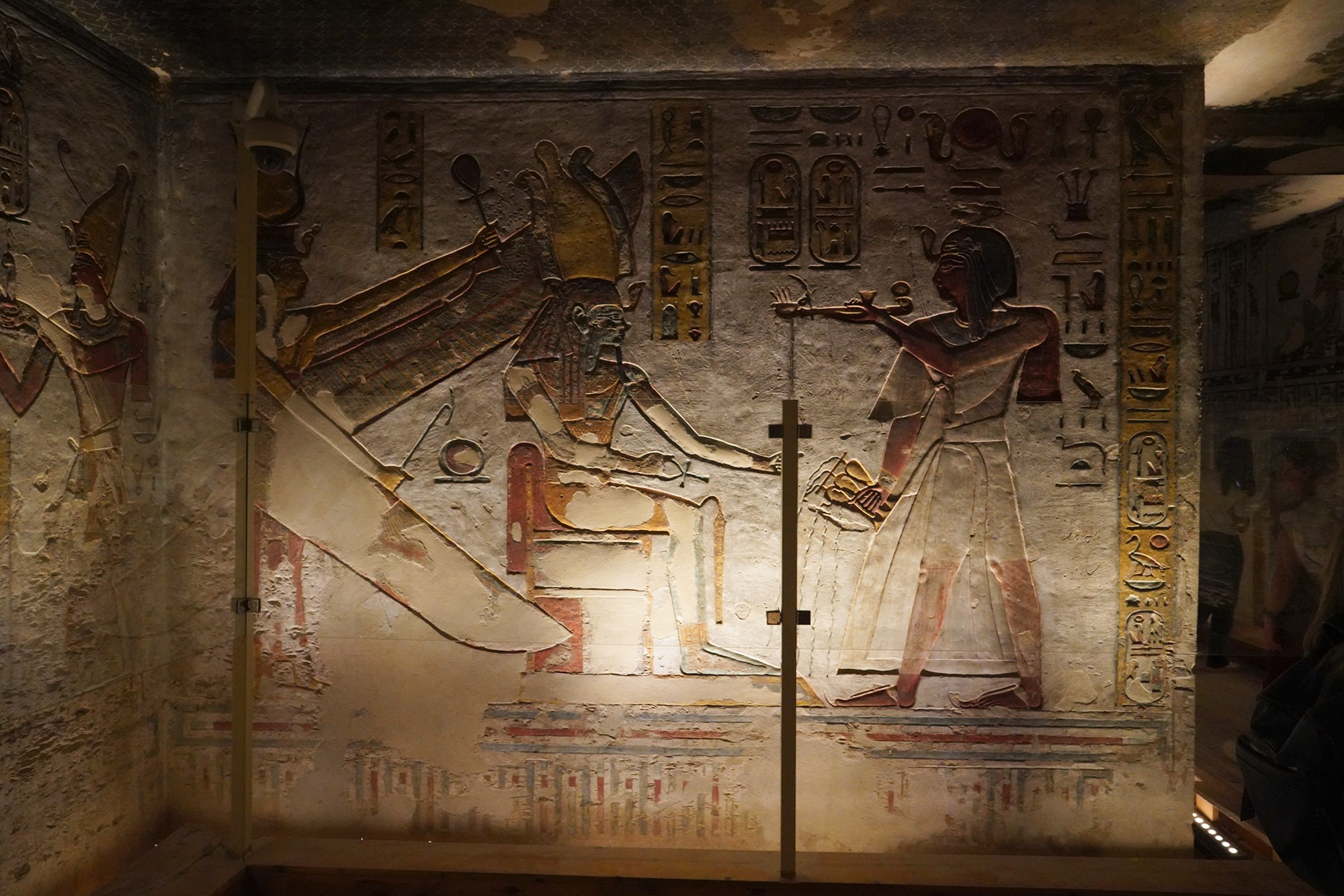
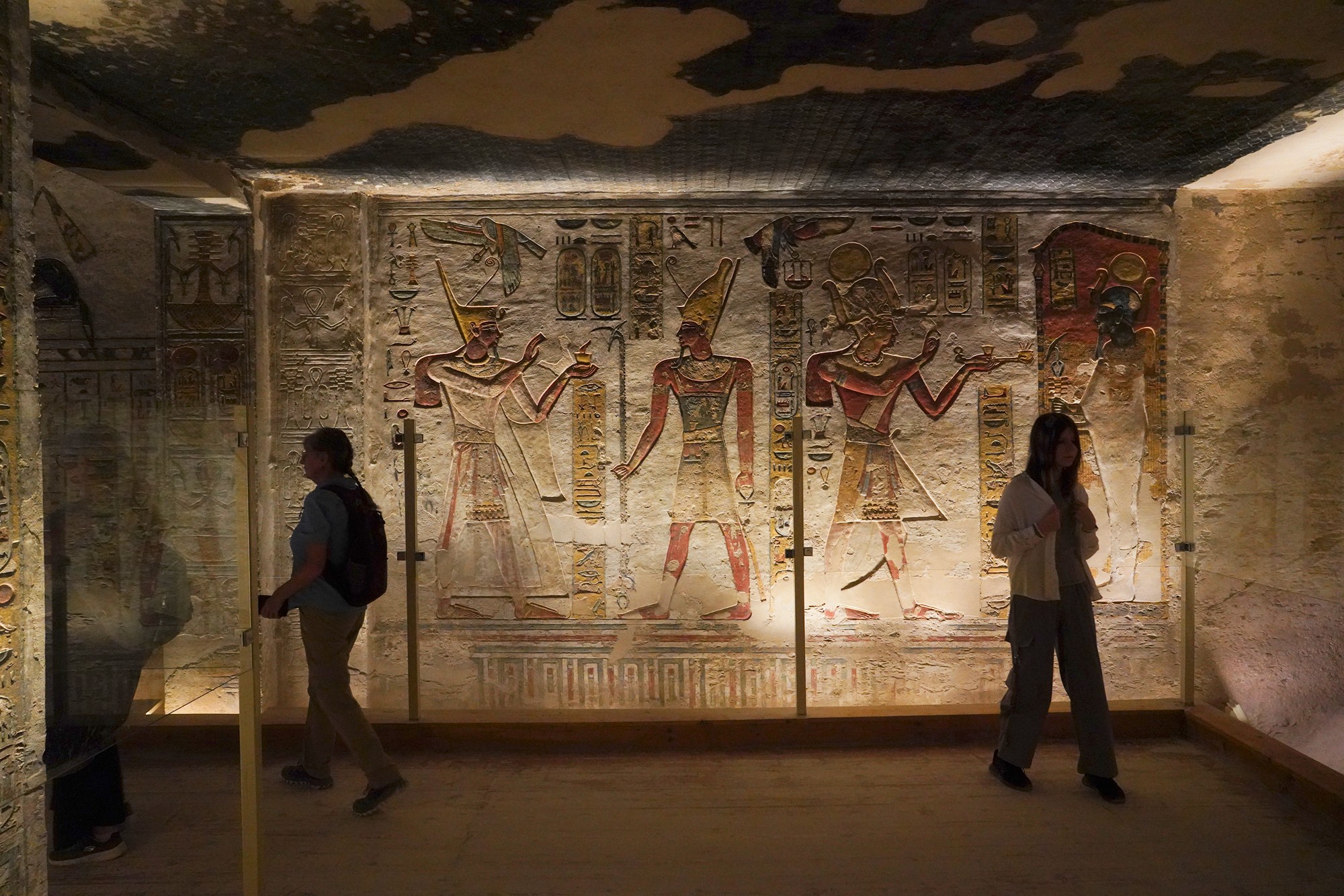

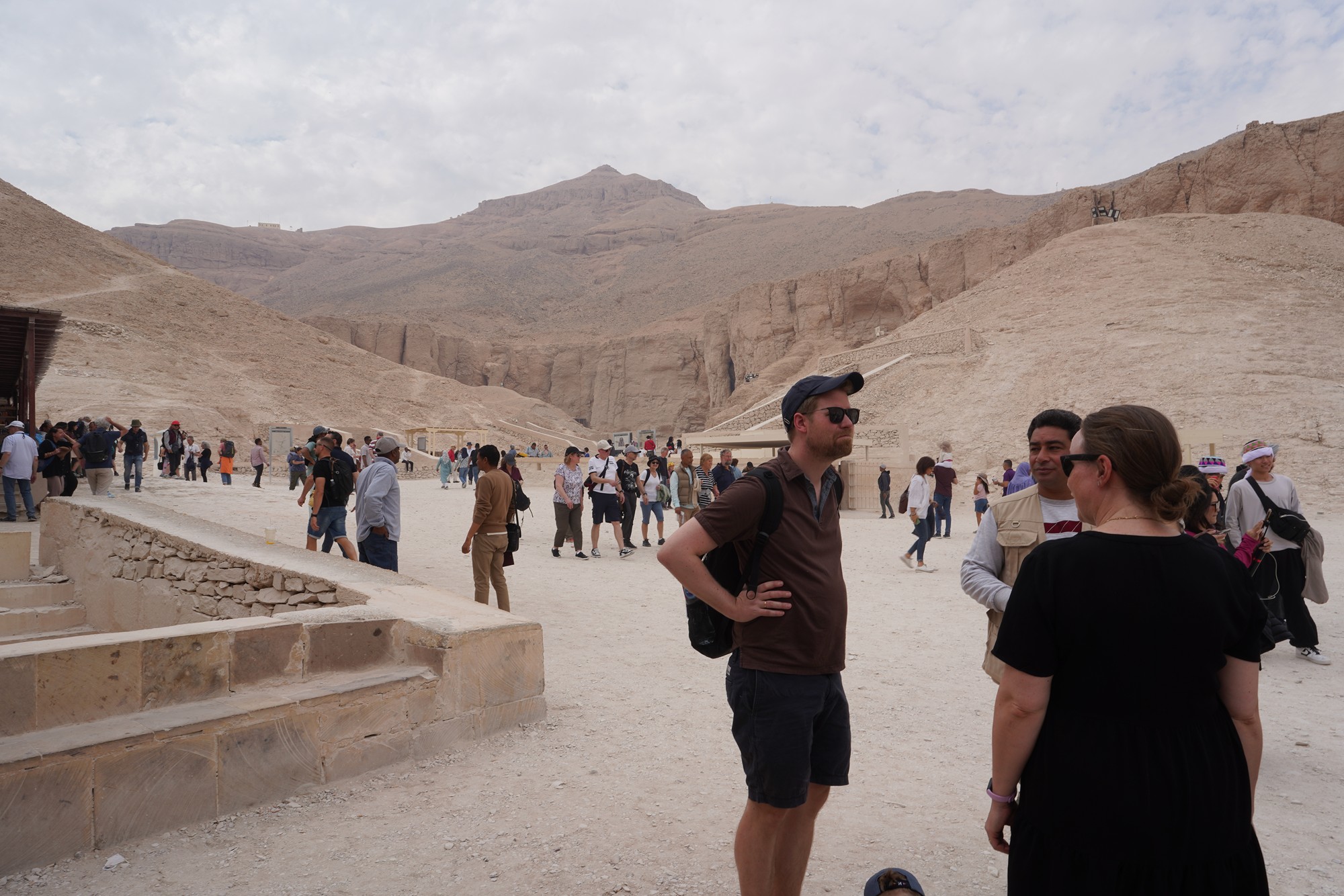
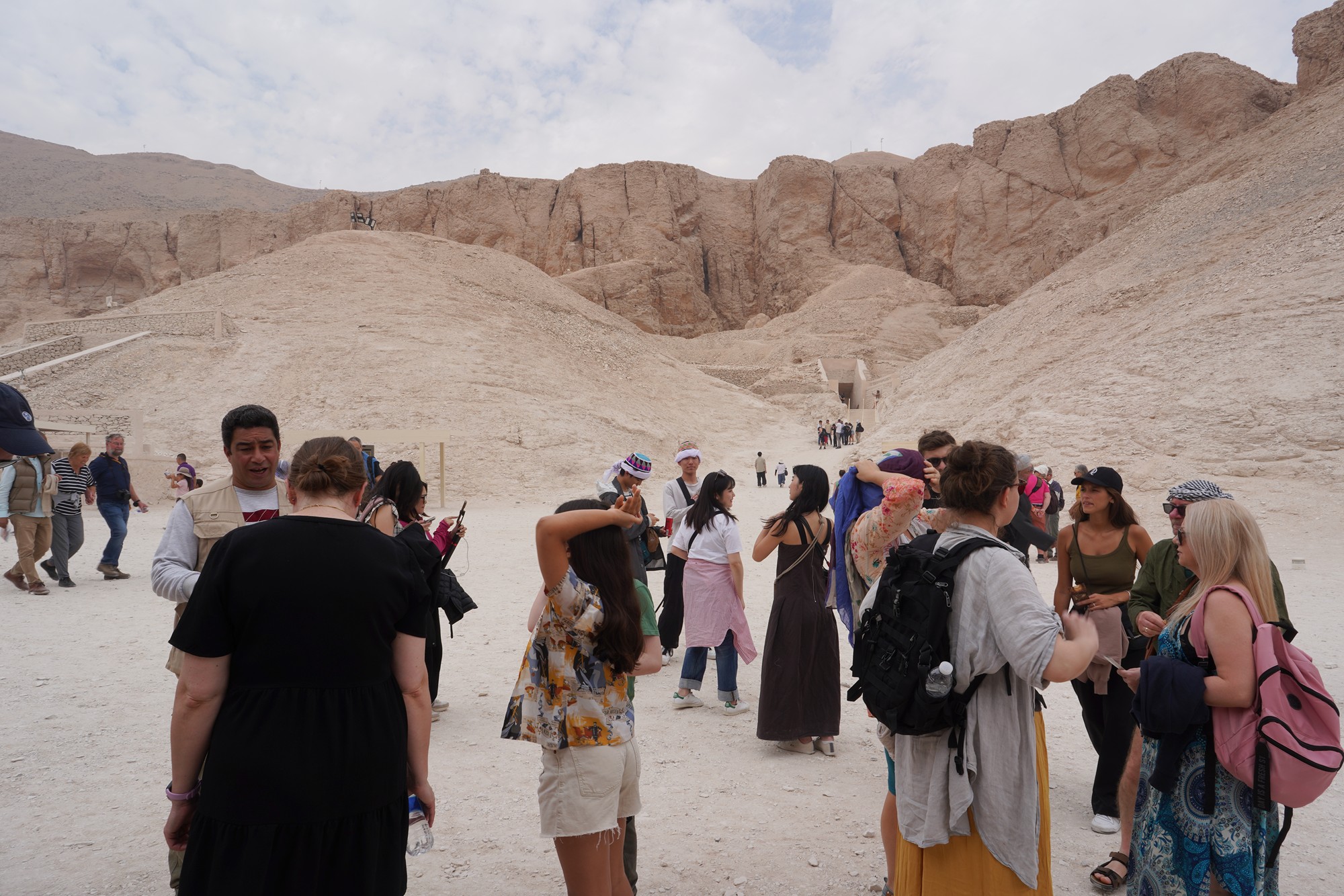
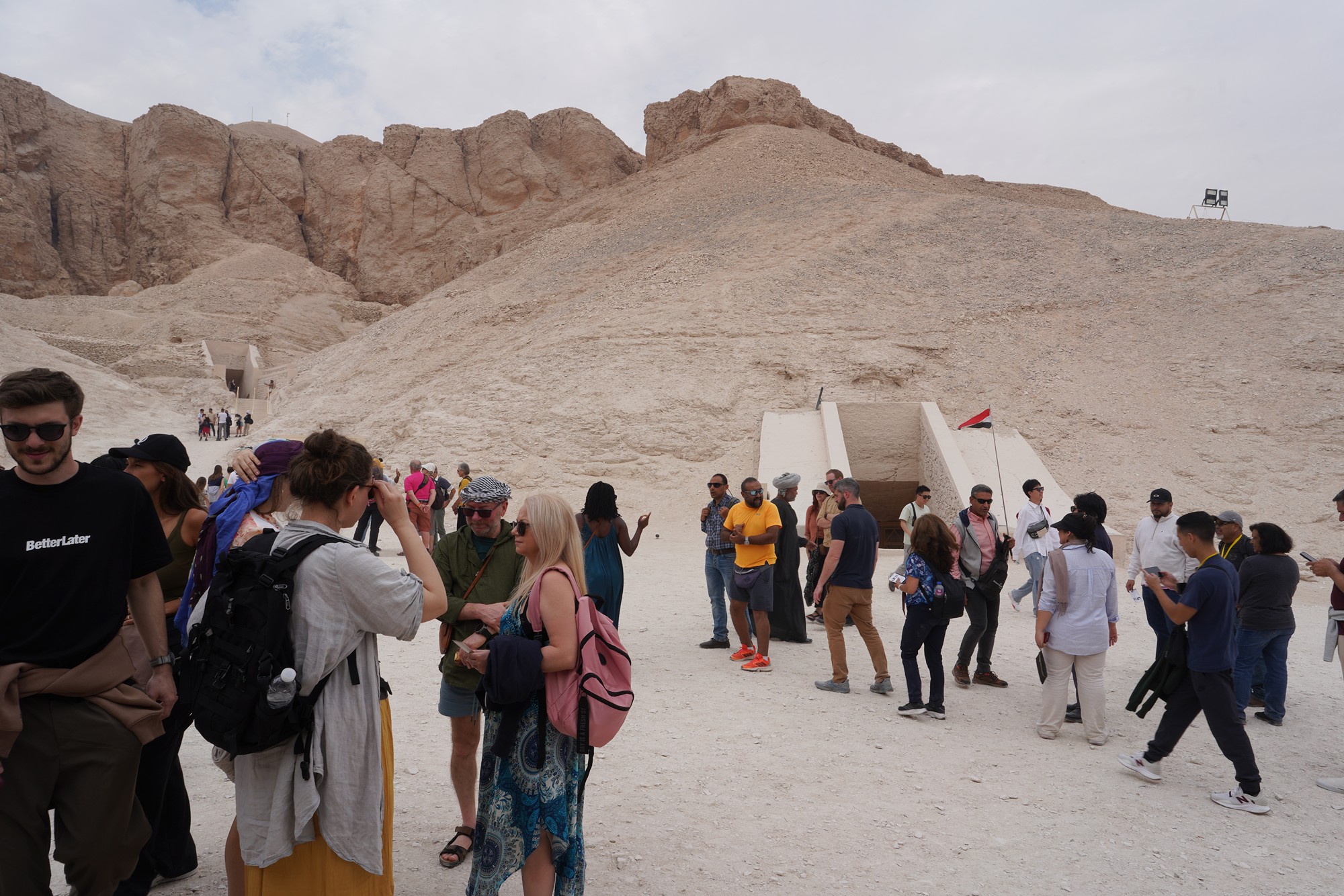
We had a short tour bus ride to the next destination, the Mortuary Temple of Hatshepsut.

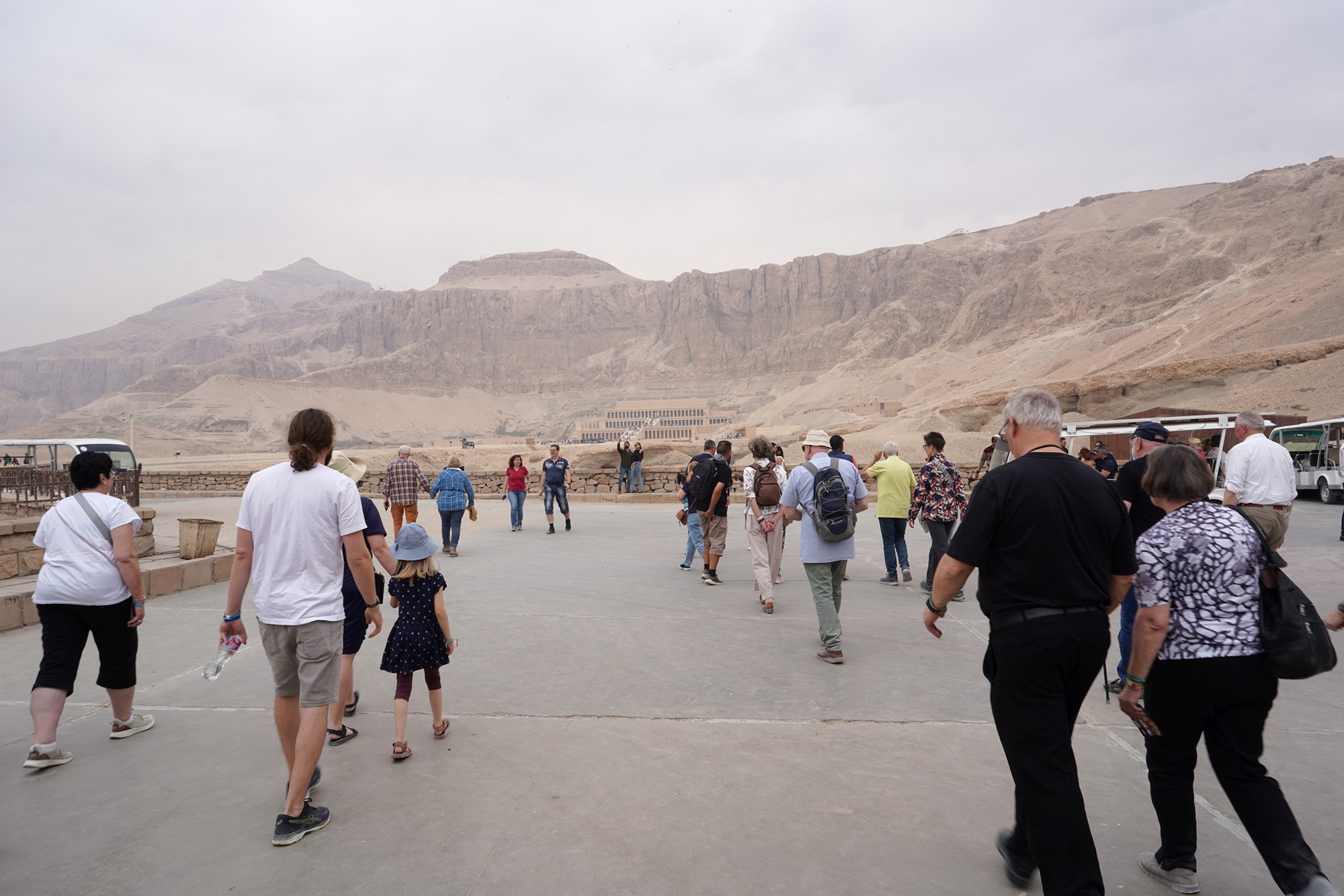
The ticket booth for the trams
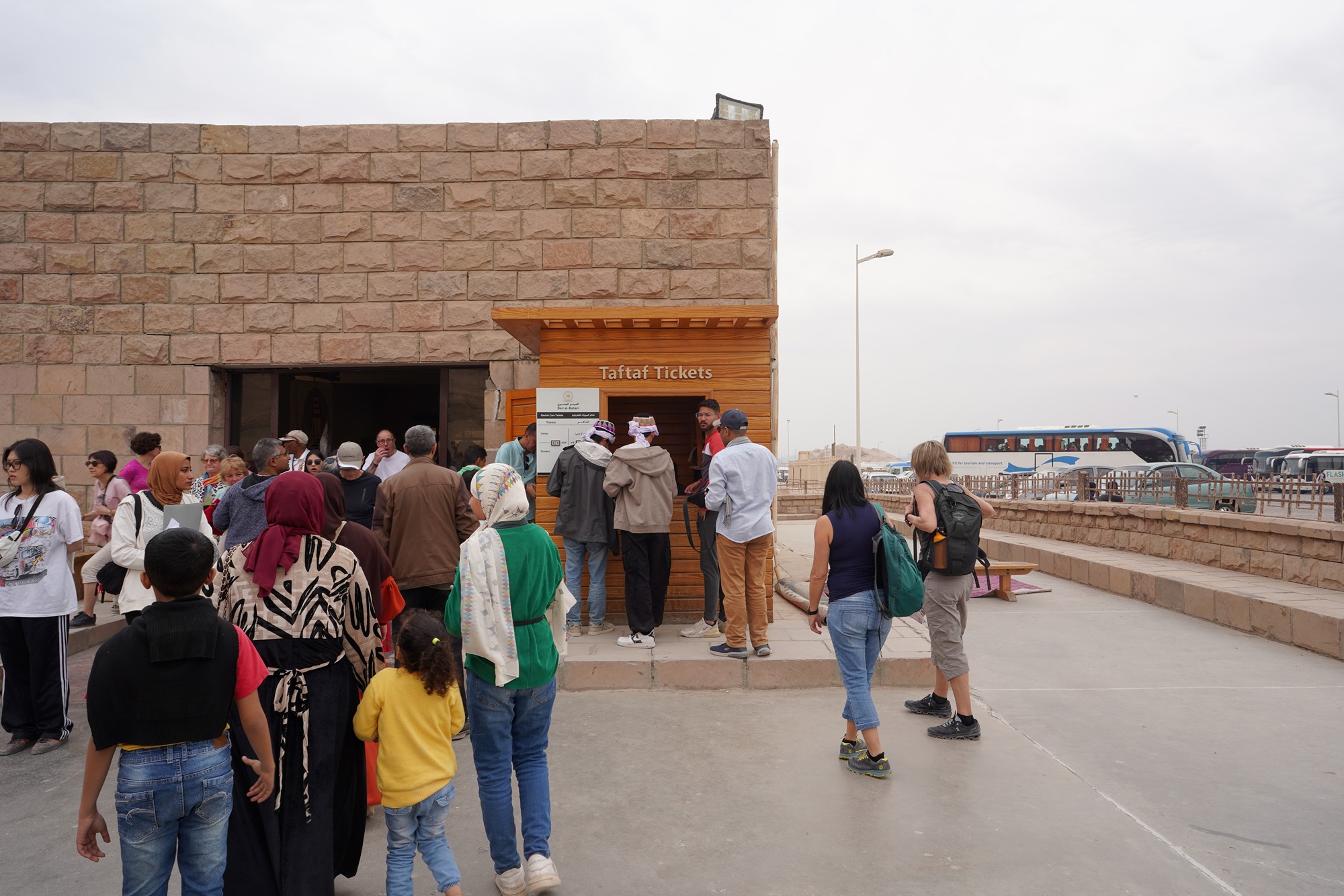
On the tram

The Mortuary Temple of Hatshepsut

The temple was built in honor of Hatshepsut, one of the few female pharaohs of ancient Egypt. She ruled during the Eighteenth Dynasty (circa 1479–1458 BCE) and was known for her successful reign and ambitious building projects.
The three levels of the temple are dedicated to different deities and purposes. The lower terrace contains the main entrance and a colonnaded courtyard, the middle terrace features chapels and statues, and the upper terrace houses the main sanctuary and the Hathor Shrine.
The lower terrace was closed to the visitors.

The second and the third terraces
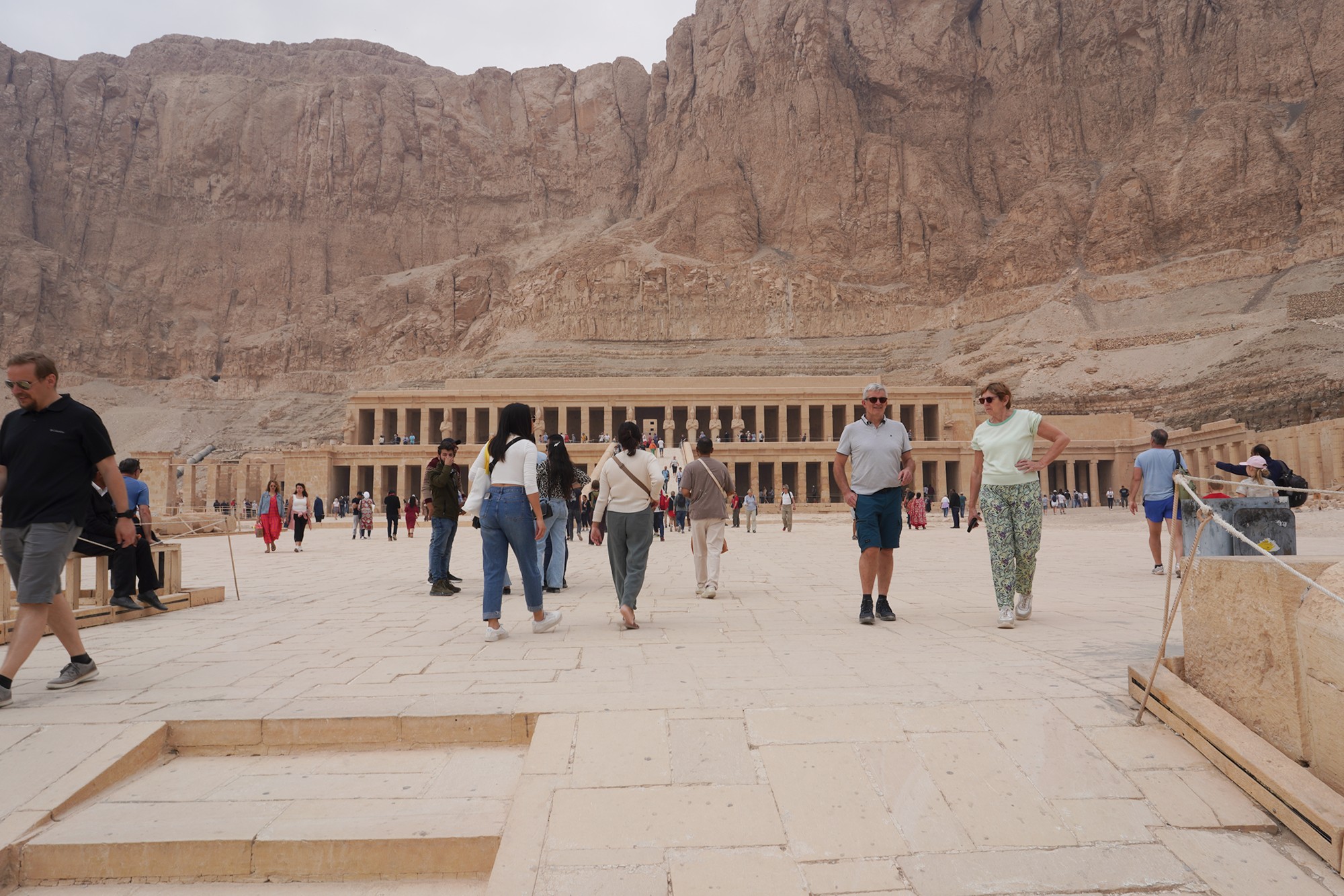
The temple, designed by the architect Senenmut, is considered a masterpiece of ancient Egyptian architecture. It is set against the cliffs of Deir el-Bahari and consists of three terraced levels connected by ramps and colonnades.
The Valley of the Kings is behind the rock cliff at the back of the temple.
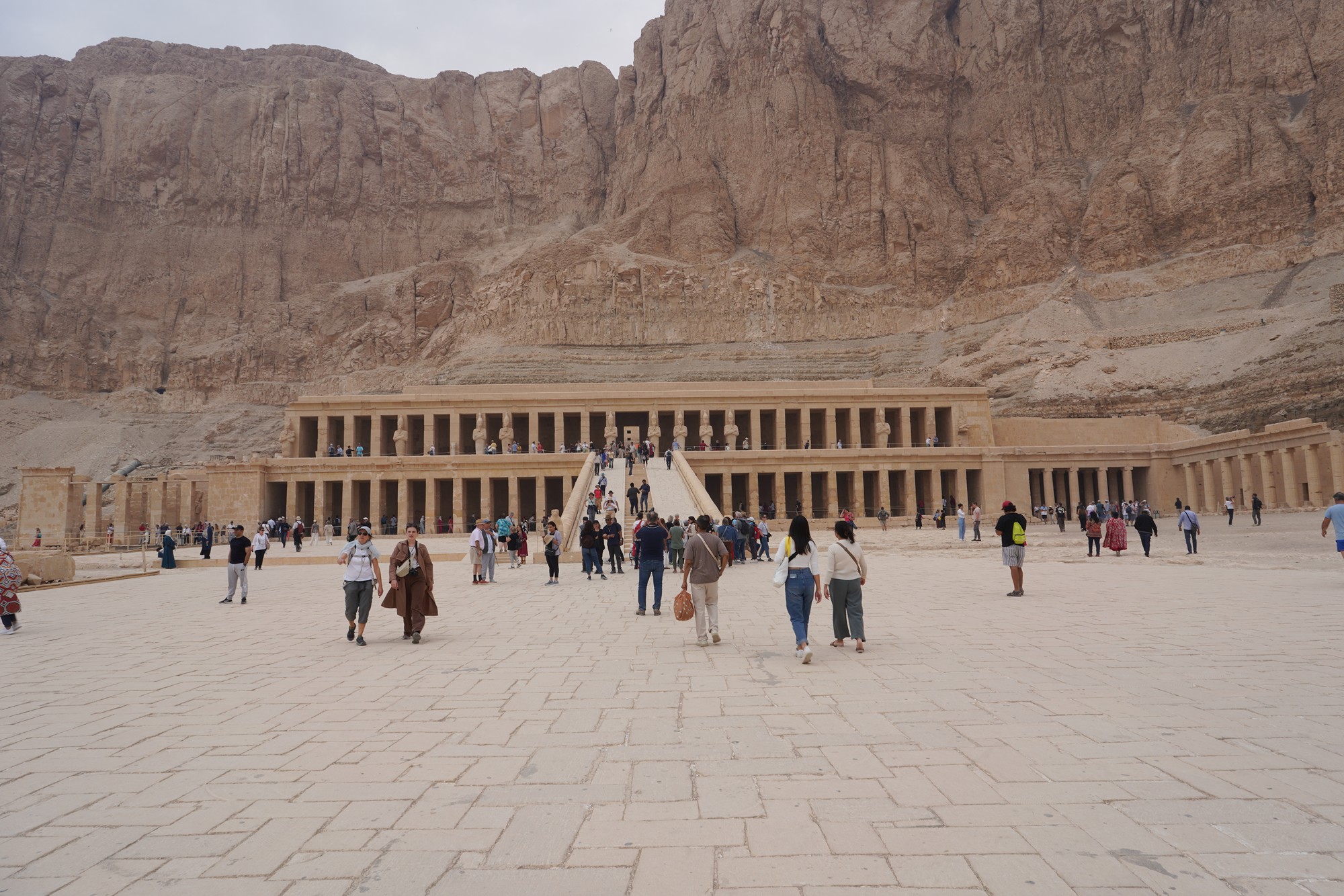


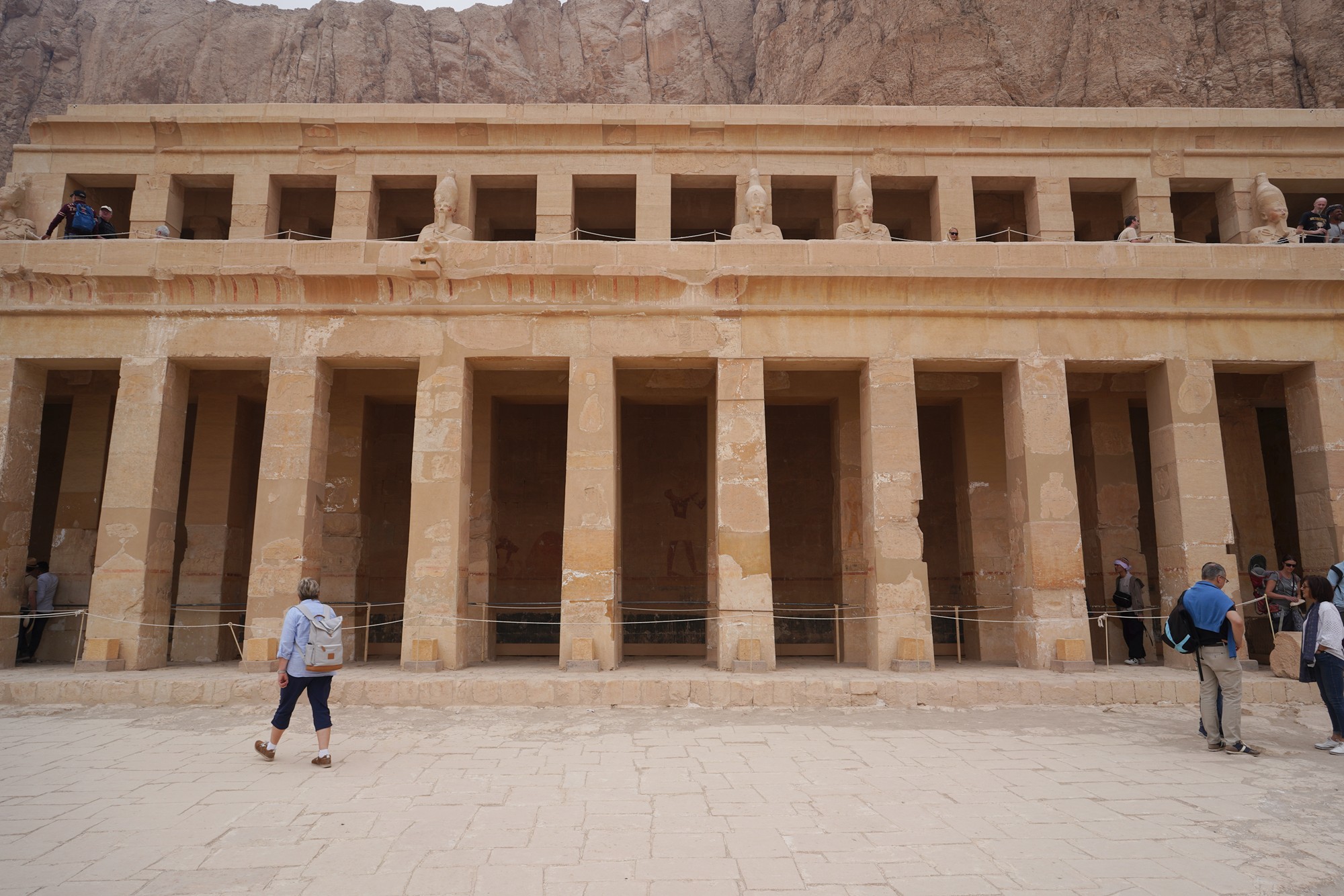
The second terrace
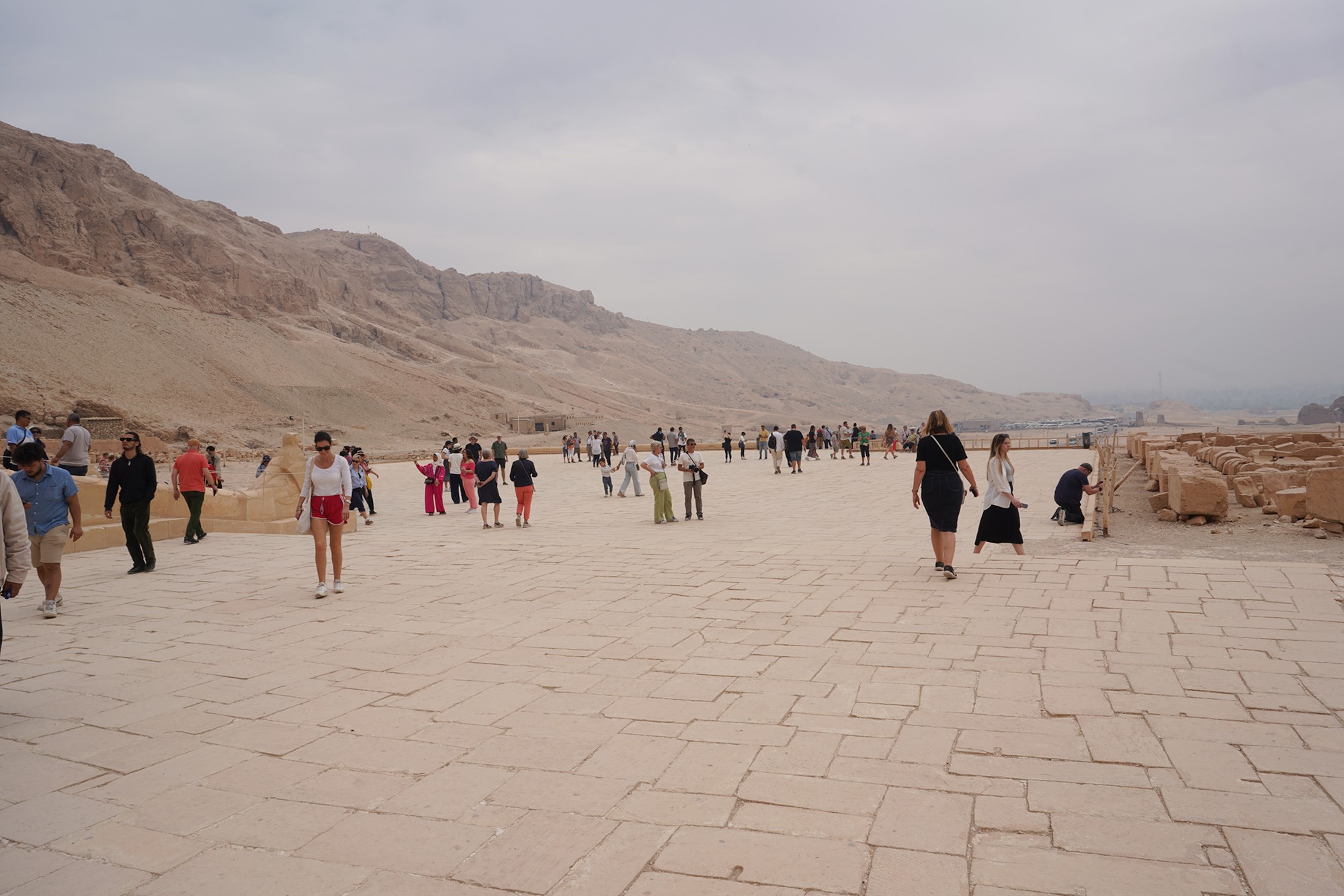
Walked up to the third terrace

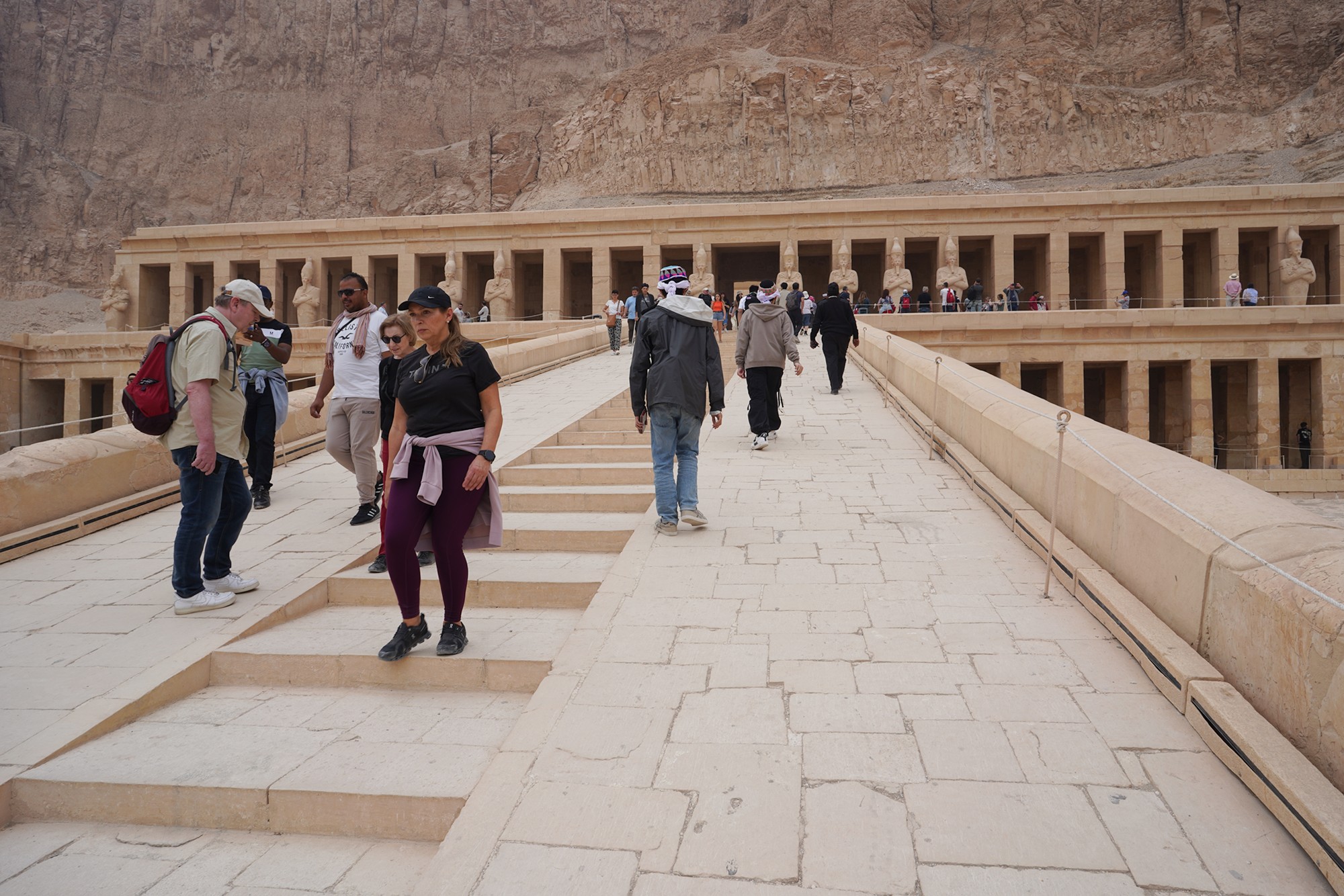
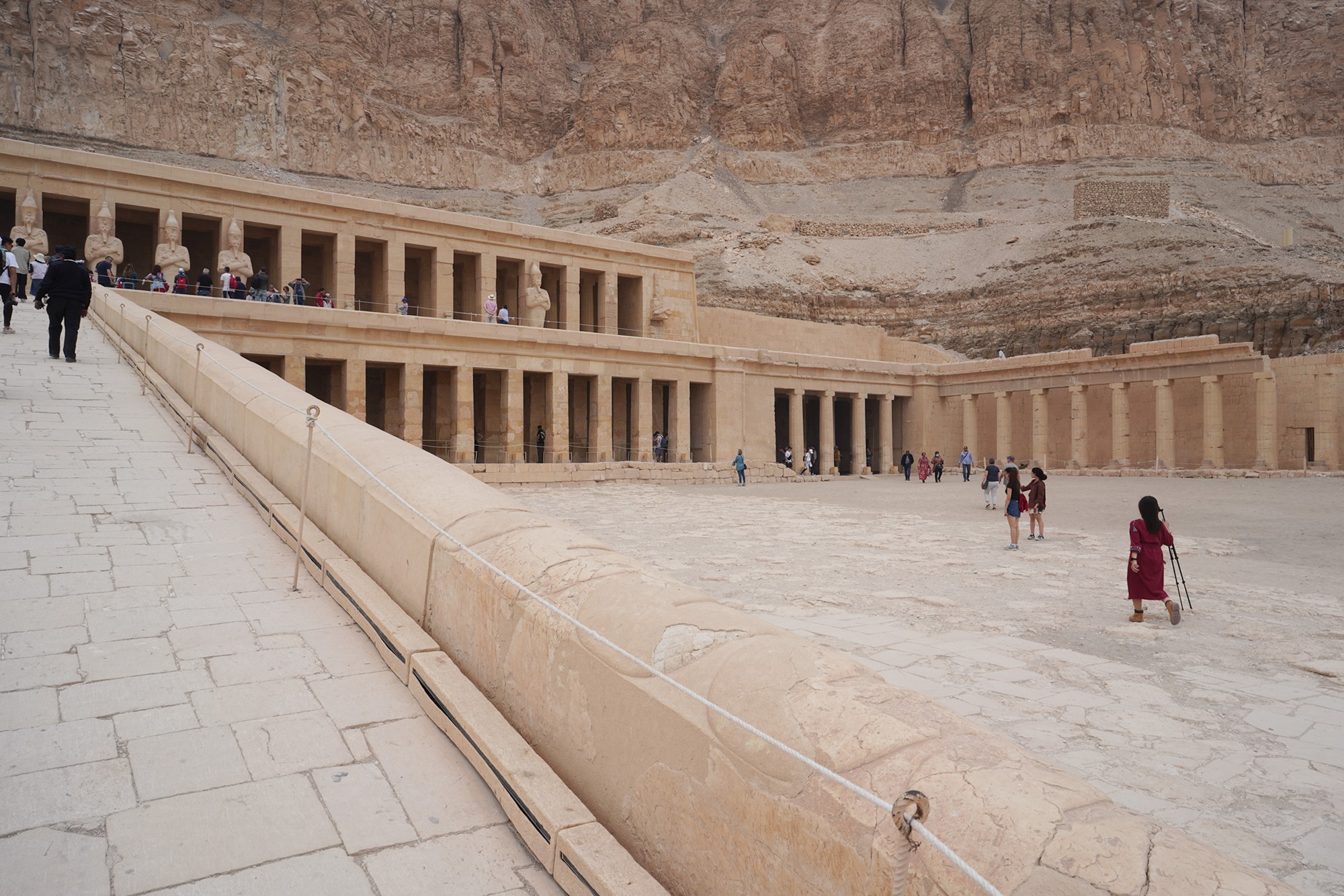
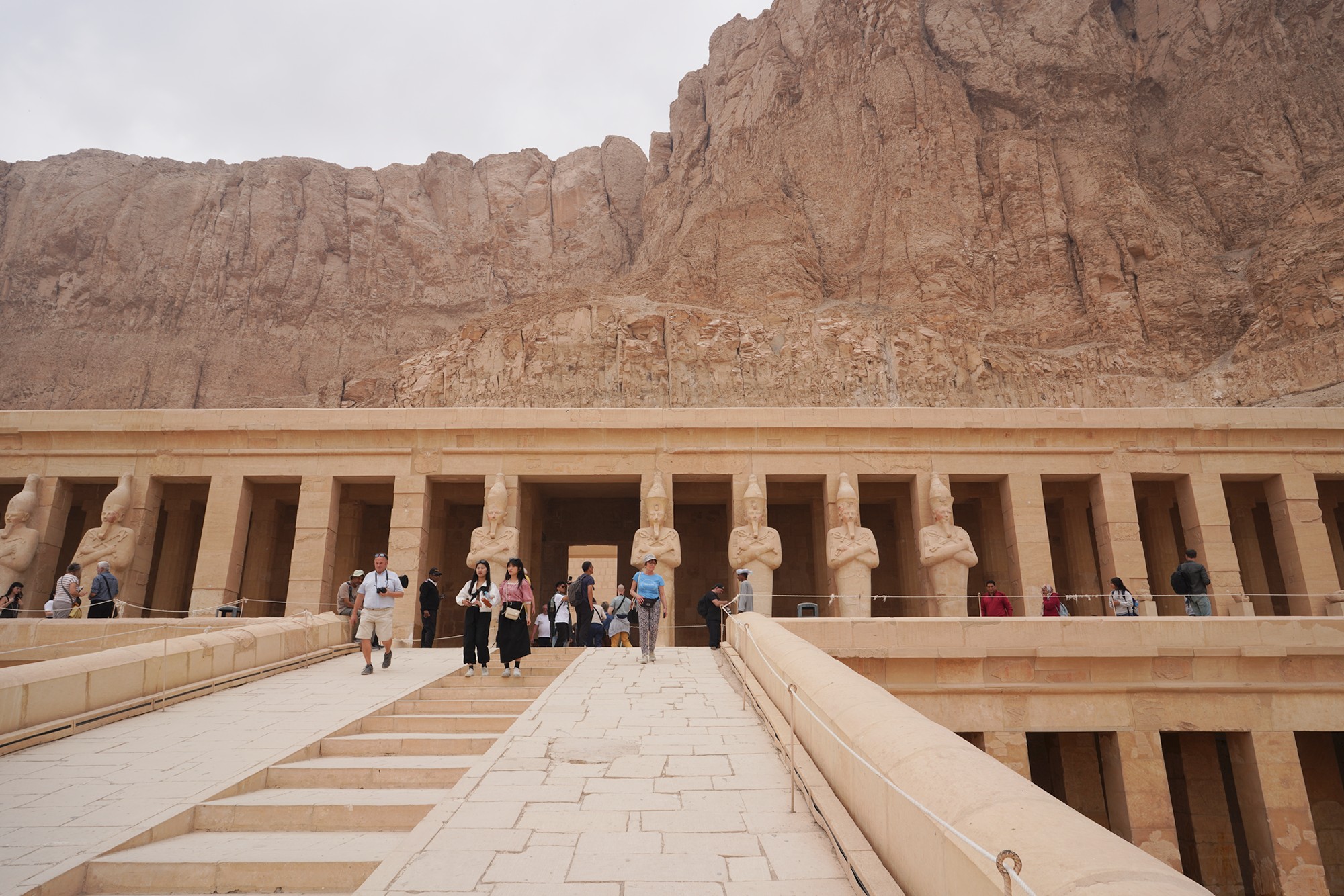
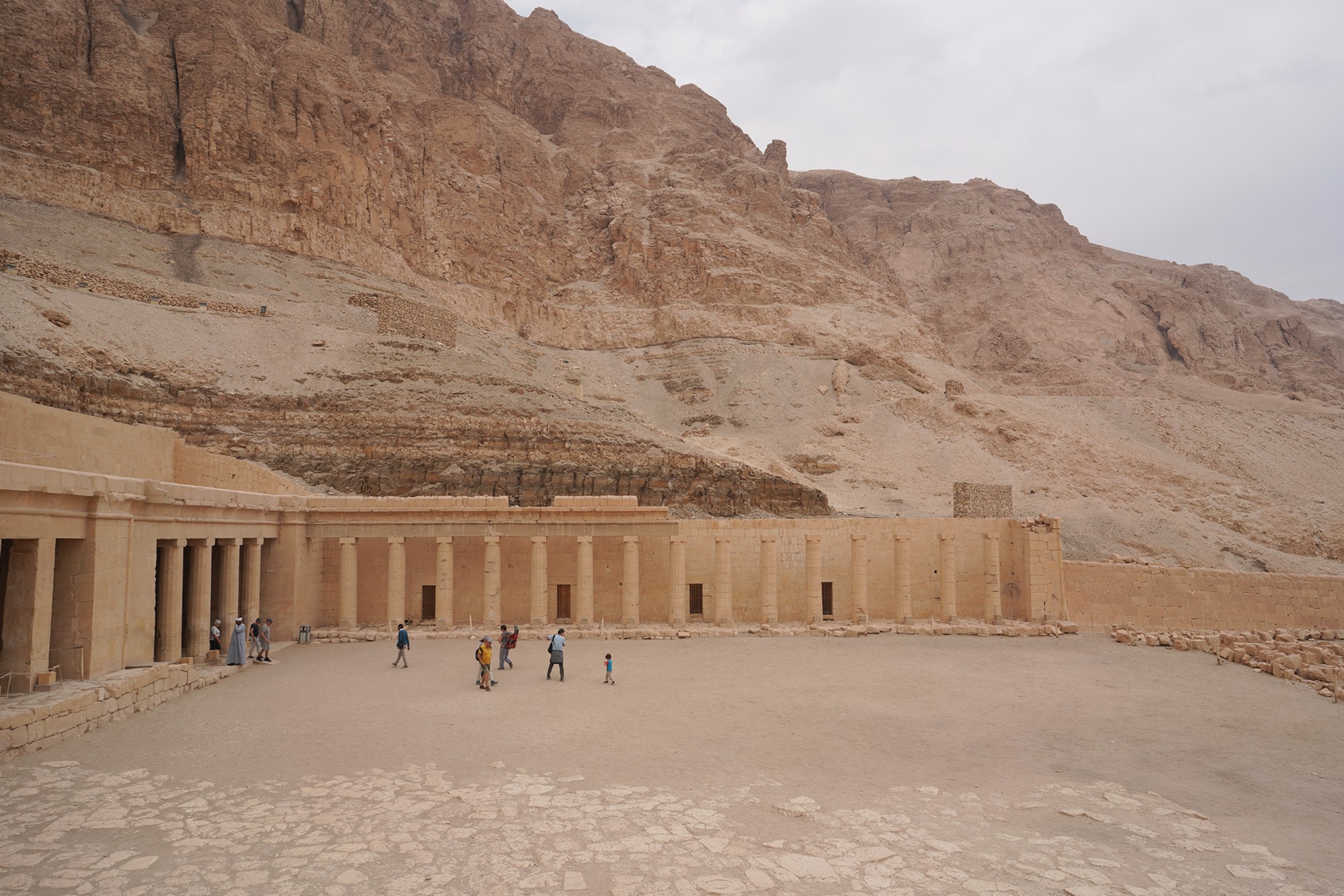
Turned around and looked back

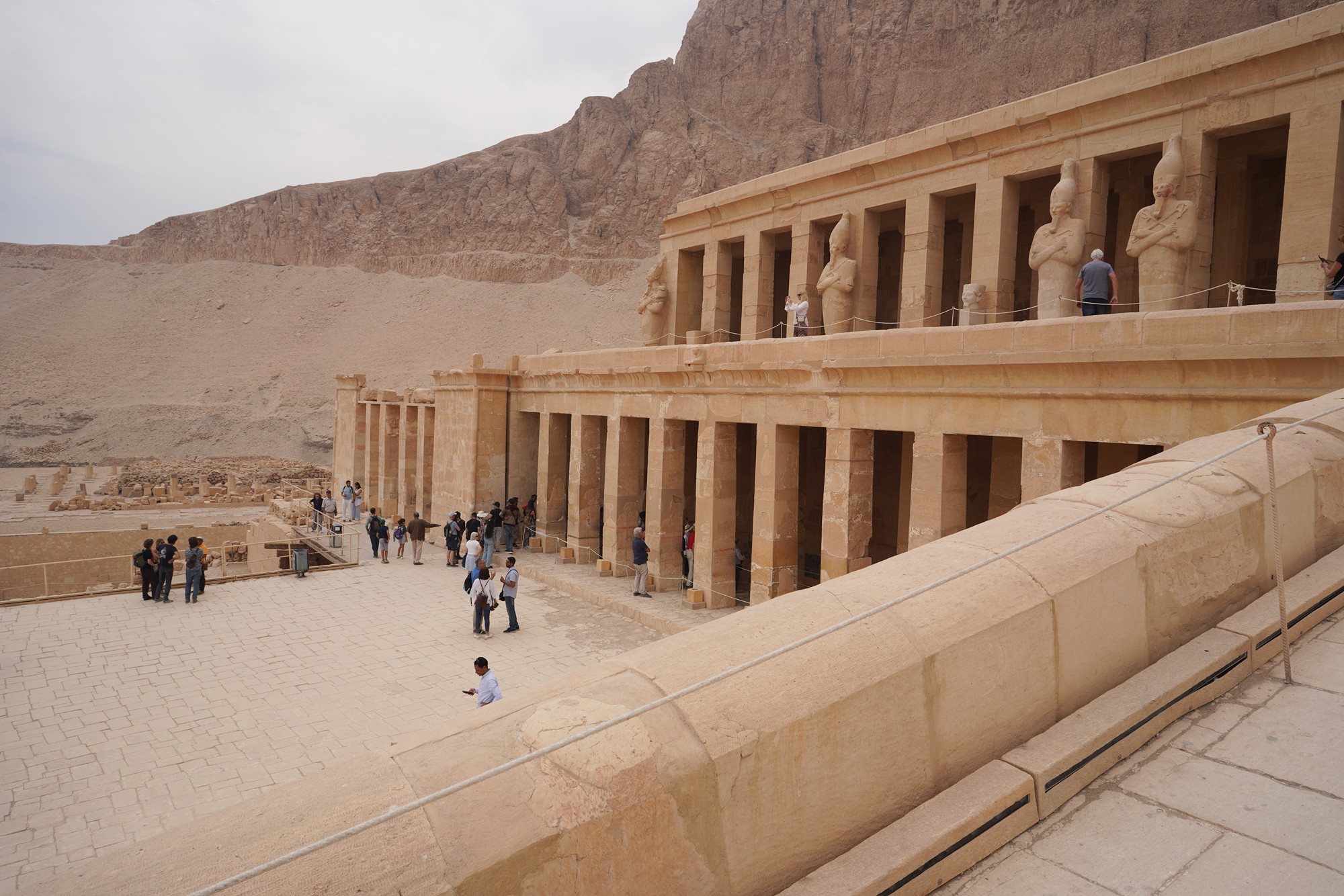
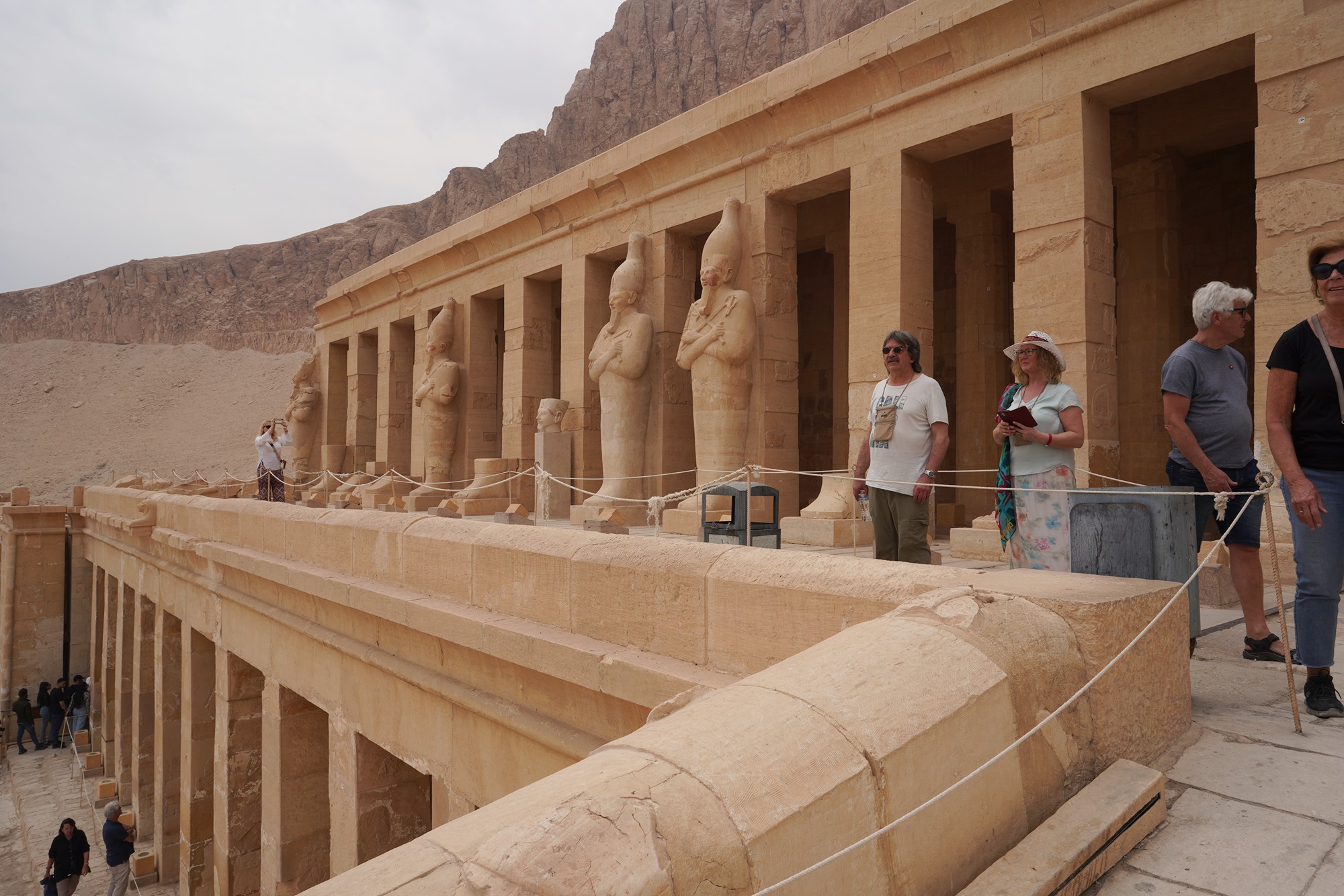
Turned around and looked back
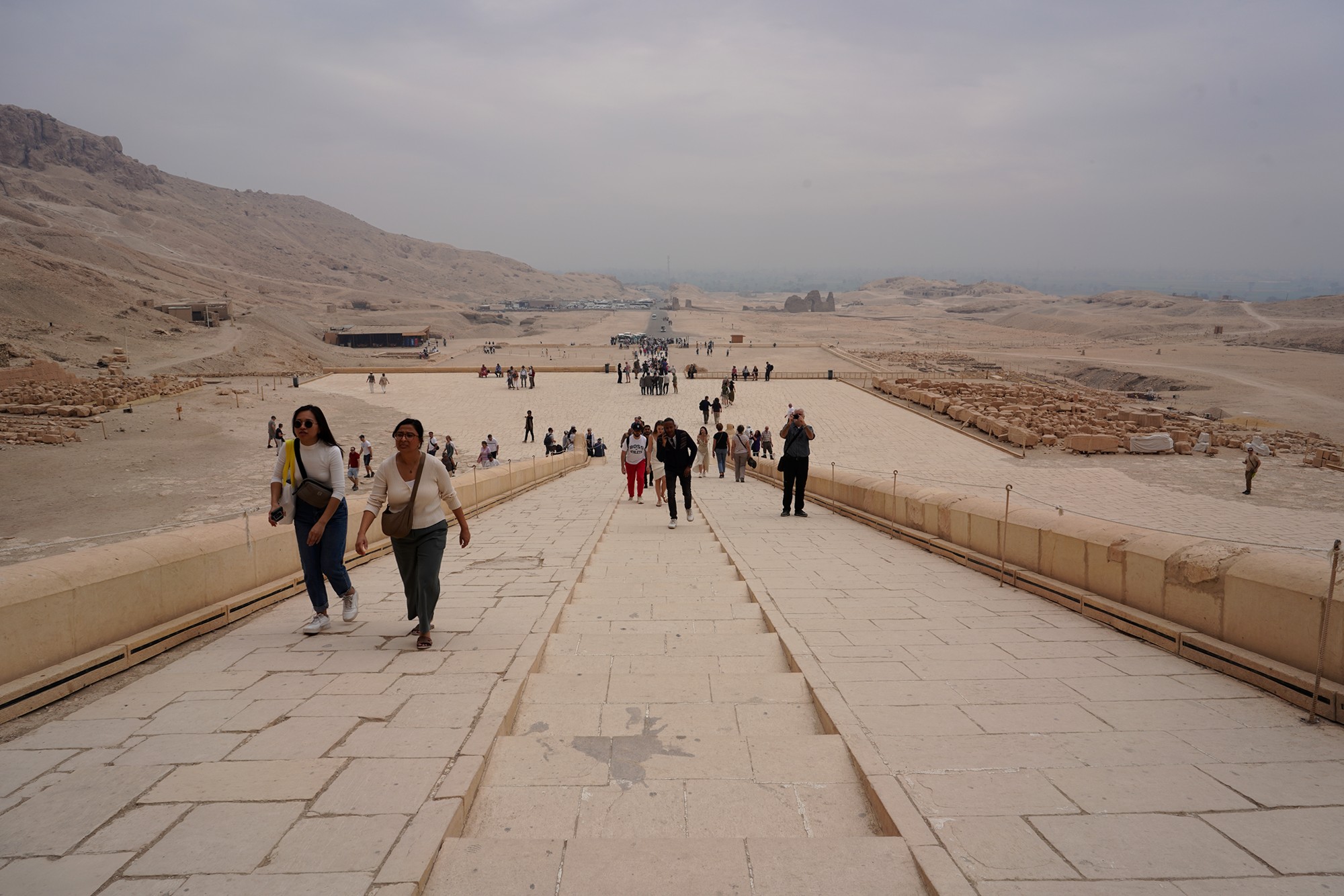
At the highest level of the temple, there is the main sanctuary or the “Holy of Holies.” This sacred space housed the cult statue of the deity to whom the temple was dedicated, in this case, the god Amun. The sanctuary was the most restricted area and only accessible to the highest priests and the pharaoh.

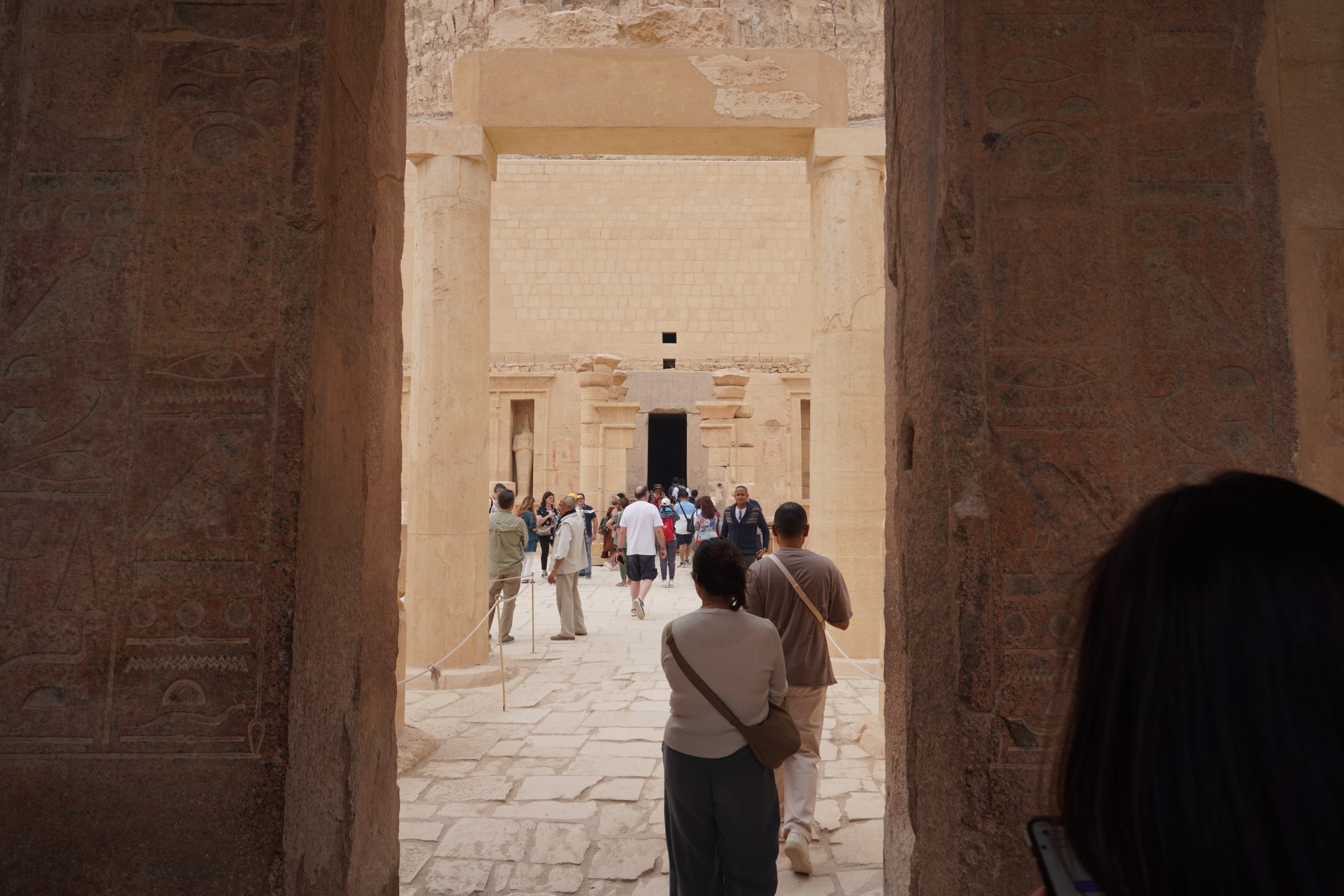
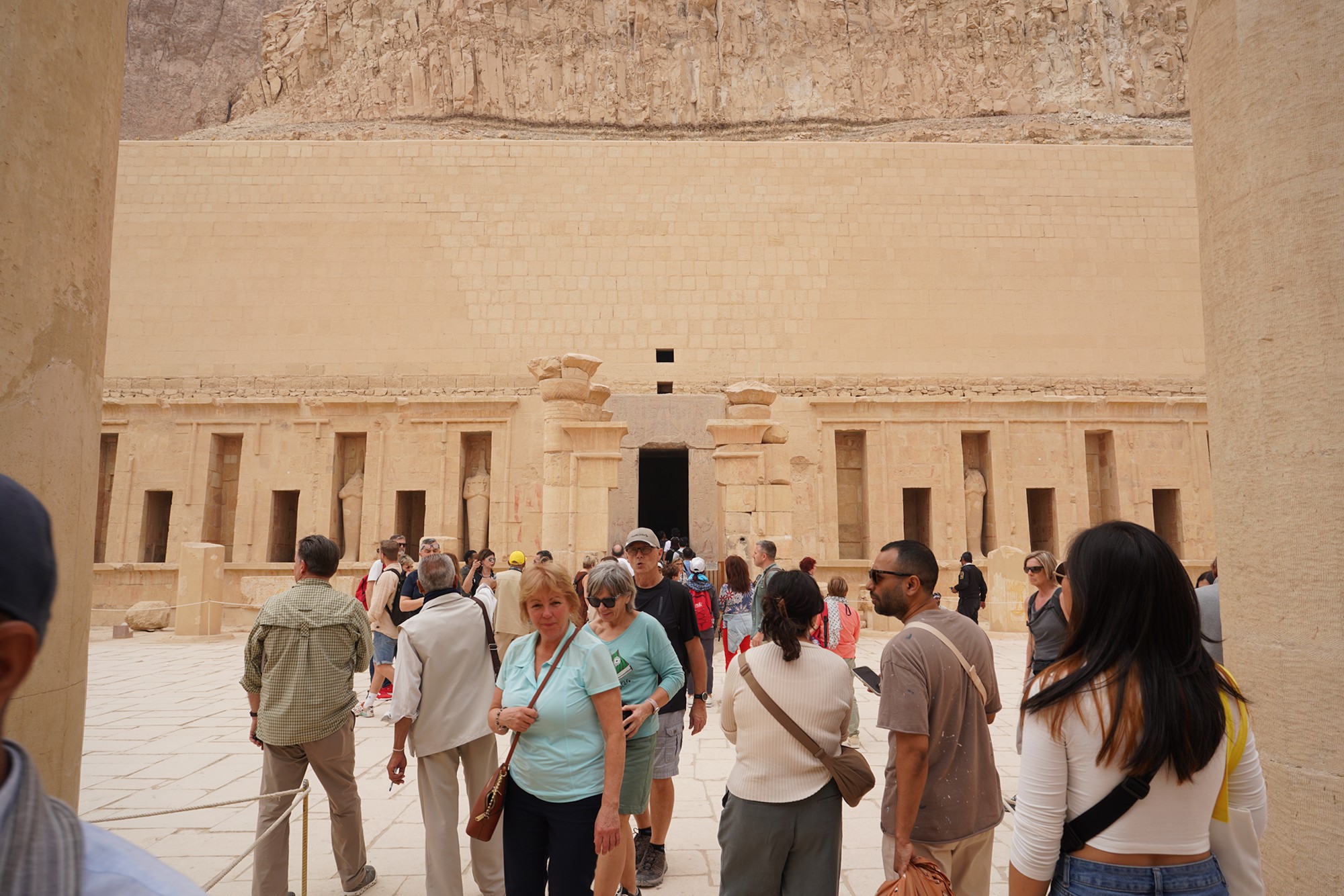
Panoramic view of the courtyard
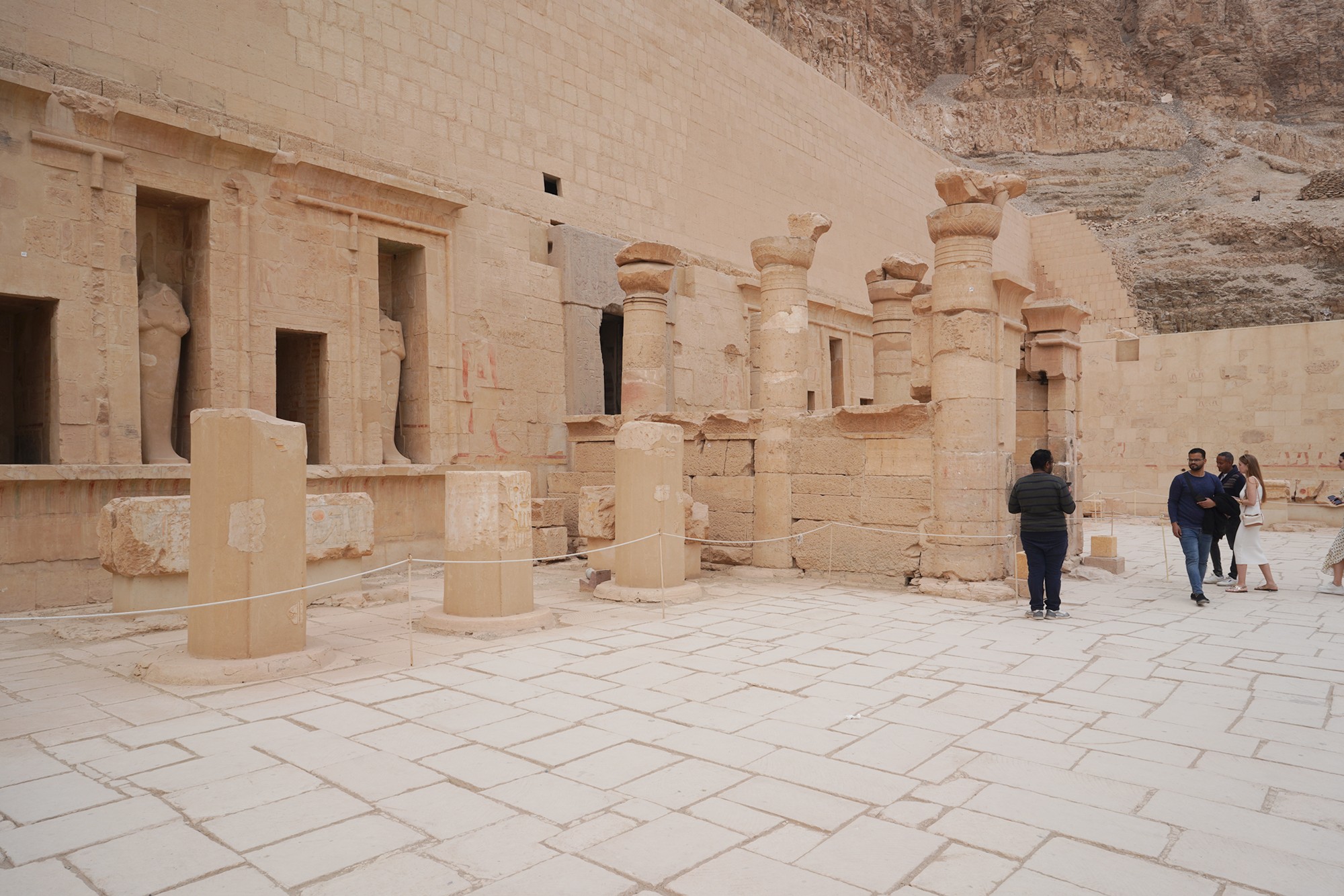
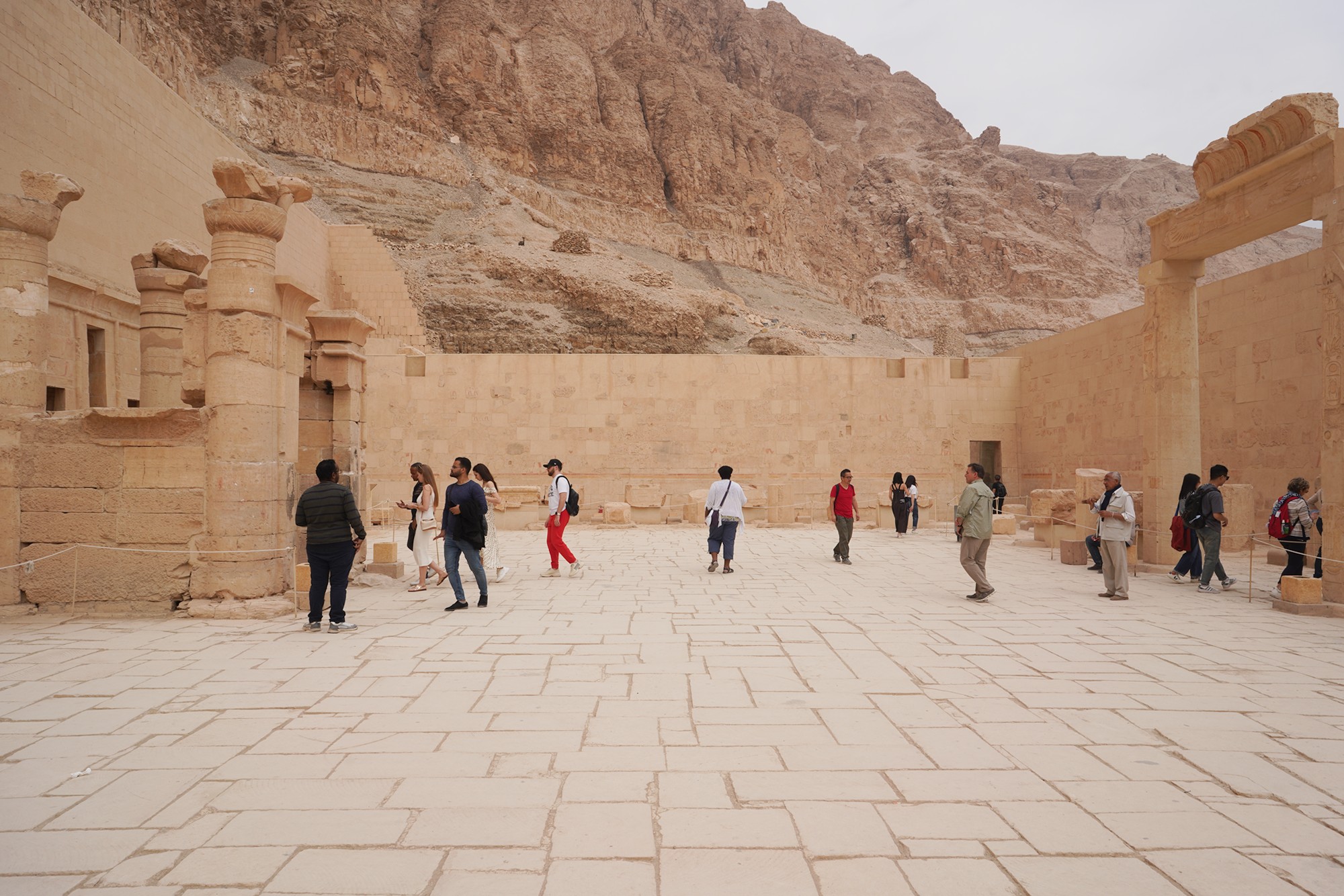

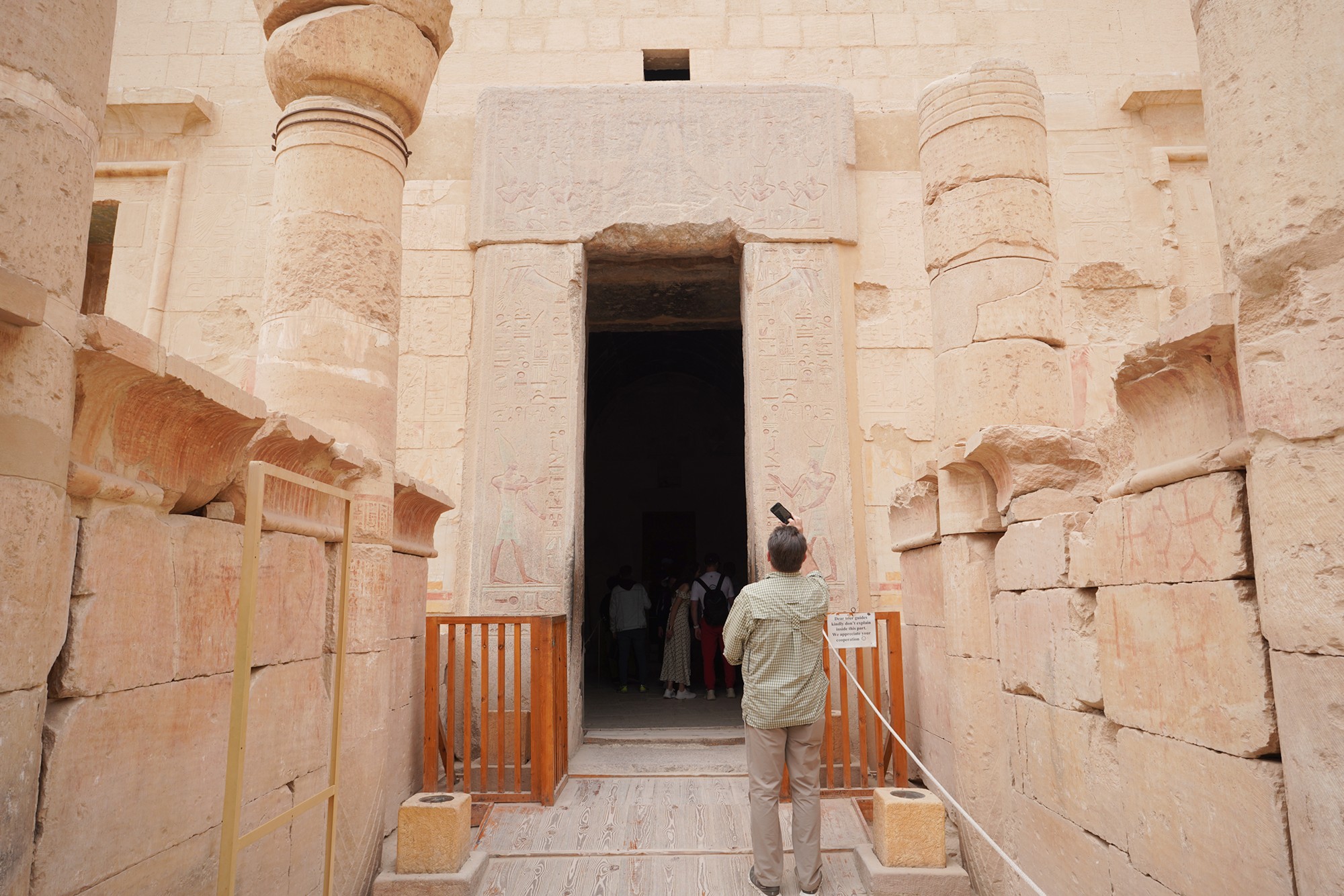
The sanctuary


Walked back out
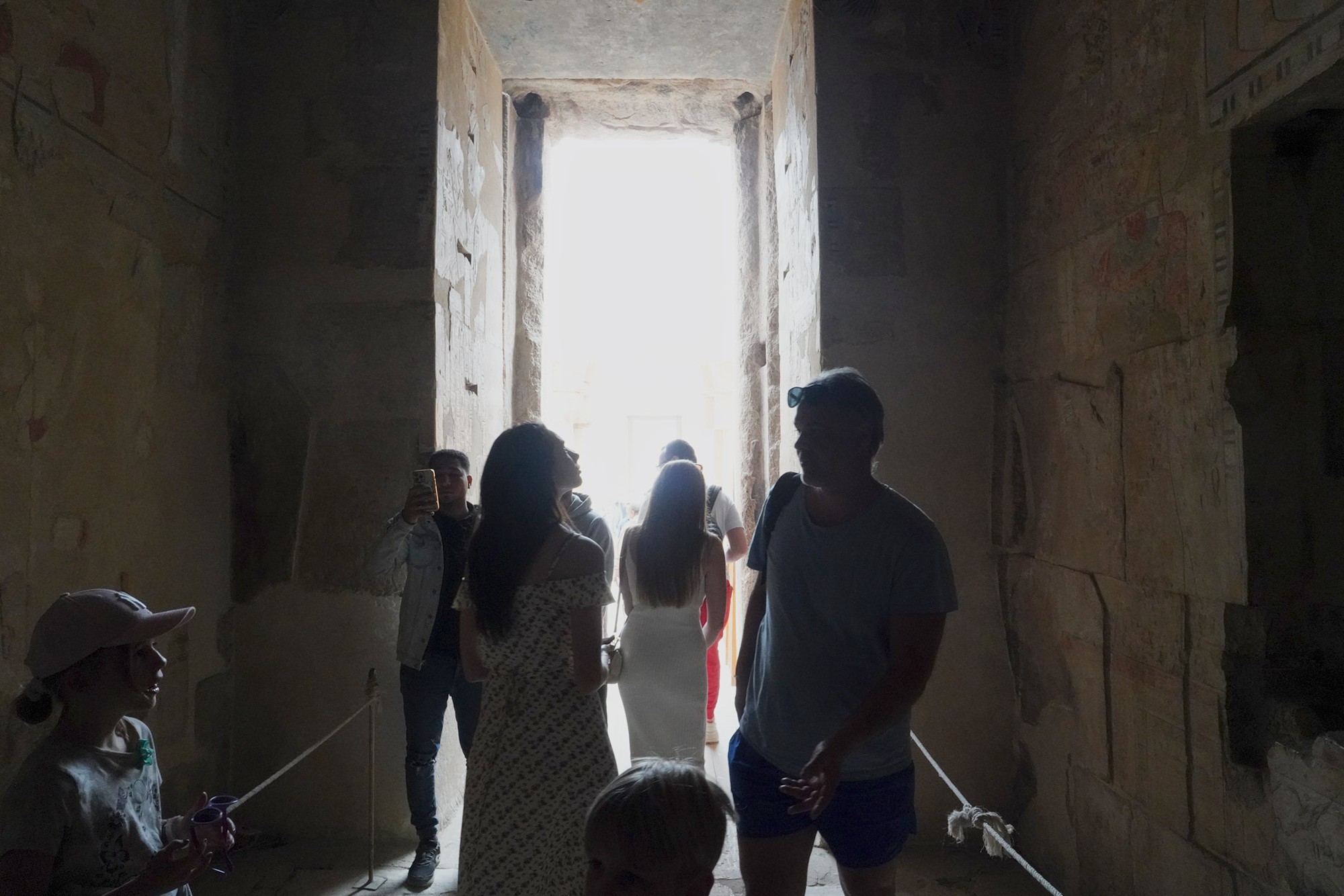
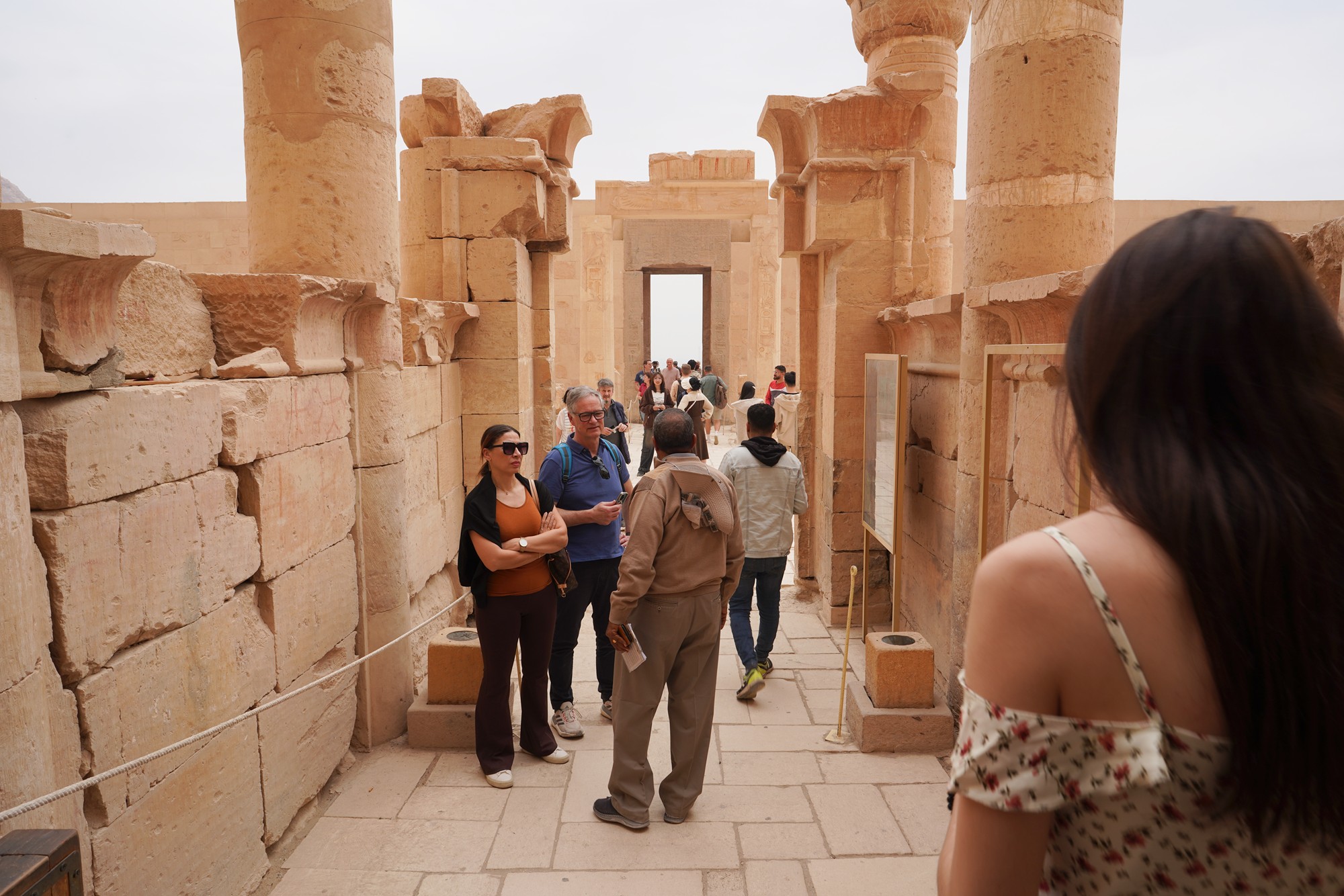

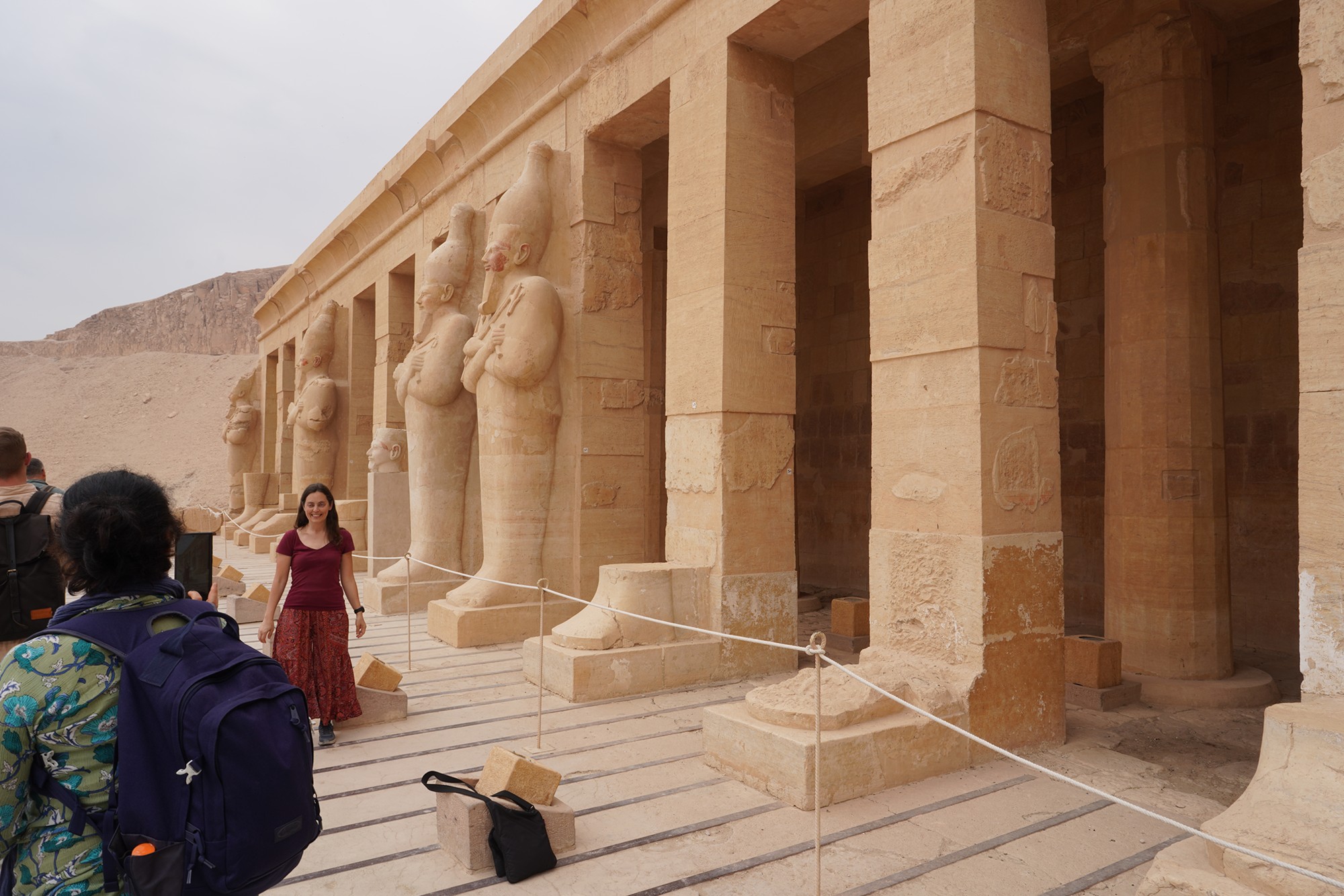
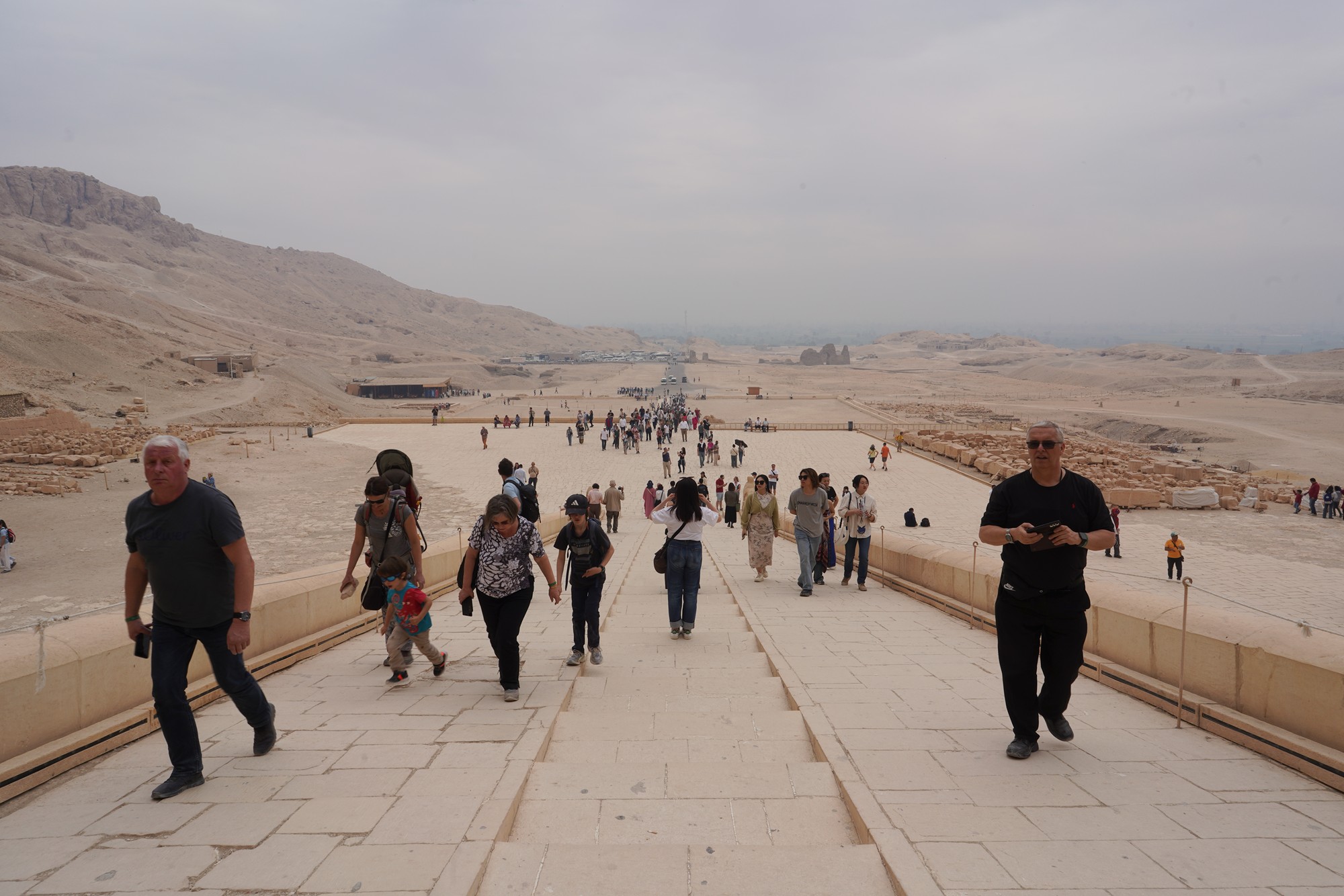
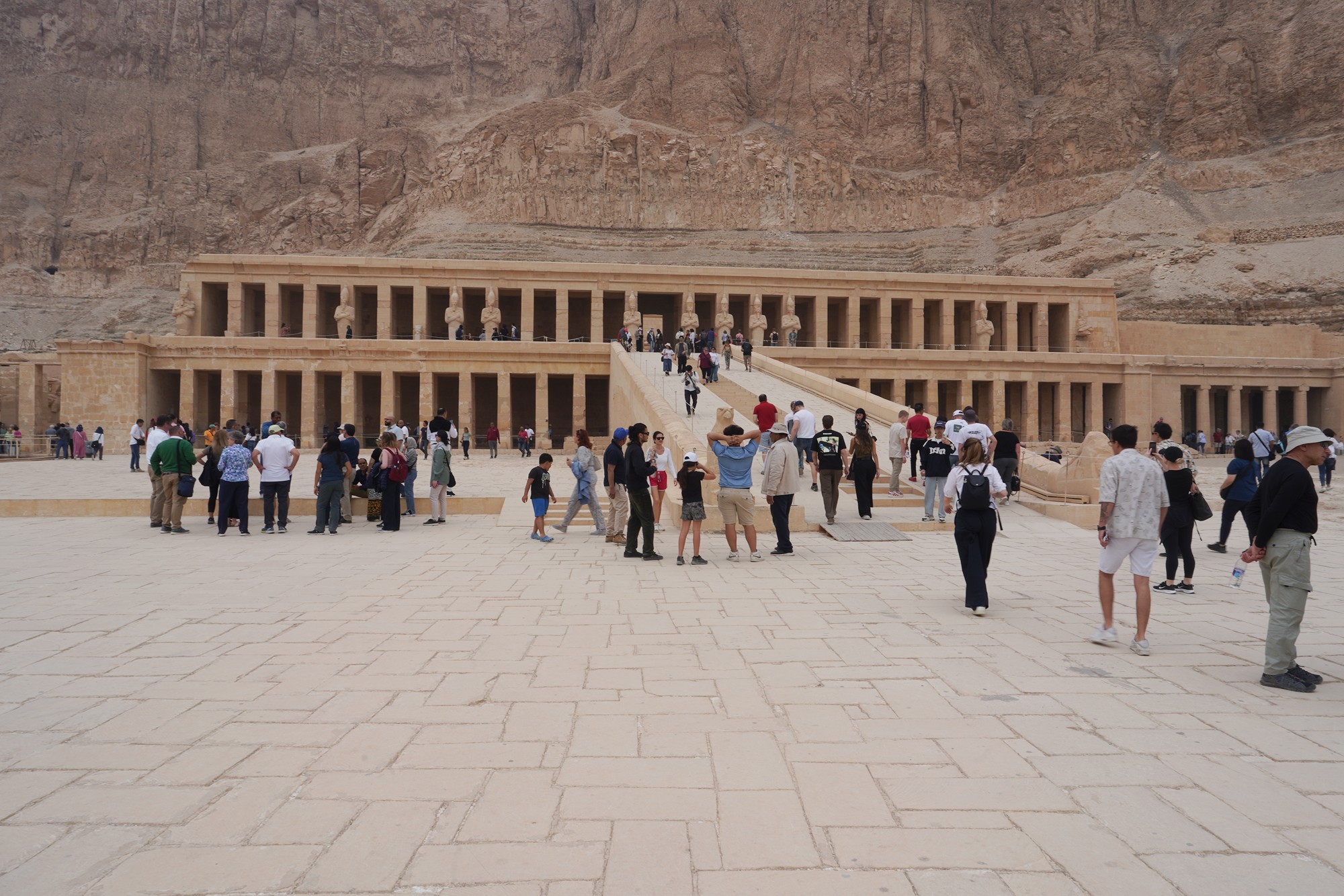
On the middle terrace again. I saw many people entering the building area.
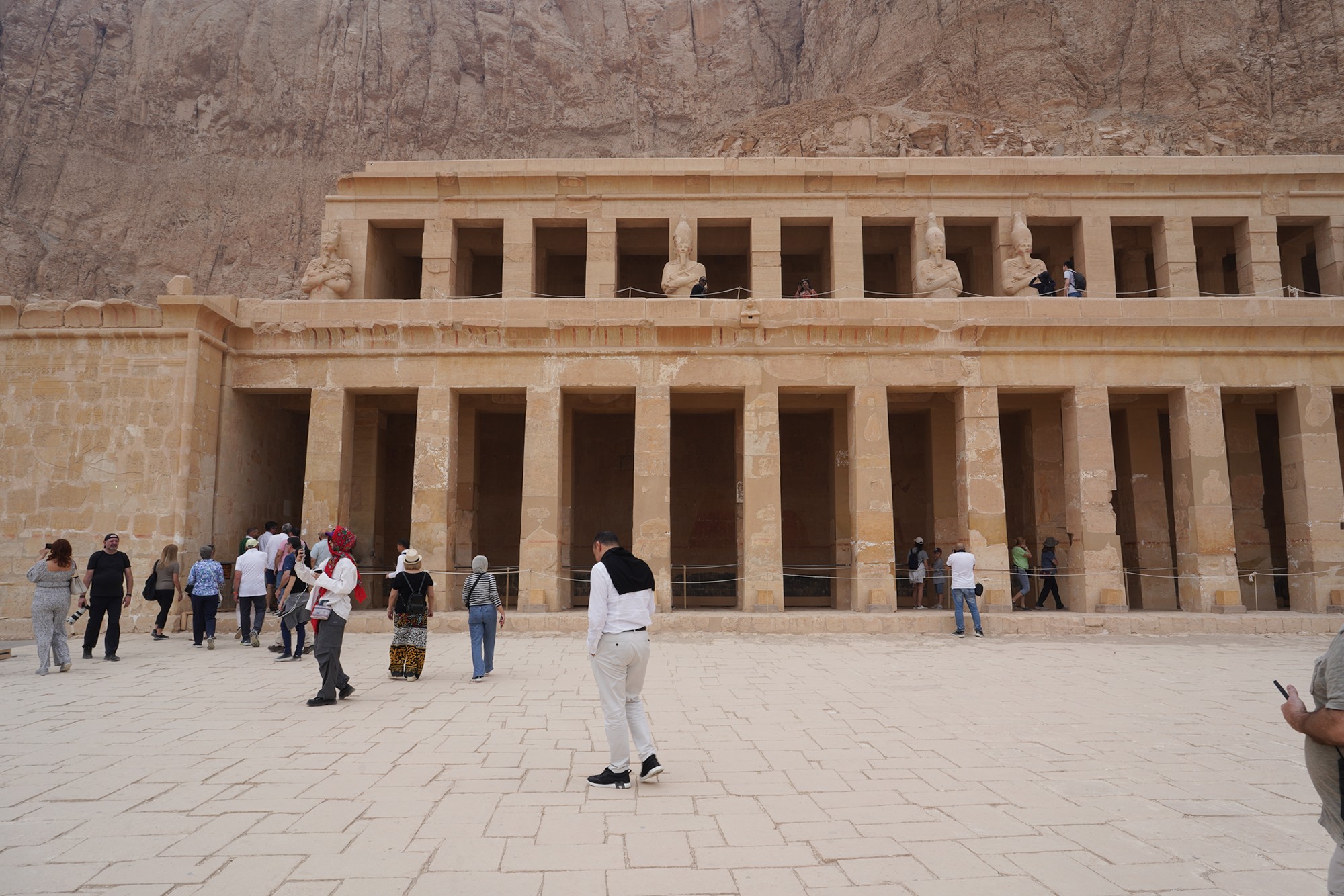
Scene at the left side of the temple

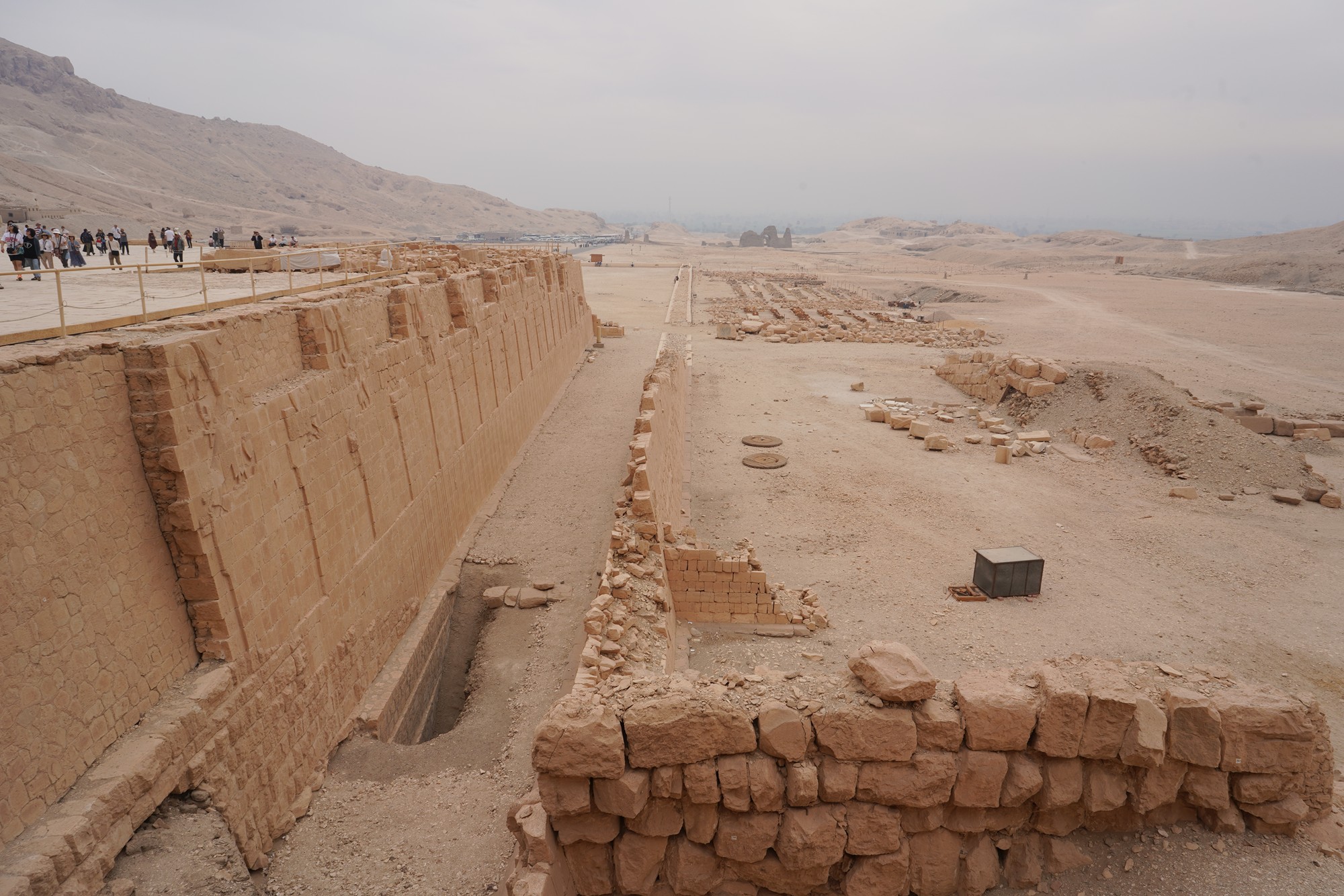

I wondered what was inside where the people entered.

So I followed them
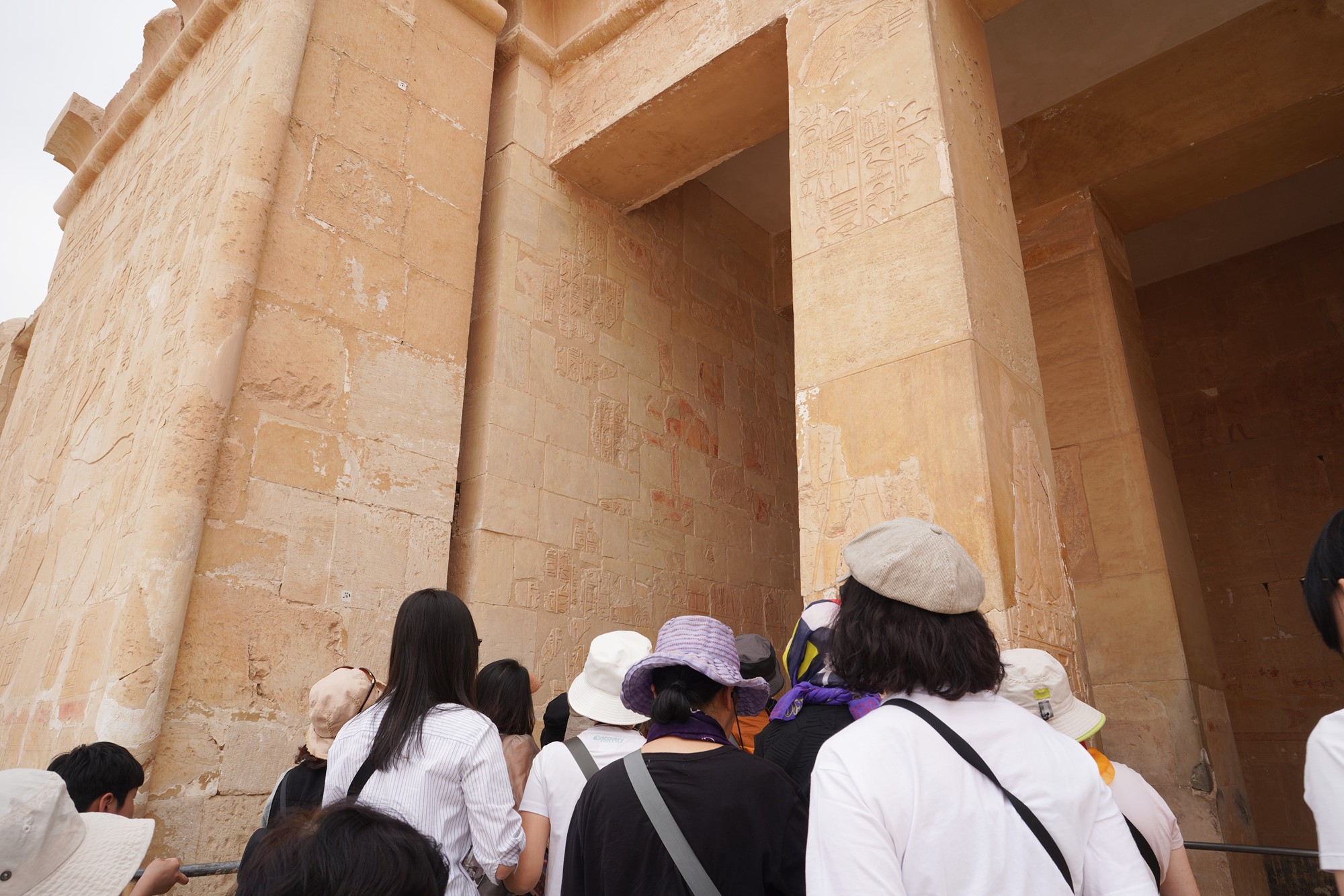
To me, it was nothing noticiable.


Another location that we stopped location was Colossi of Memnon.
The Colossi of Memnon are two massive stone statues of Pharaoh Amenhotep III, situated on the west bank of the Nile River. The statues depict Amenhotep III, the ninth pharaoh of the Eighteenth Dynasty of ancient Egypt, who reigned from around 1386 to 1353 BCE. Amenhotep III is known for his extensive building projects and the prosperity of his reign.
The purpose of the Colossi was to guard the entrance to Amenhotep III’s mortuary temple, which was dedicated to the worship of the pharaoh and various deities. The temple was an expansive complex, but much of it has been lost to the ravages of time and natural disasters.


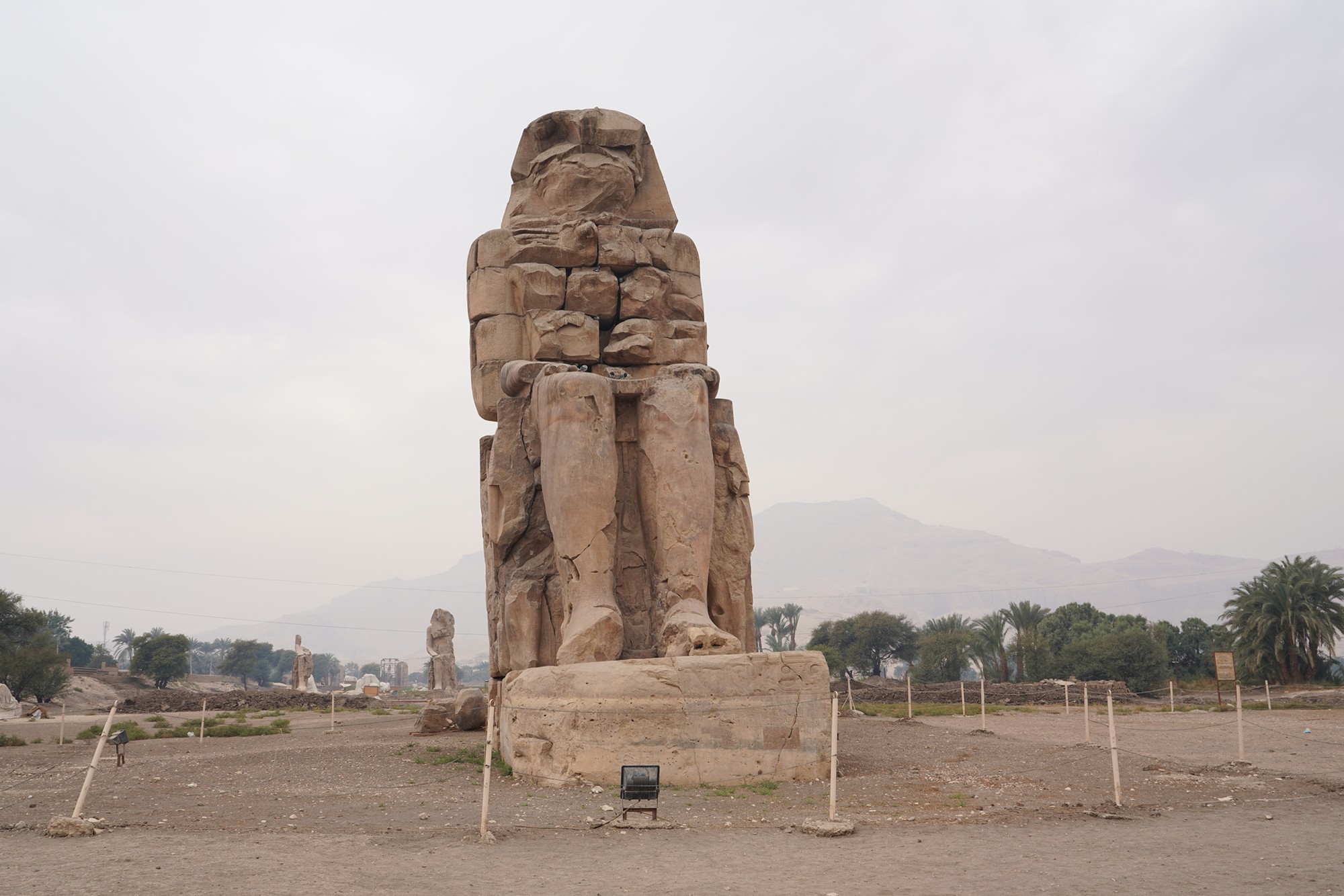
After the morning Westbank tour, we had a lunch buffet before heading to the Eastbank to see Karnak and Luxor temples.
